Galapagos Species Database
The Galapagos Species Database shares the information about the species from our Natural History Collections.
Tournefortia psilostachya
palito negro, smooth stemmed tournefortia, black stick
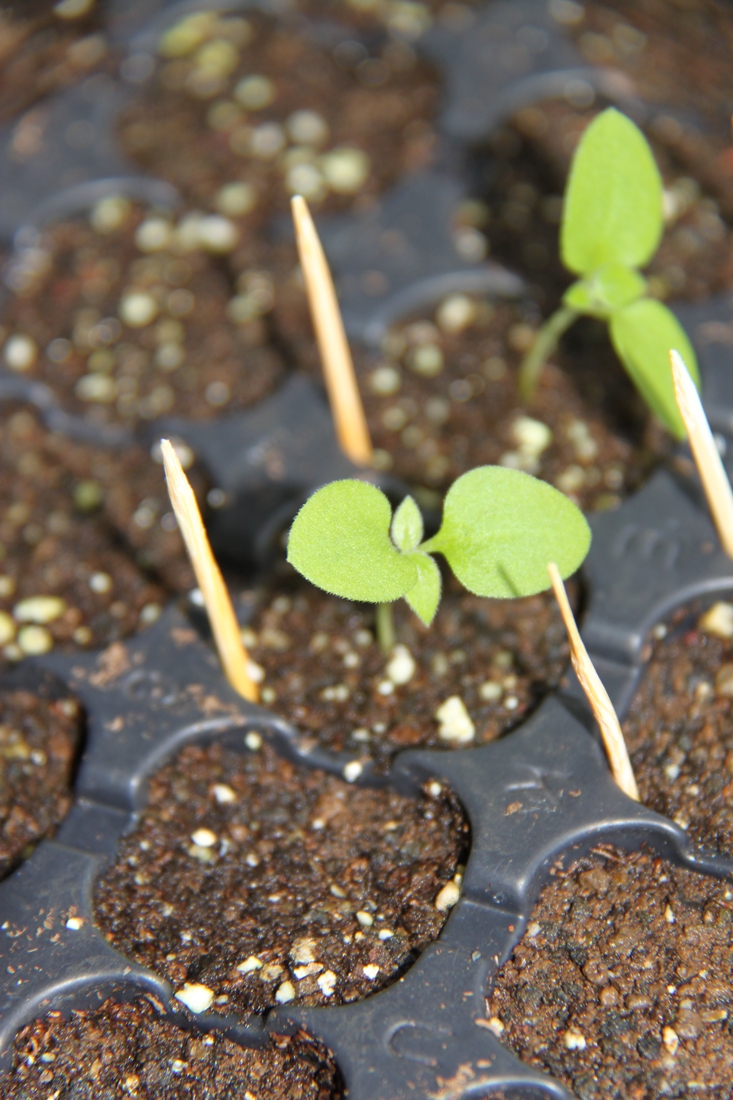
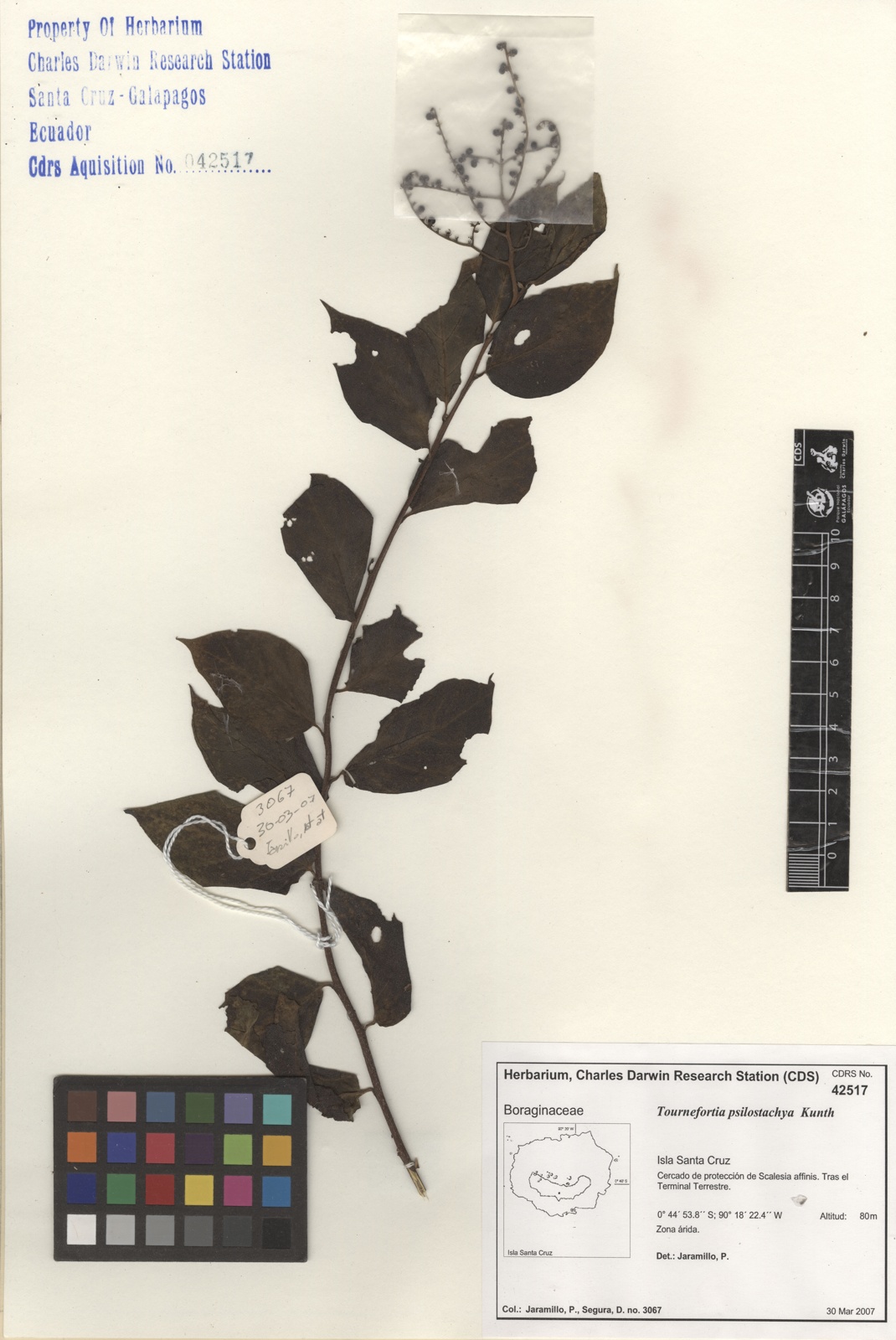
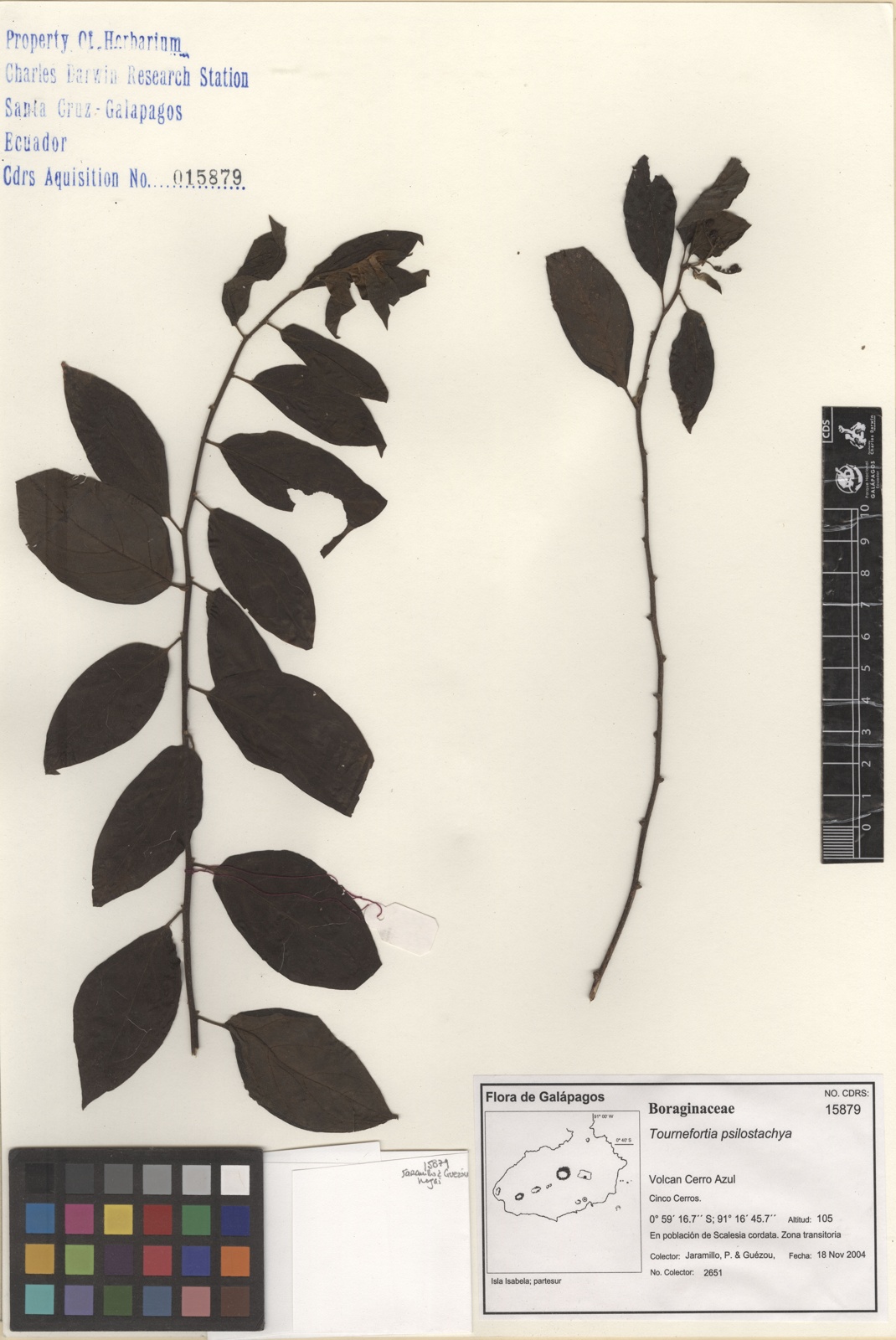

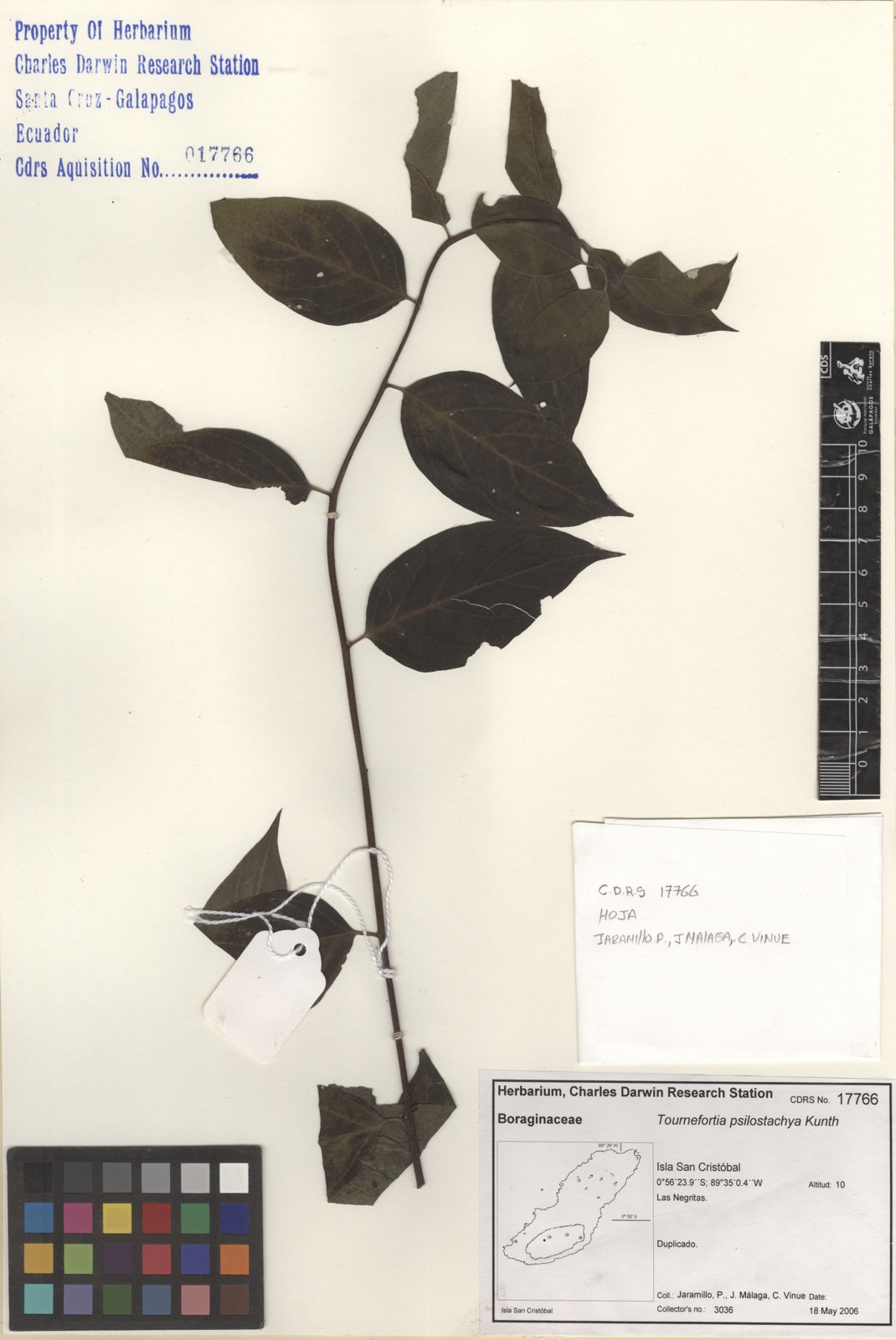

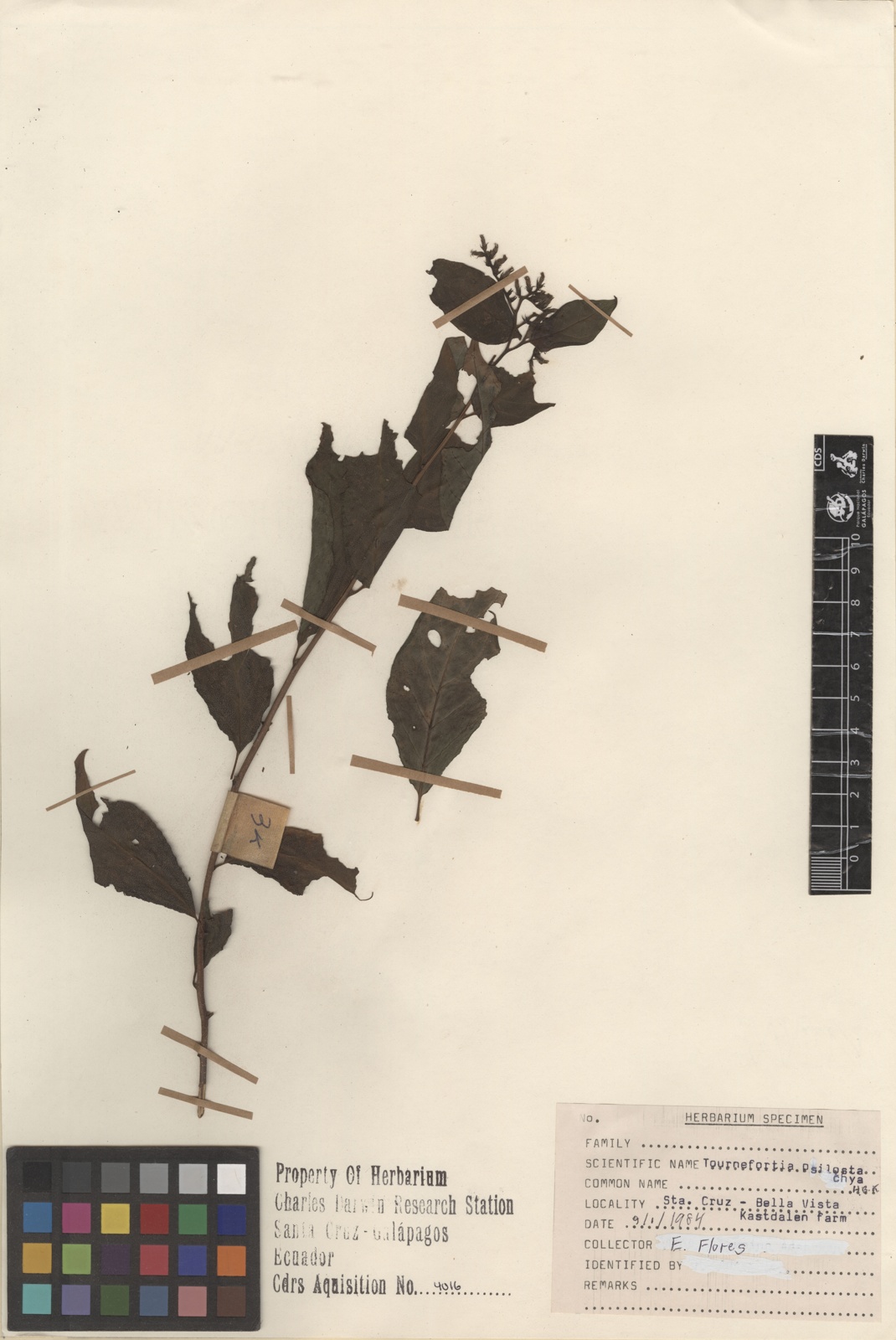
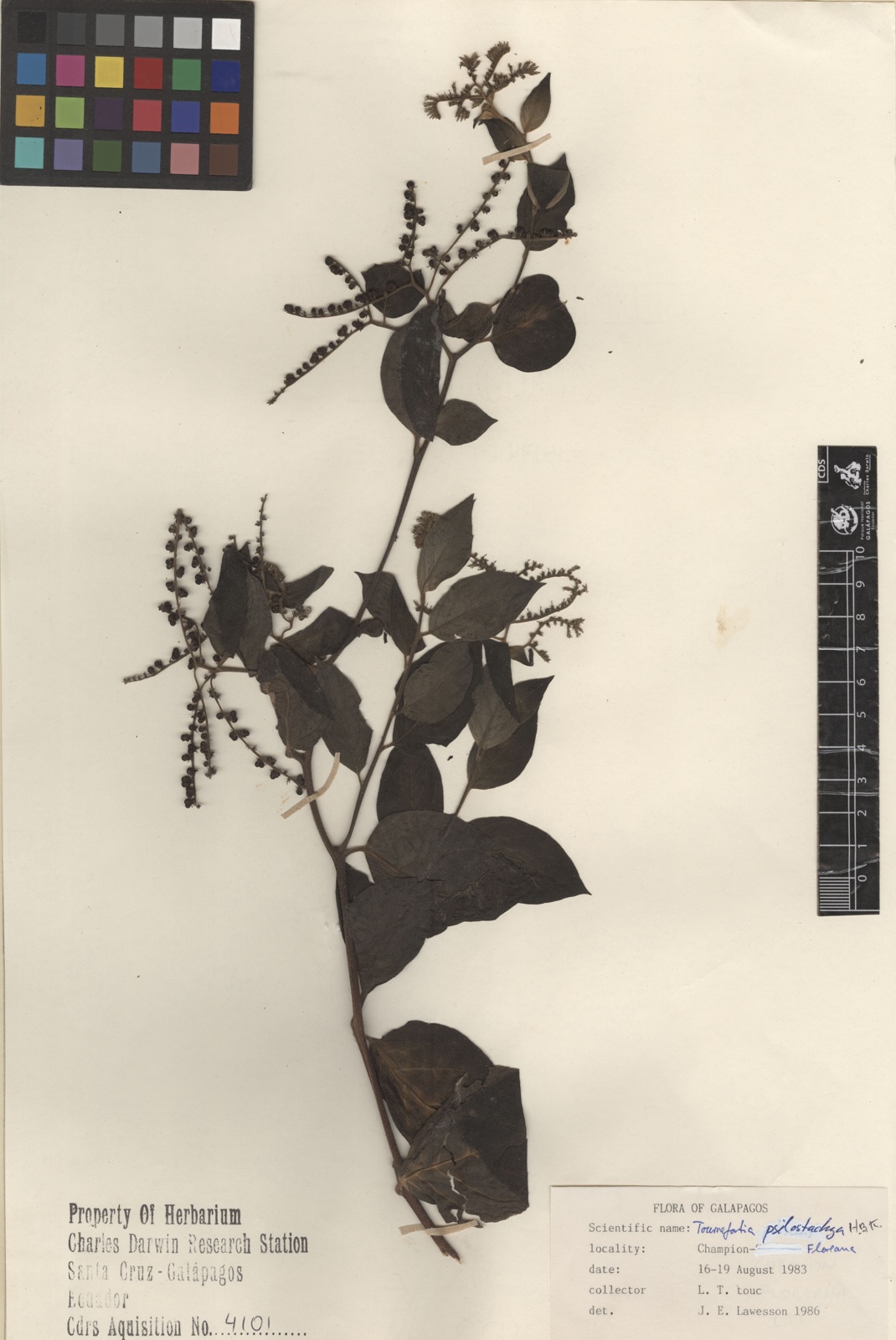
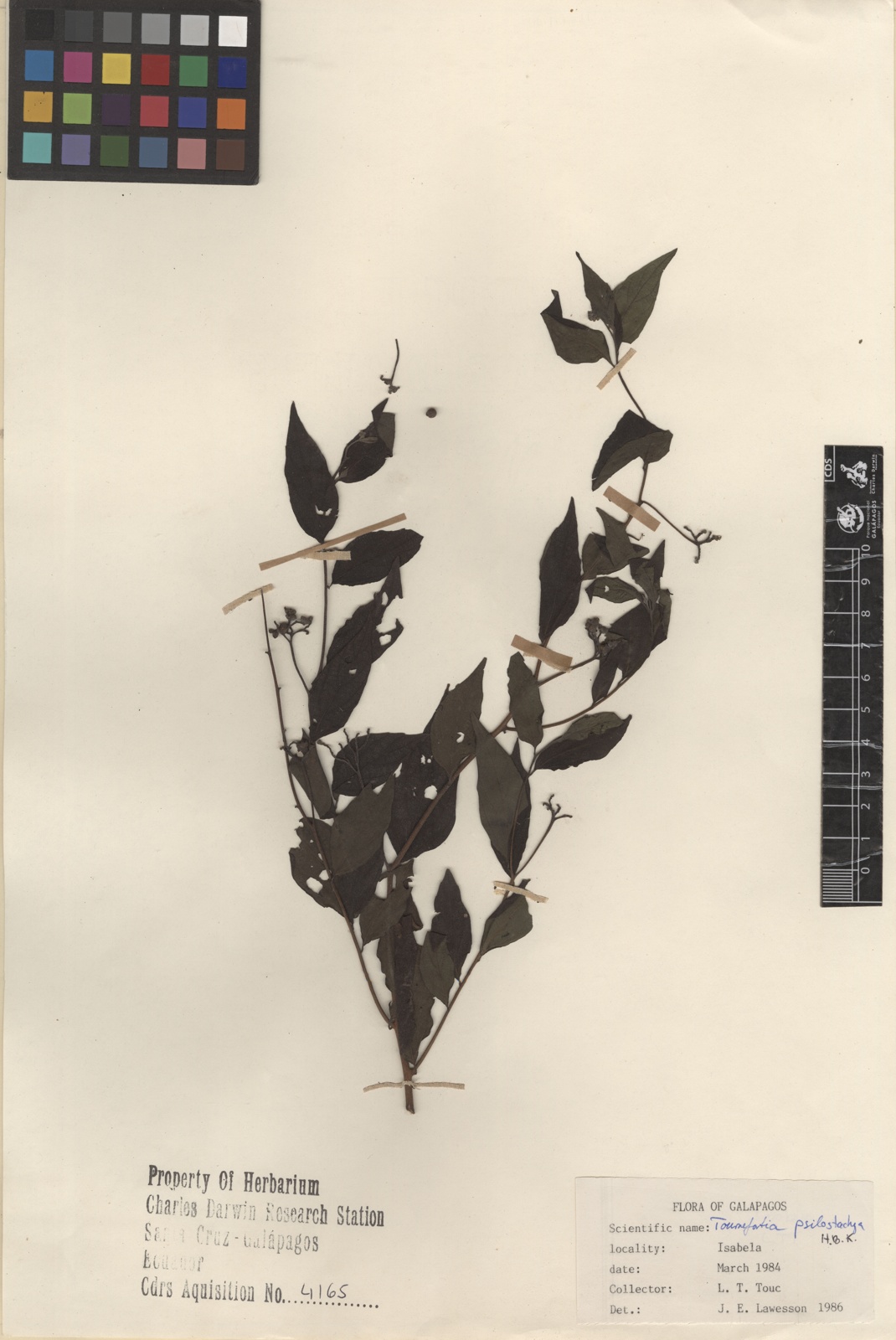
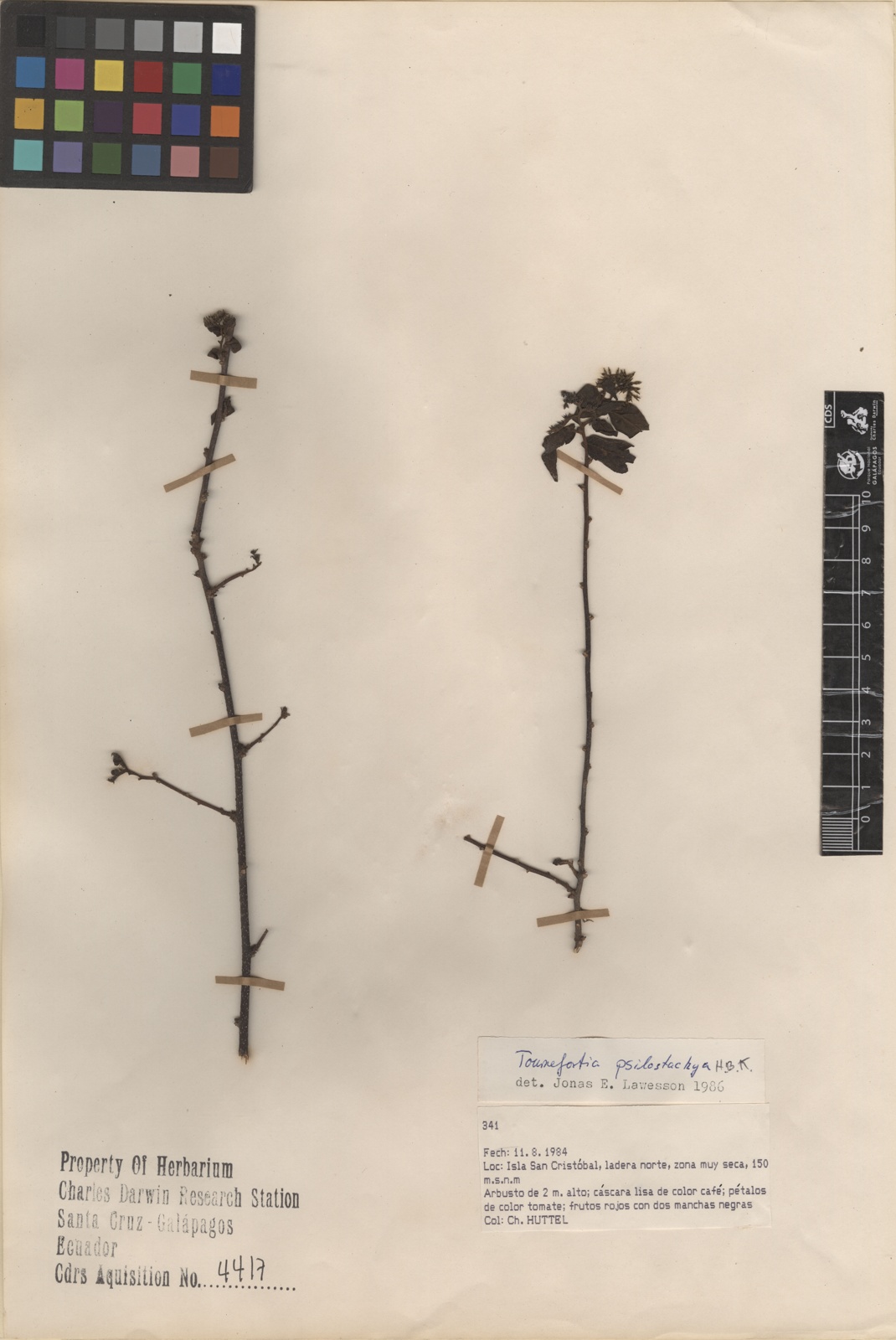
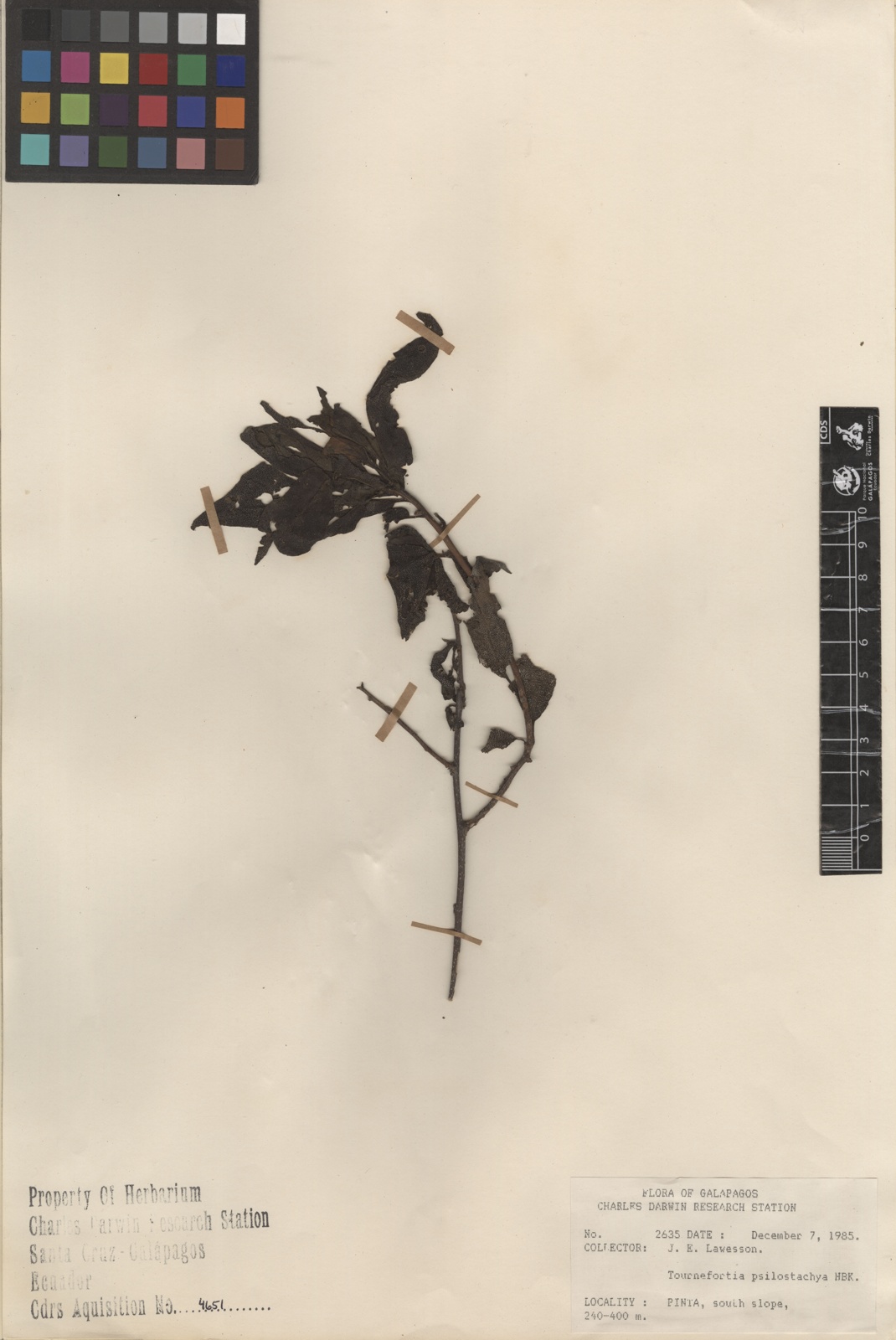
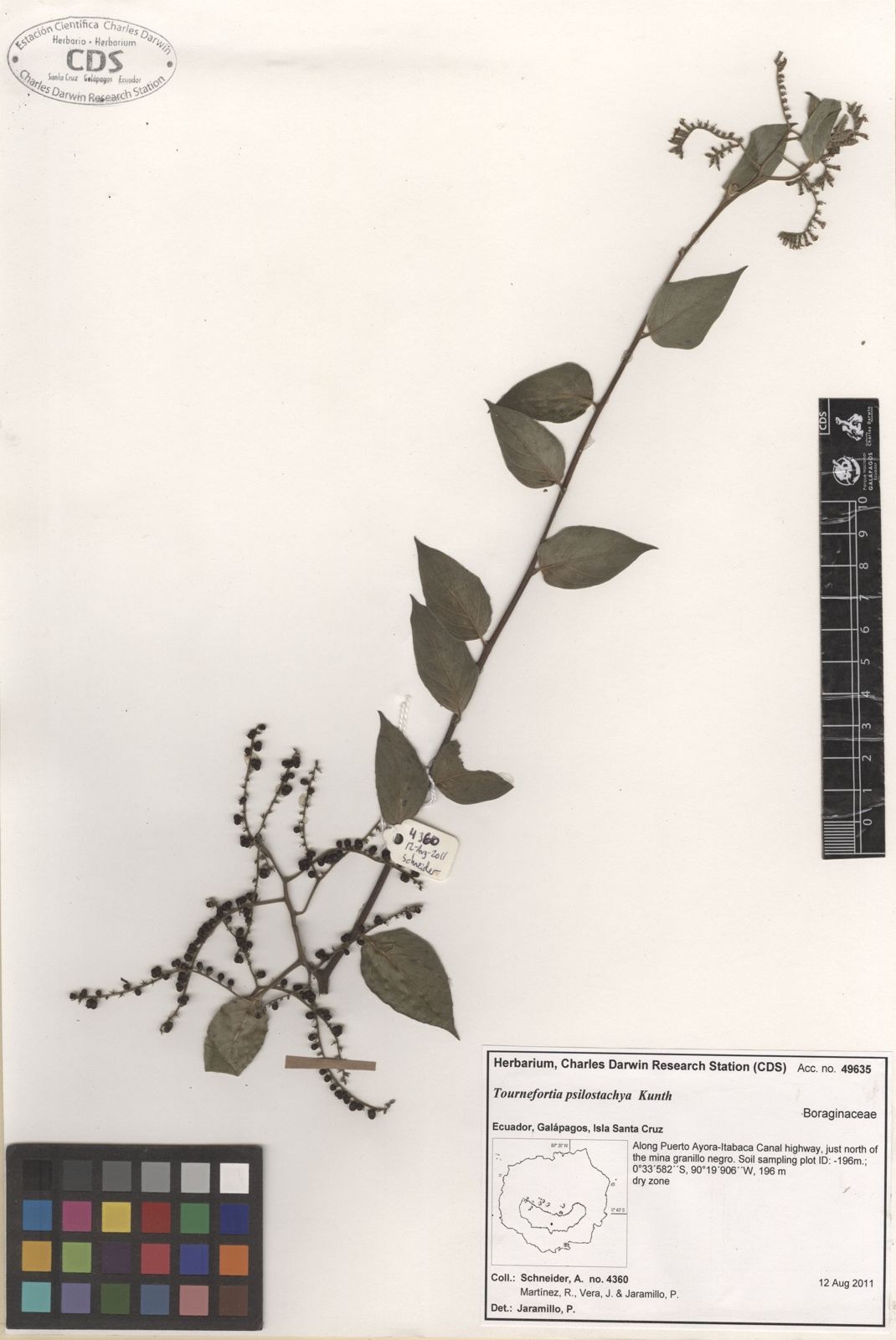
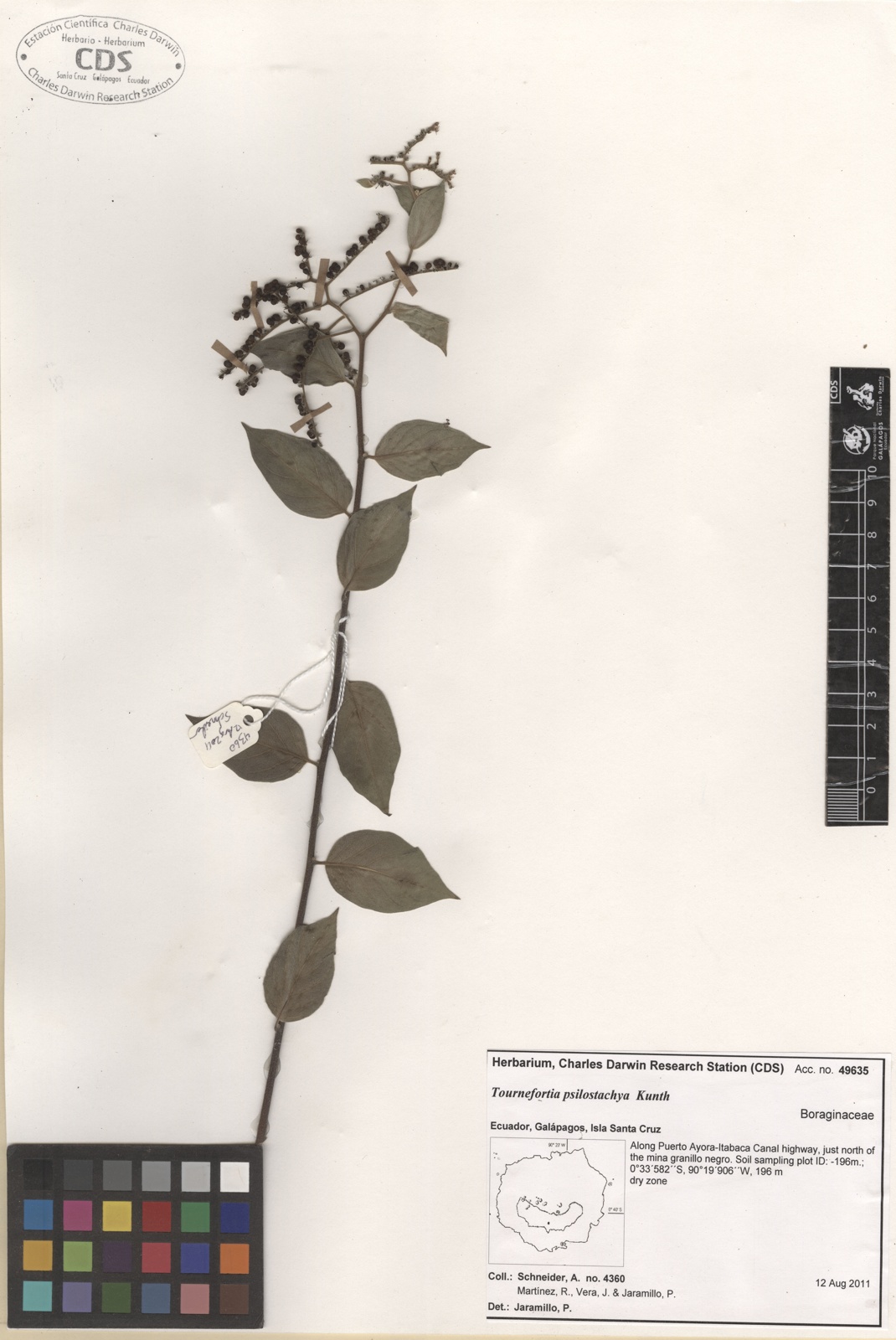

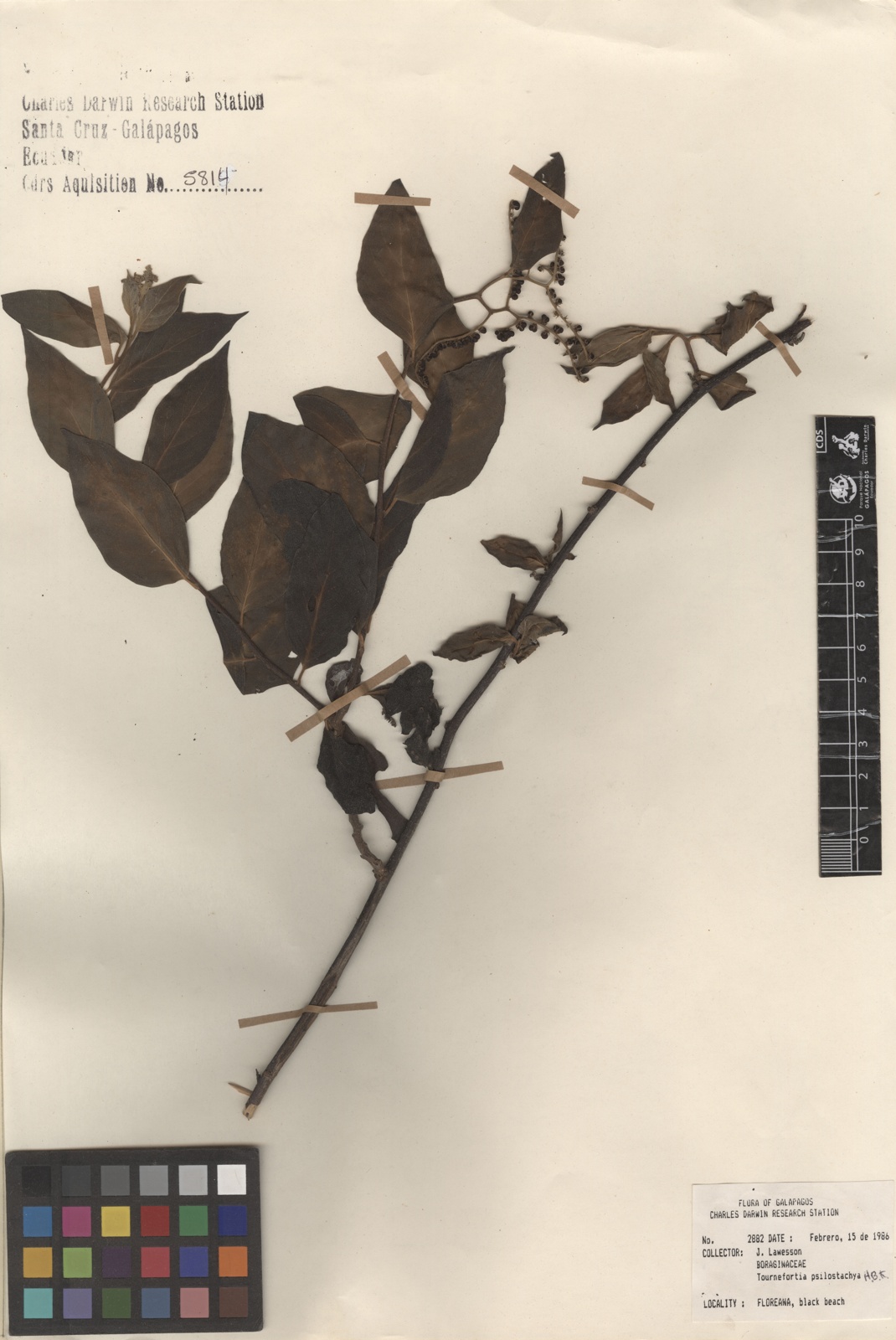
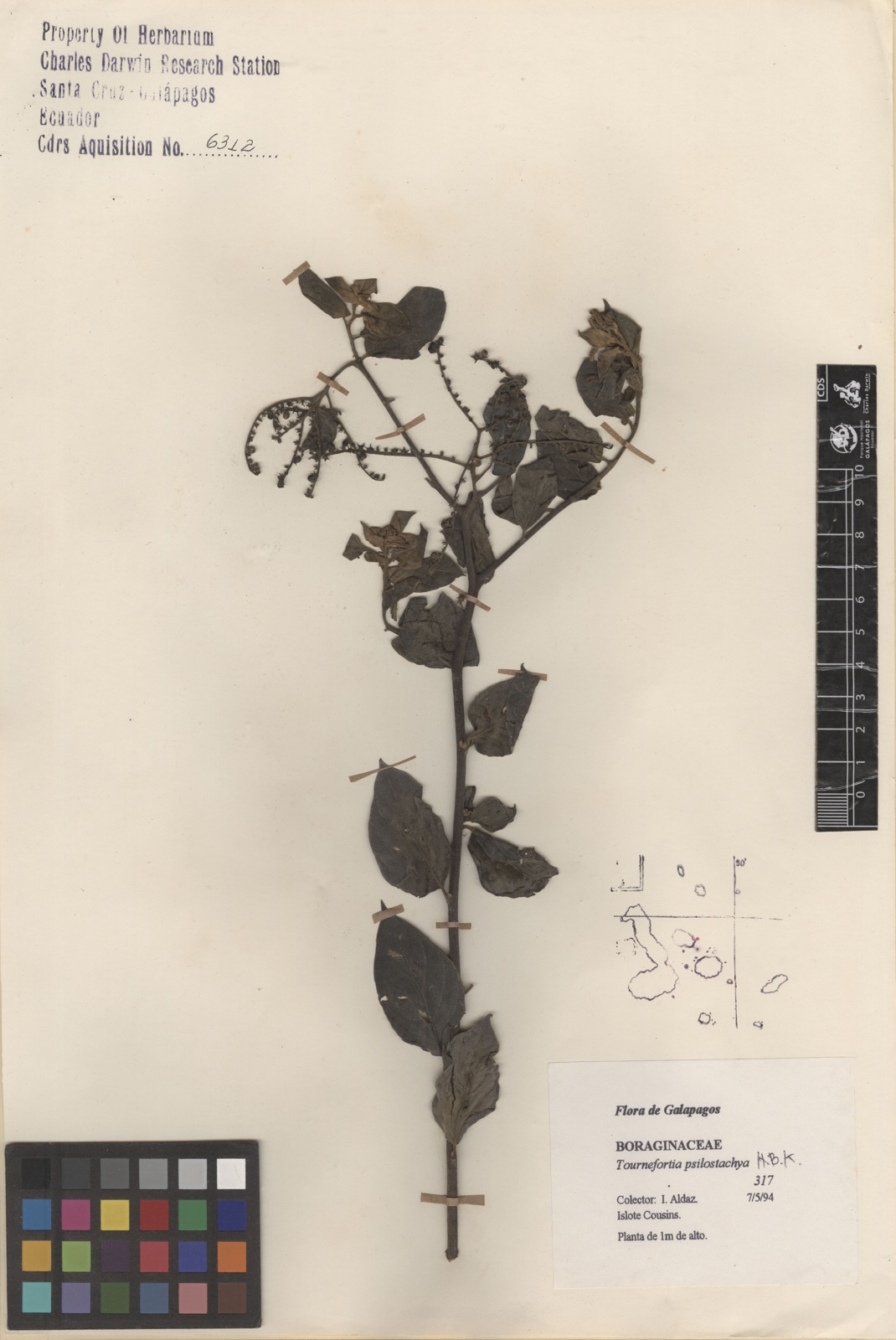
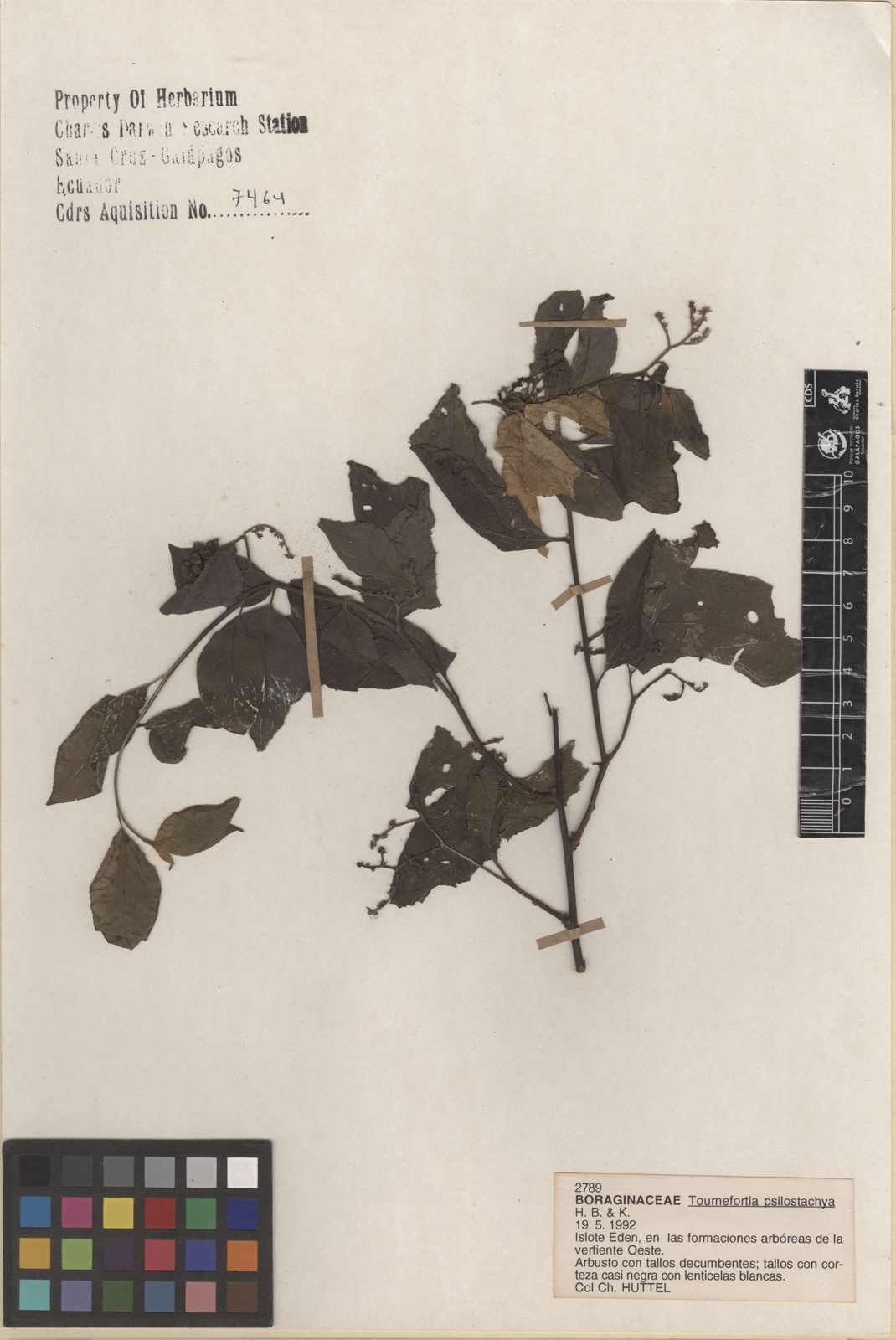

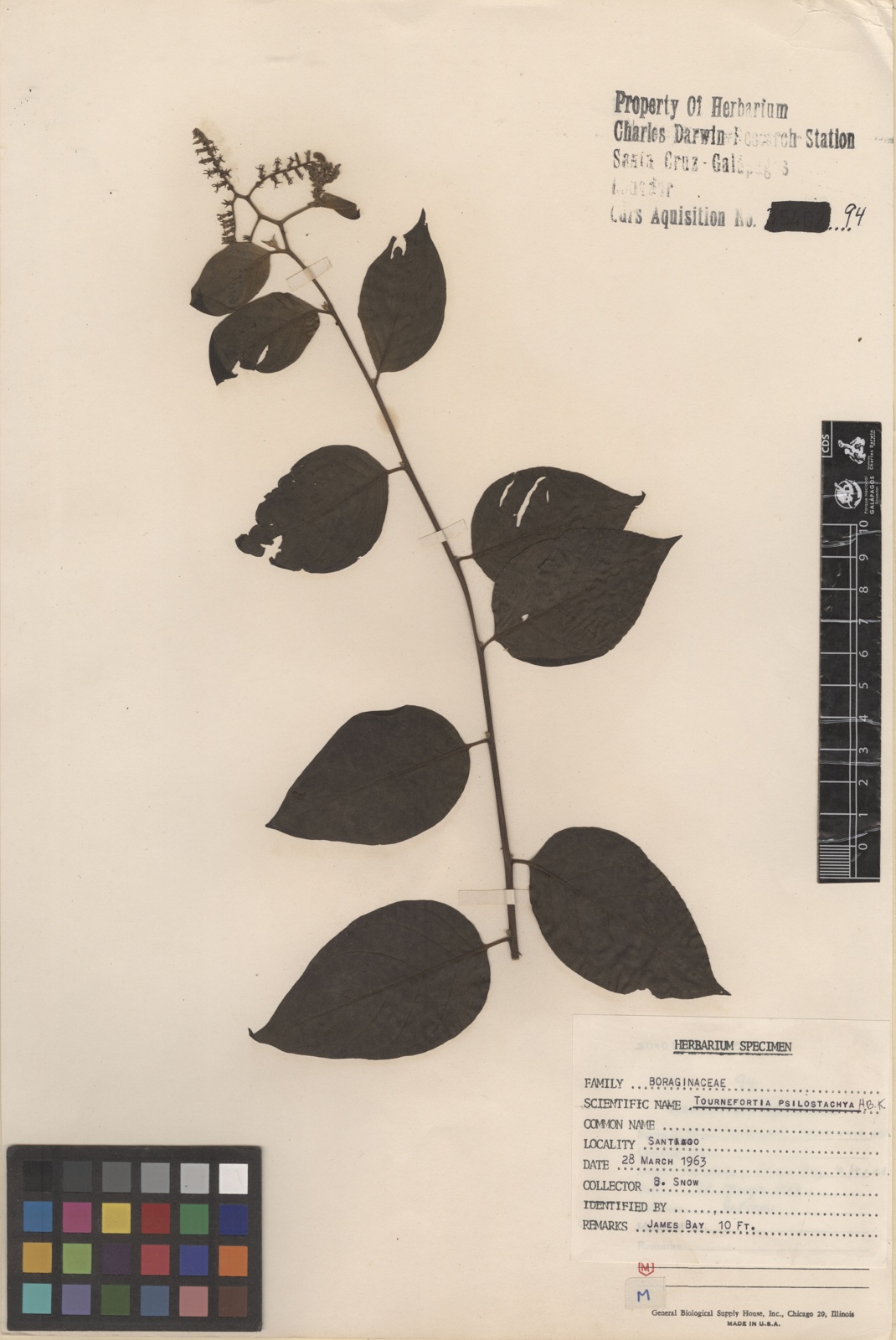



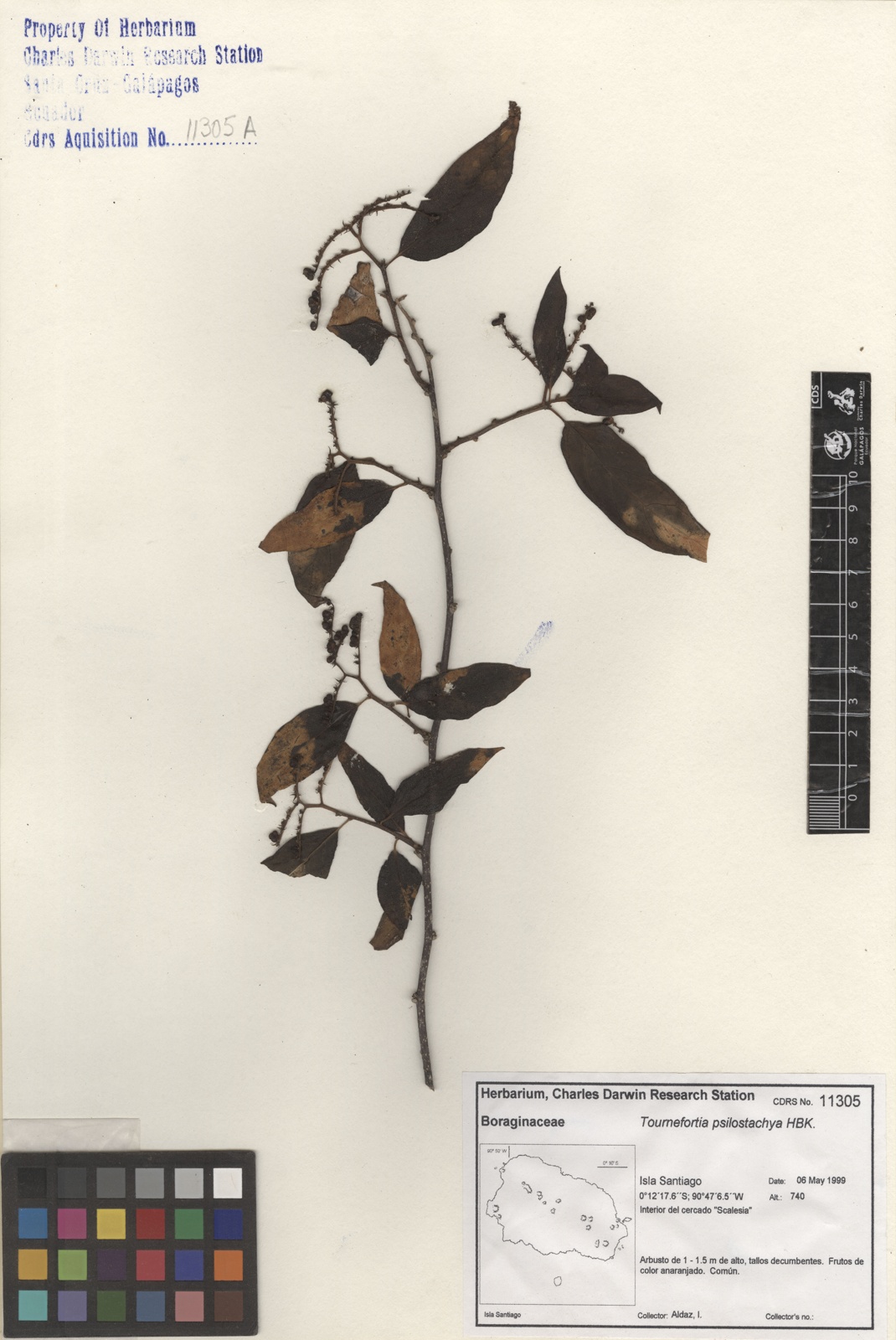
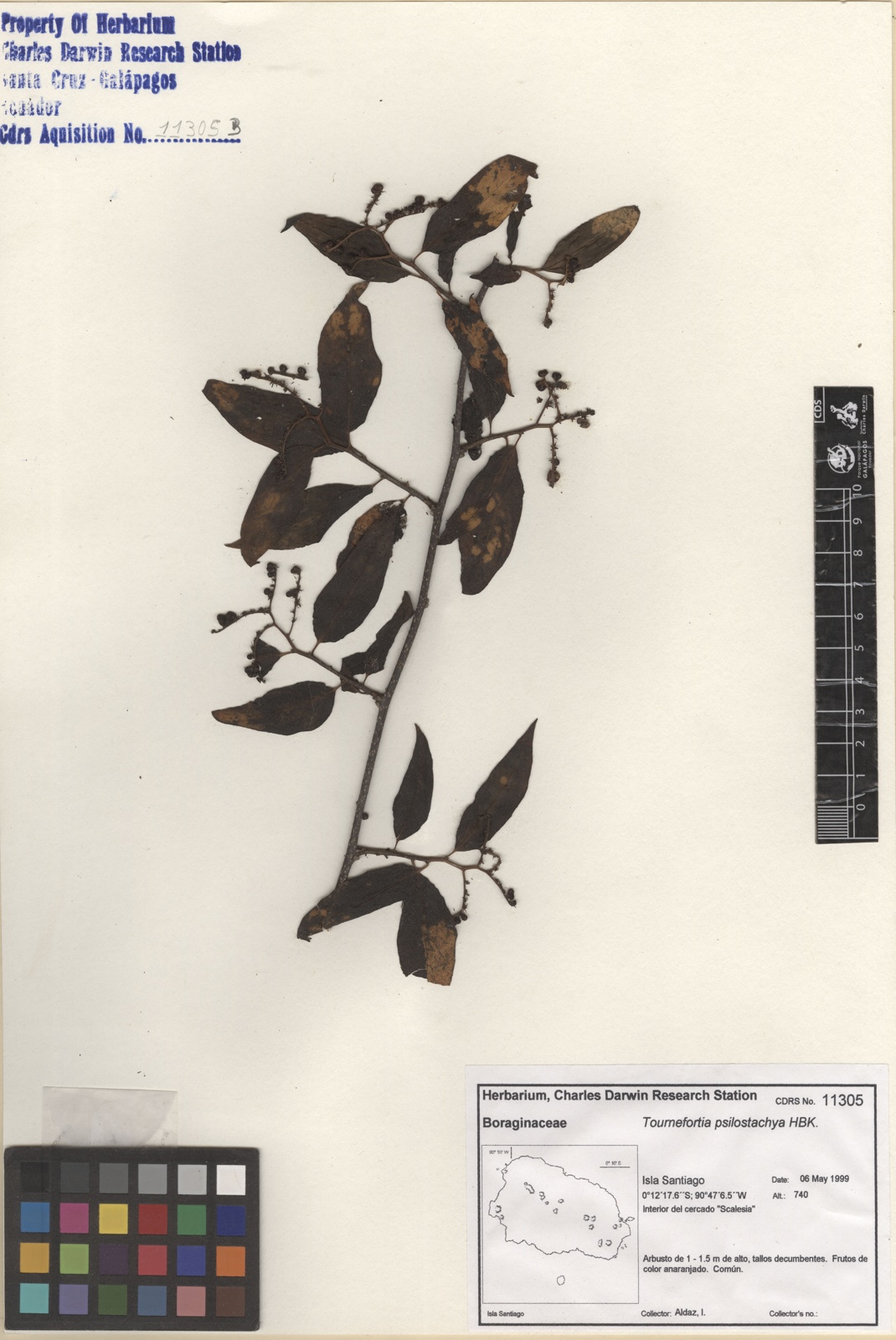
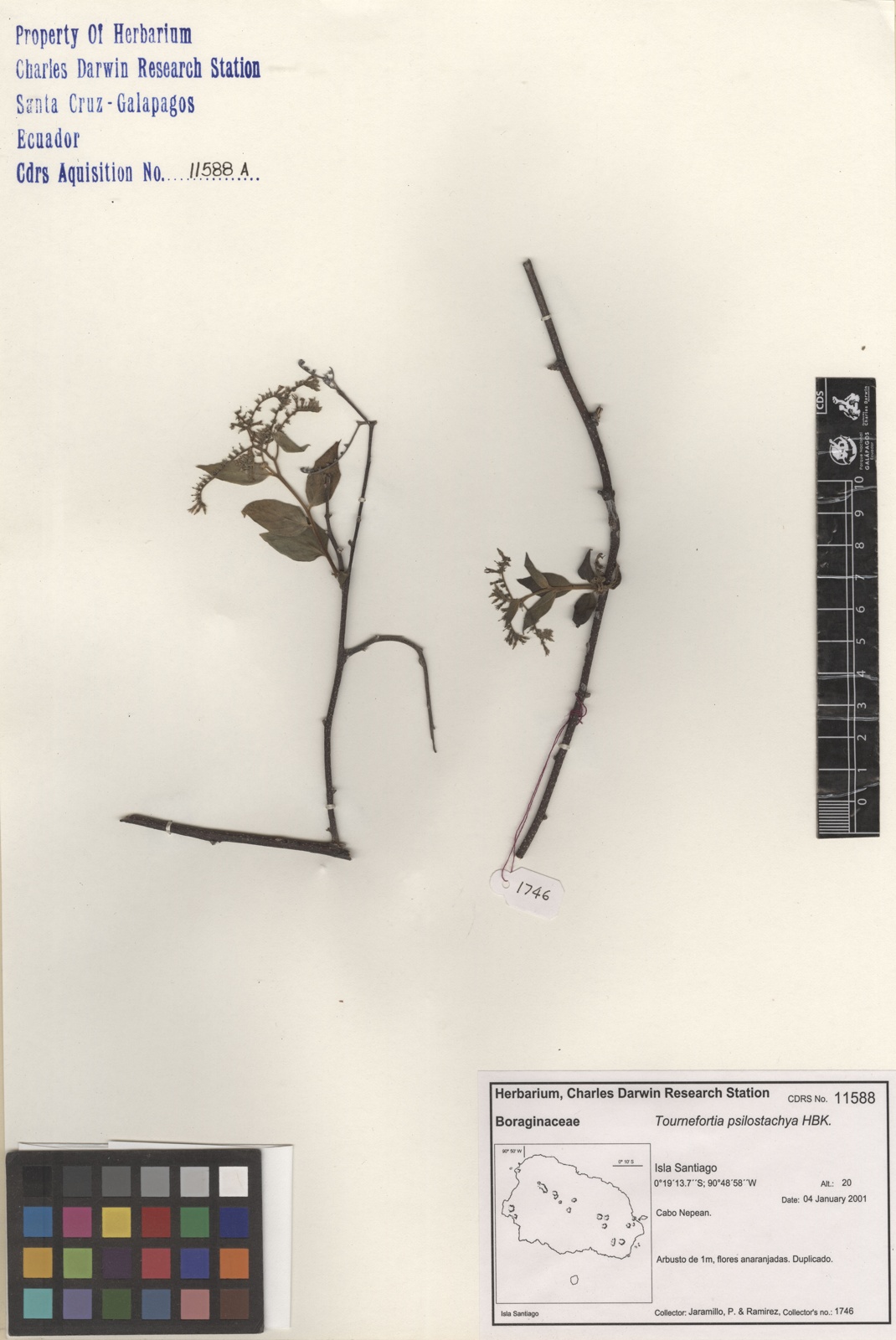
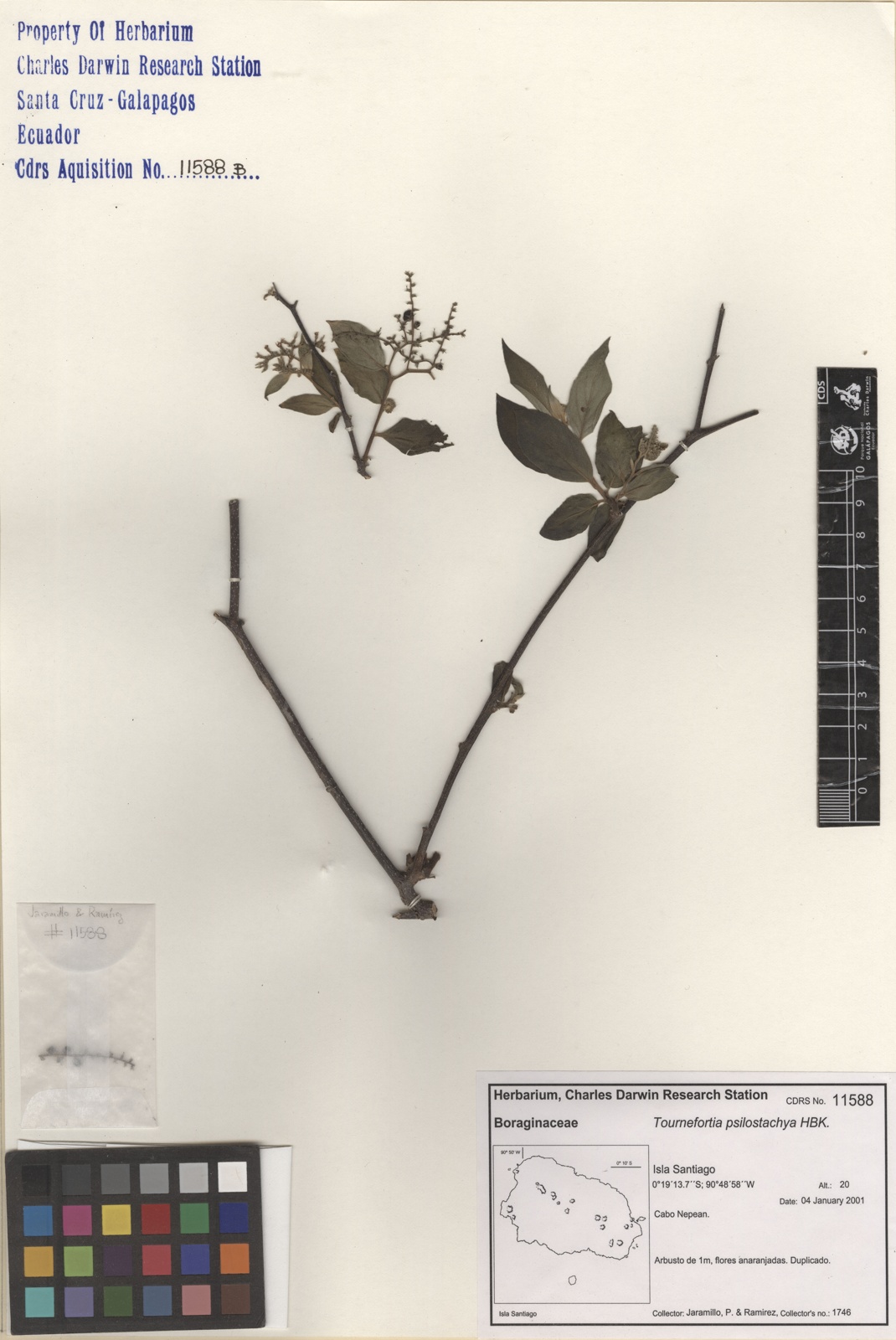

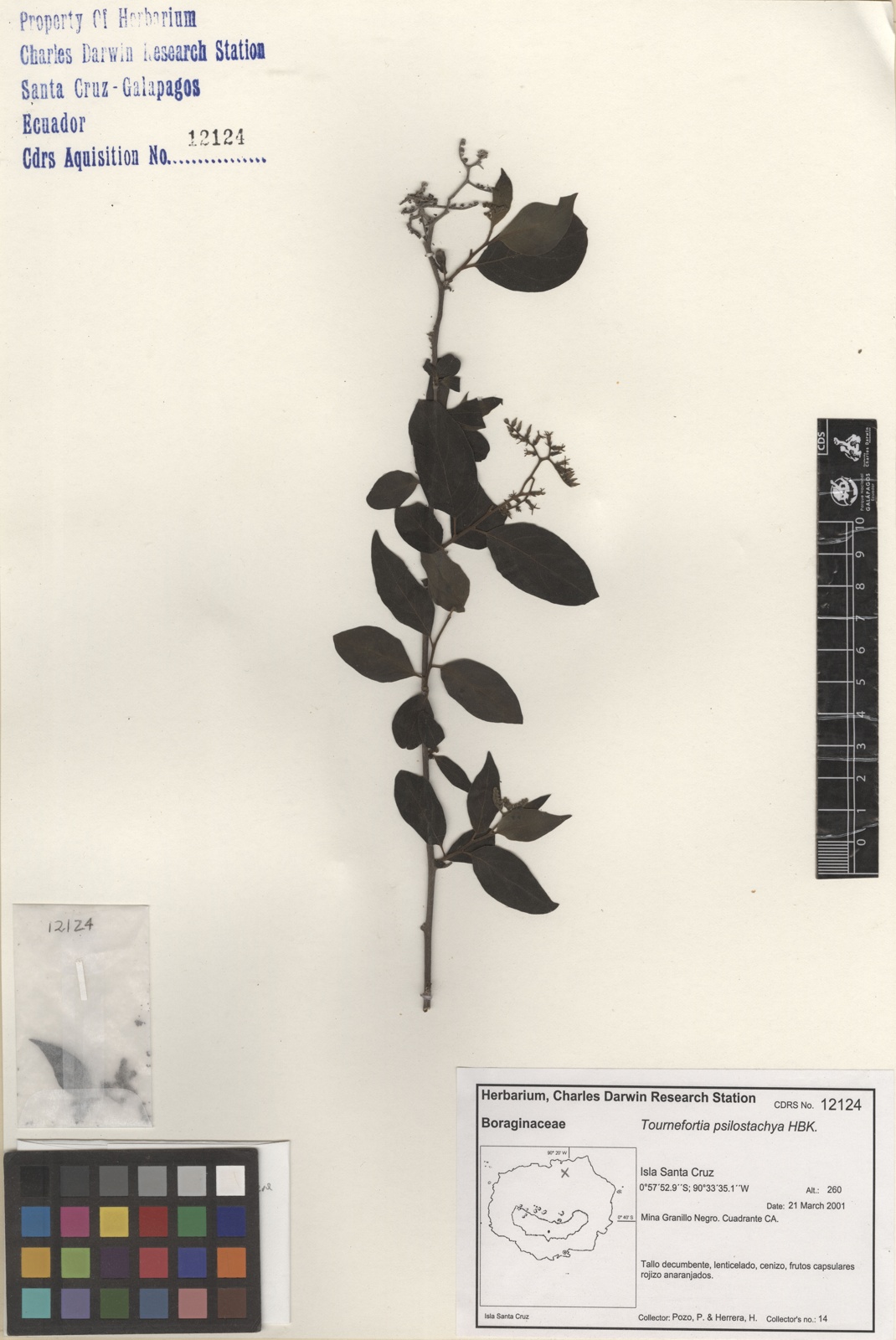

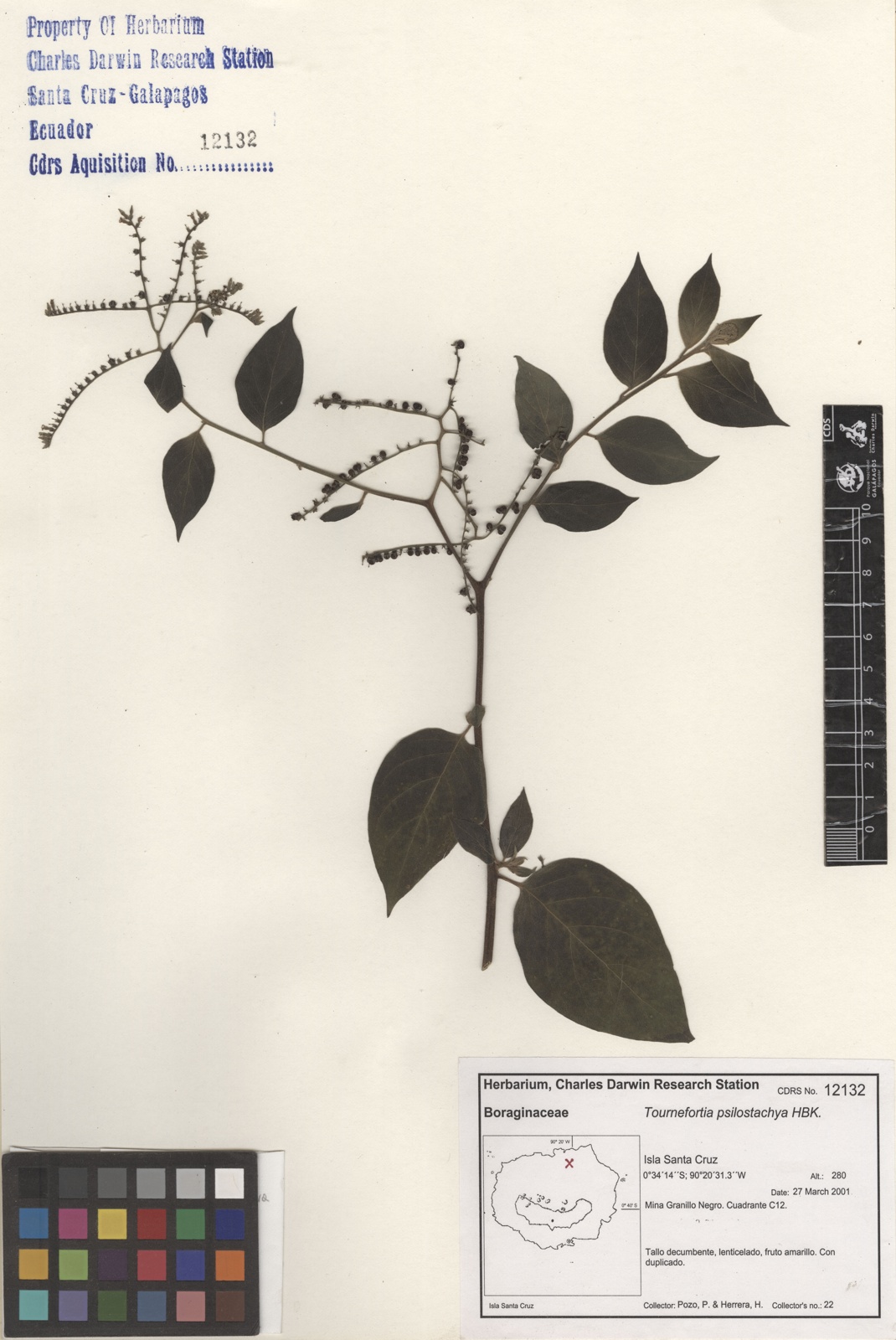
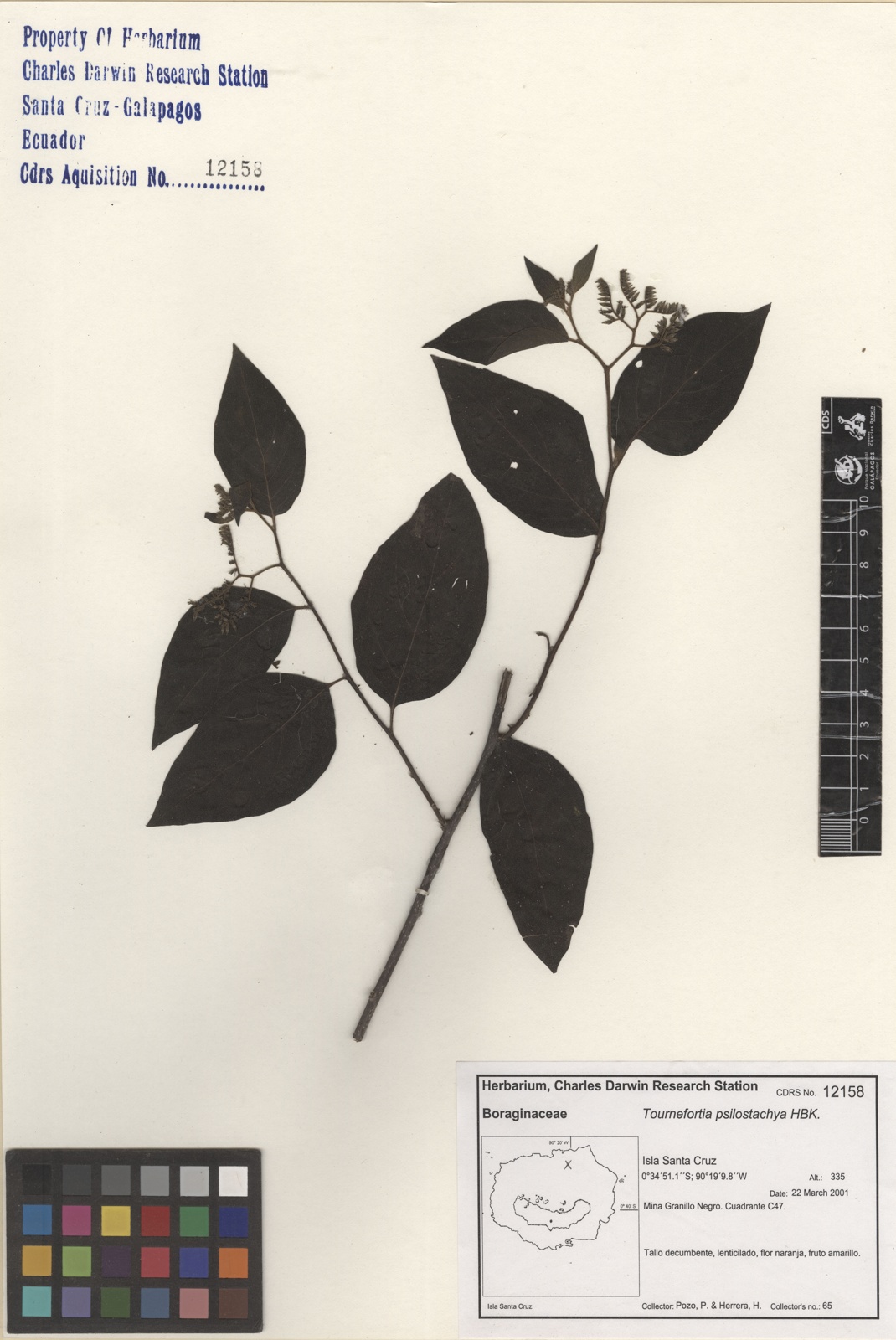



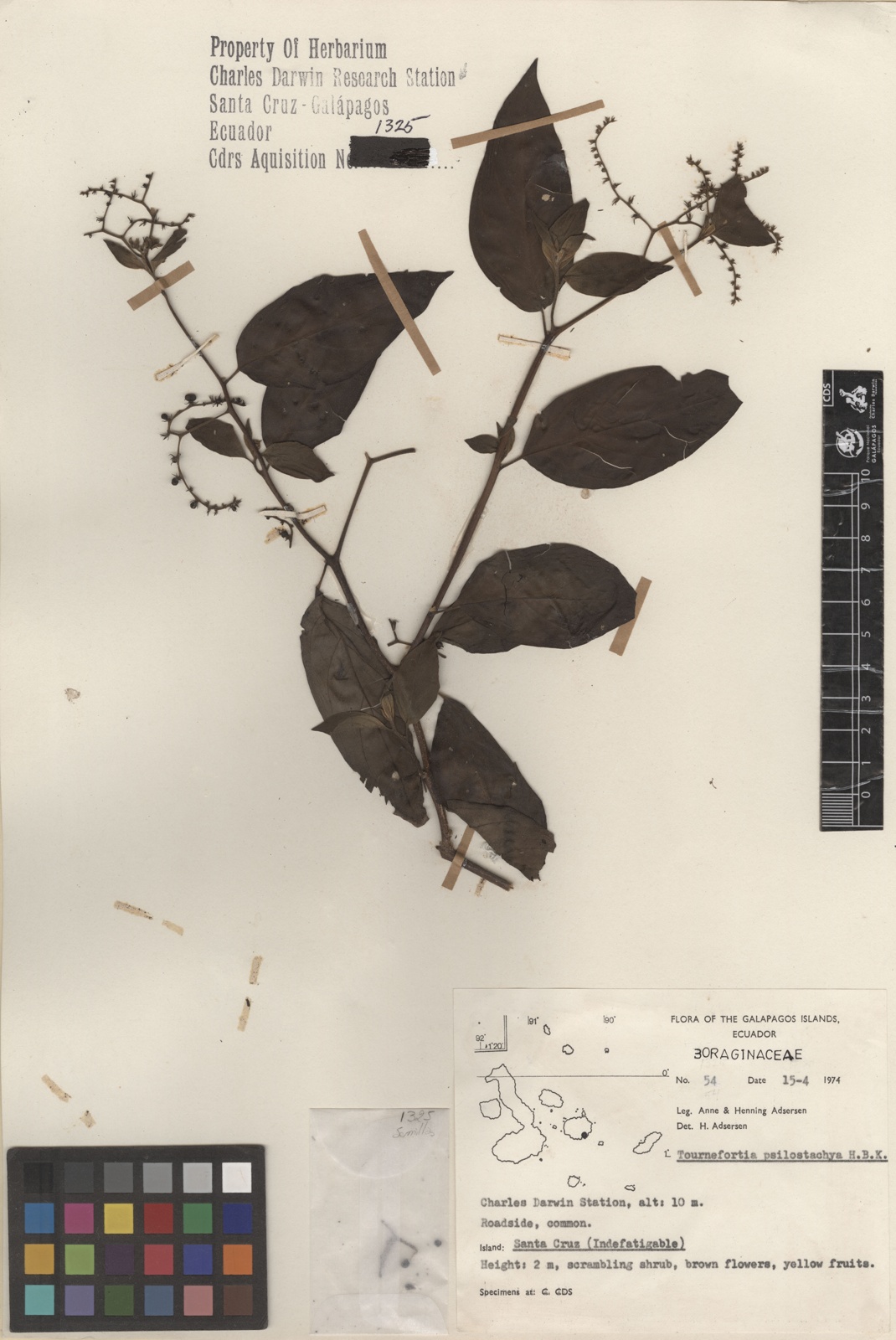

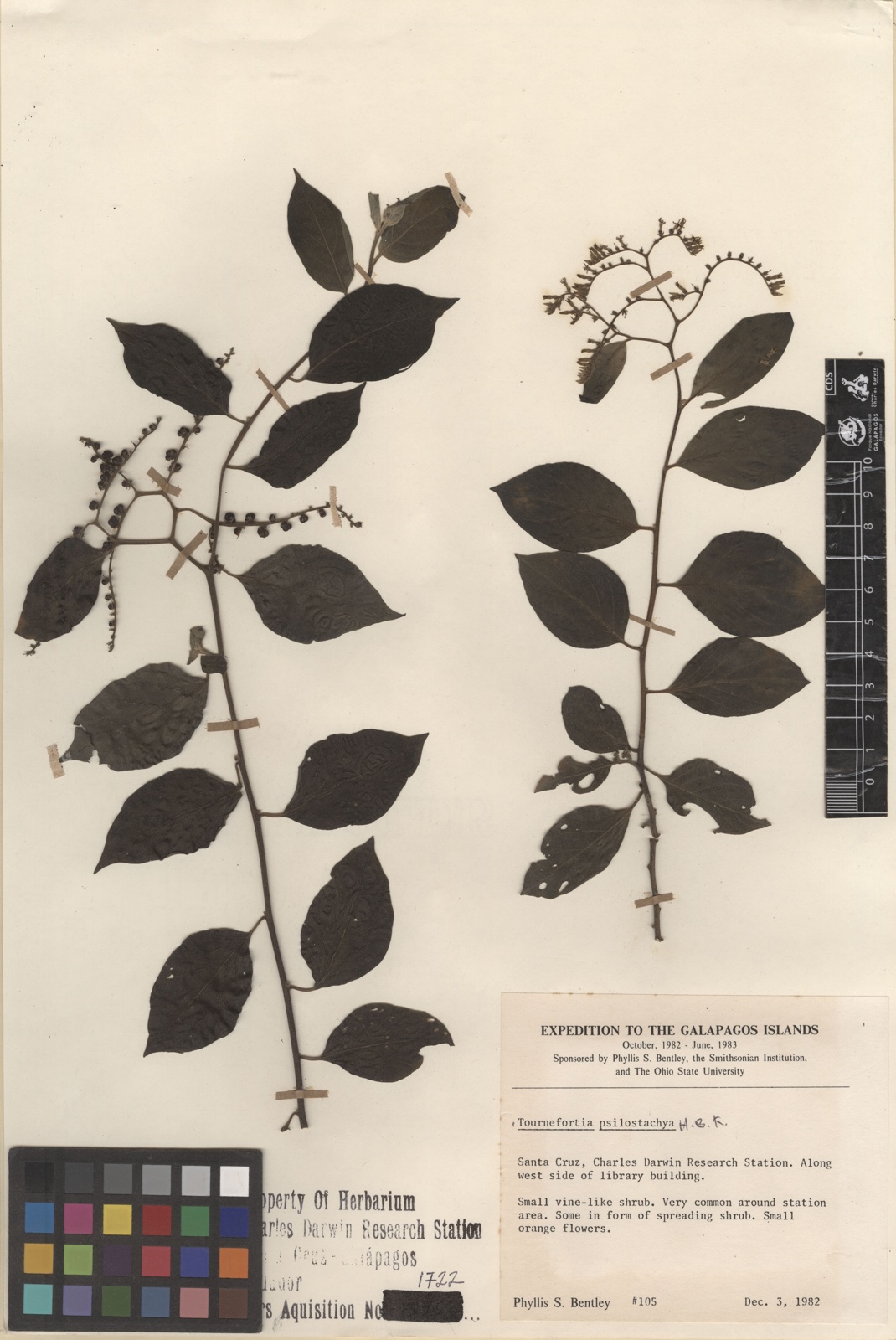
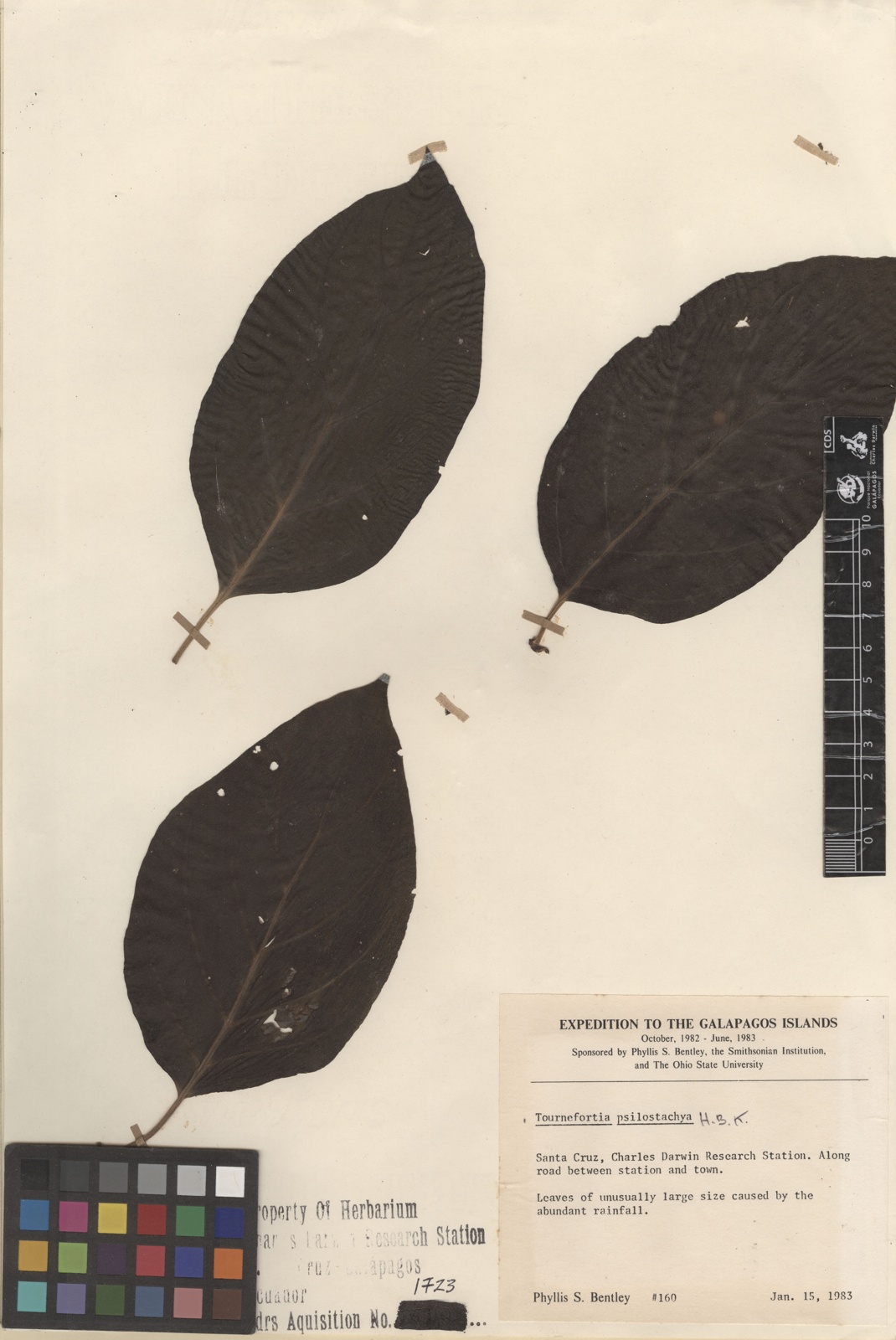
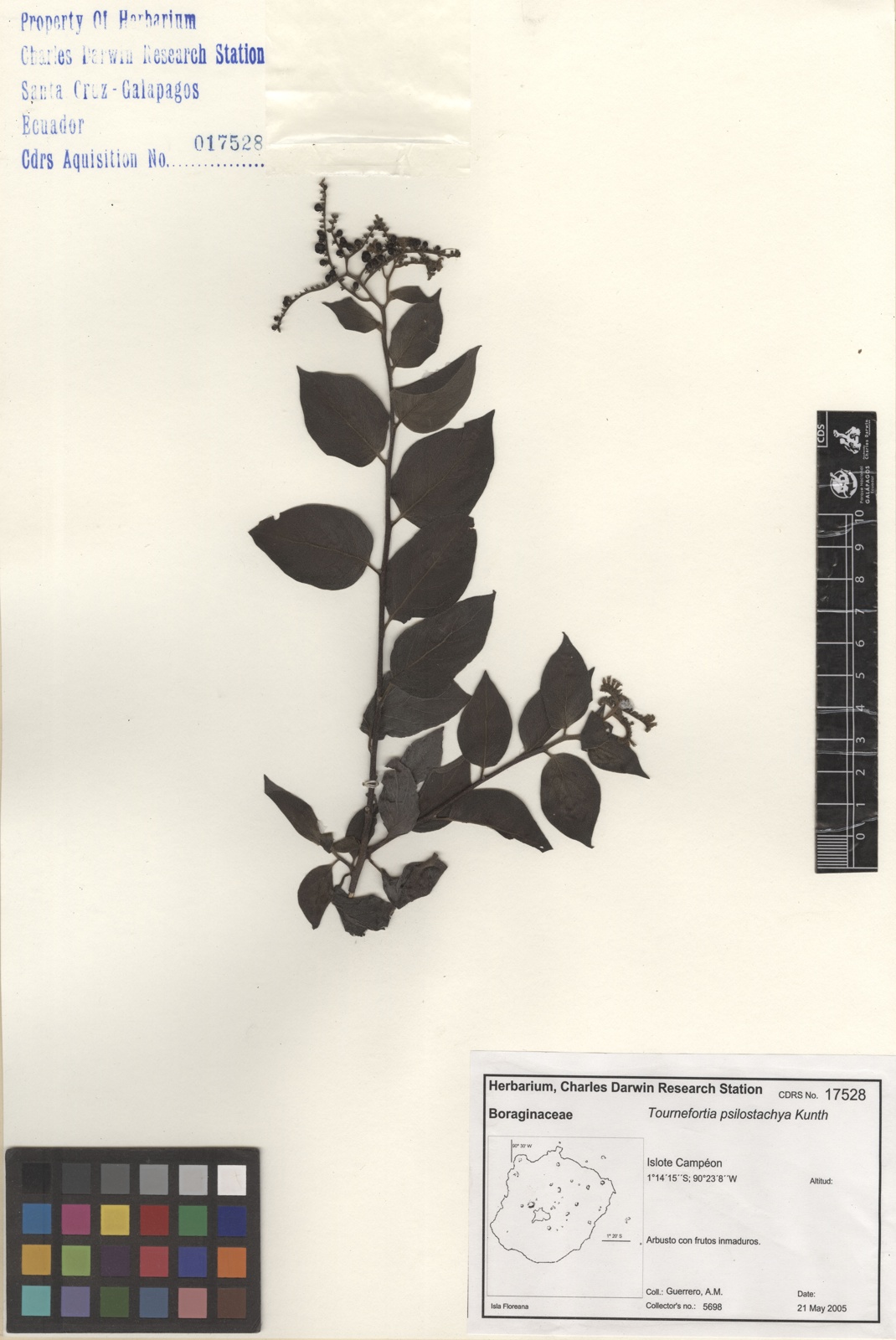


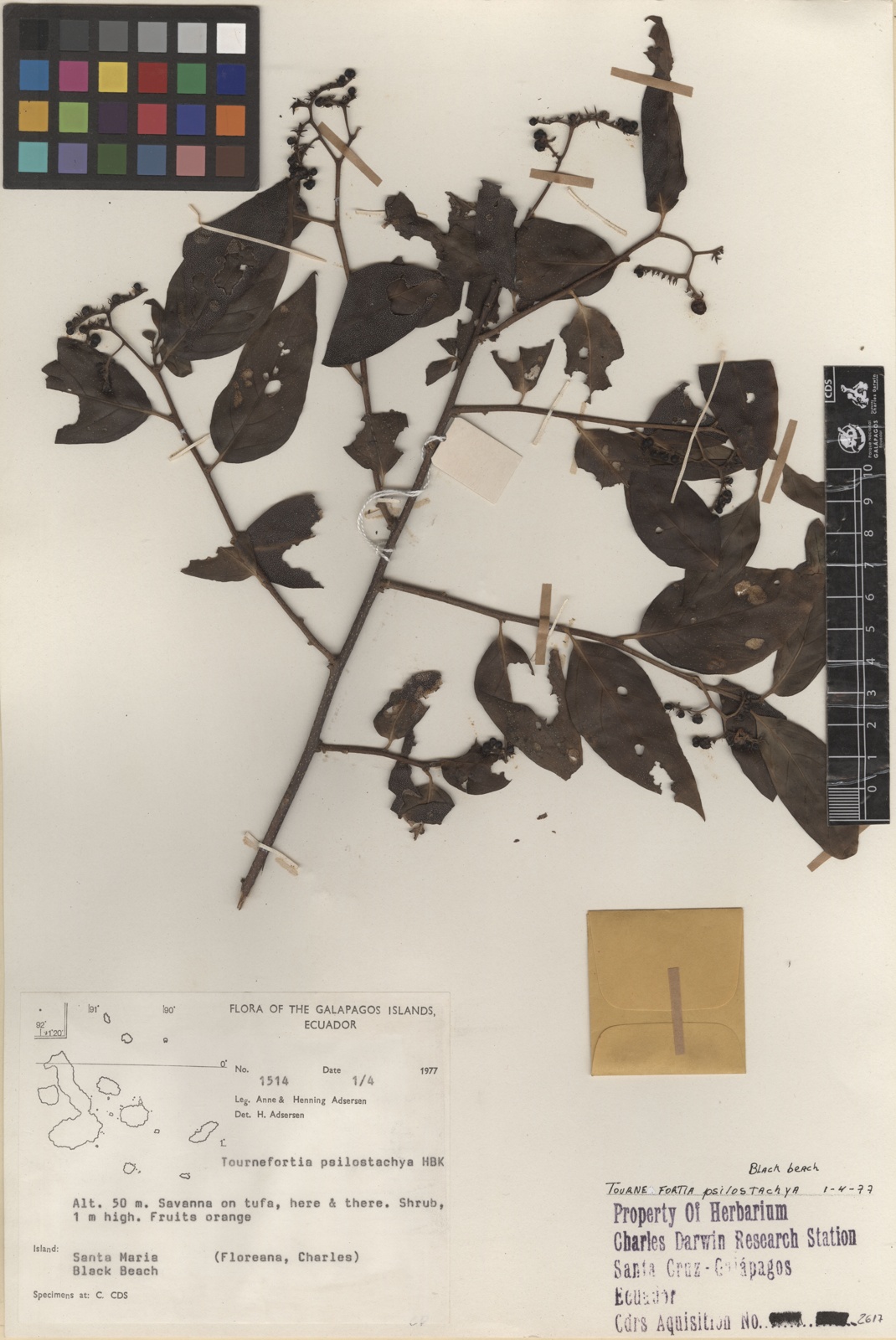
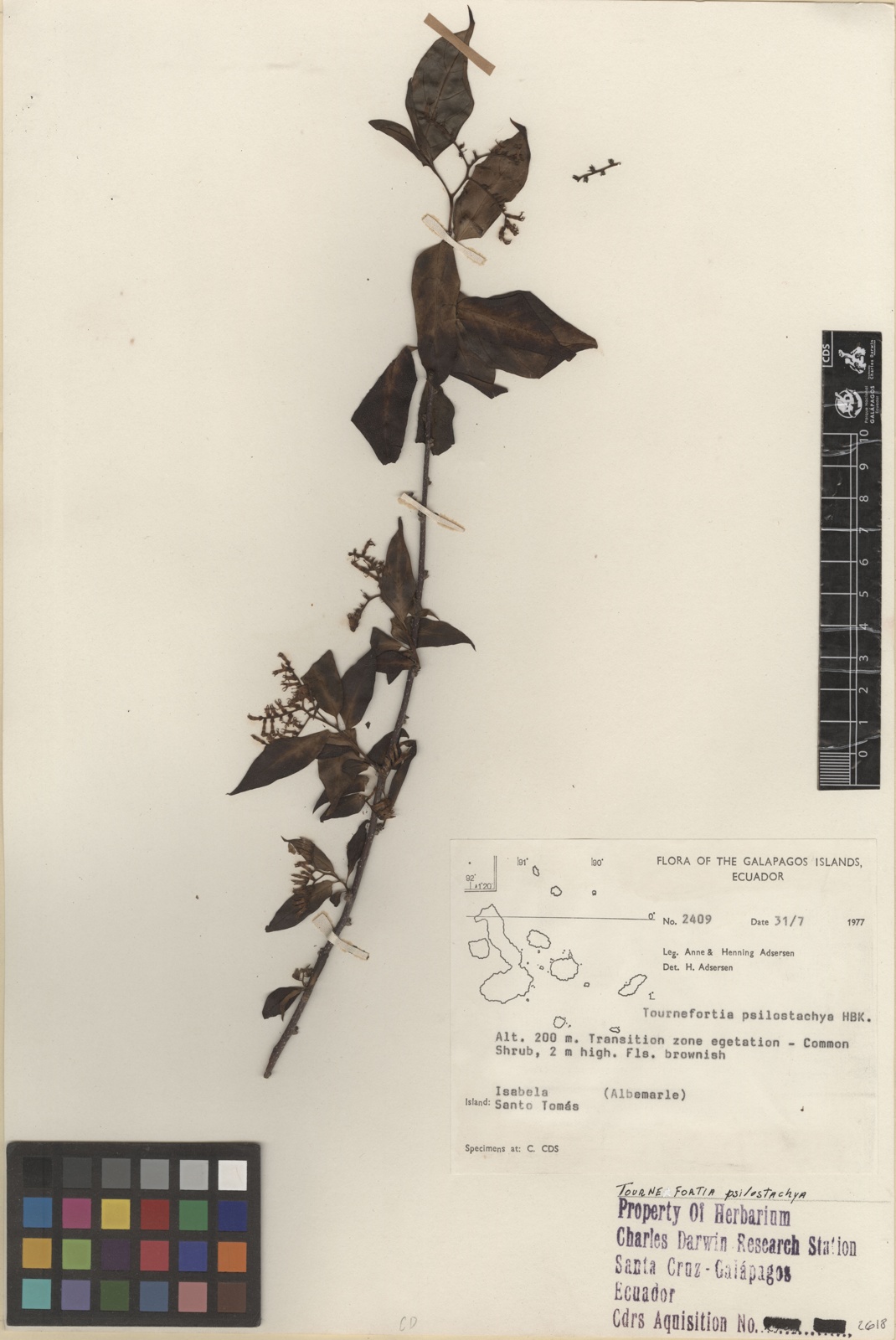

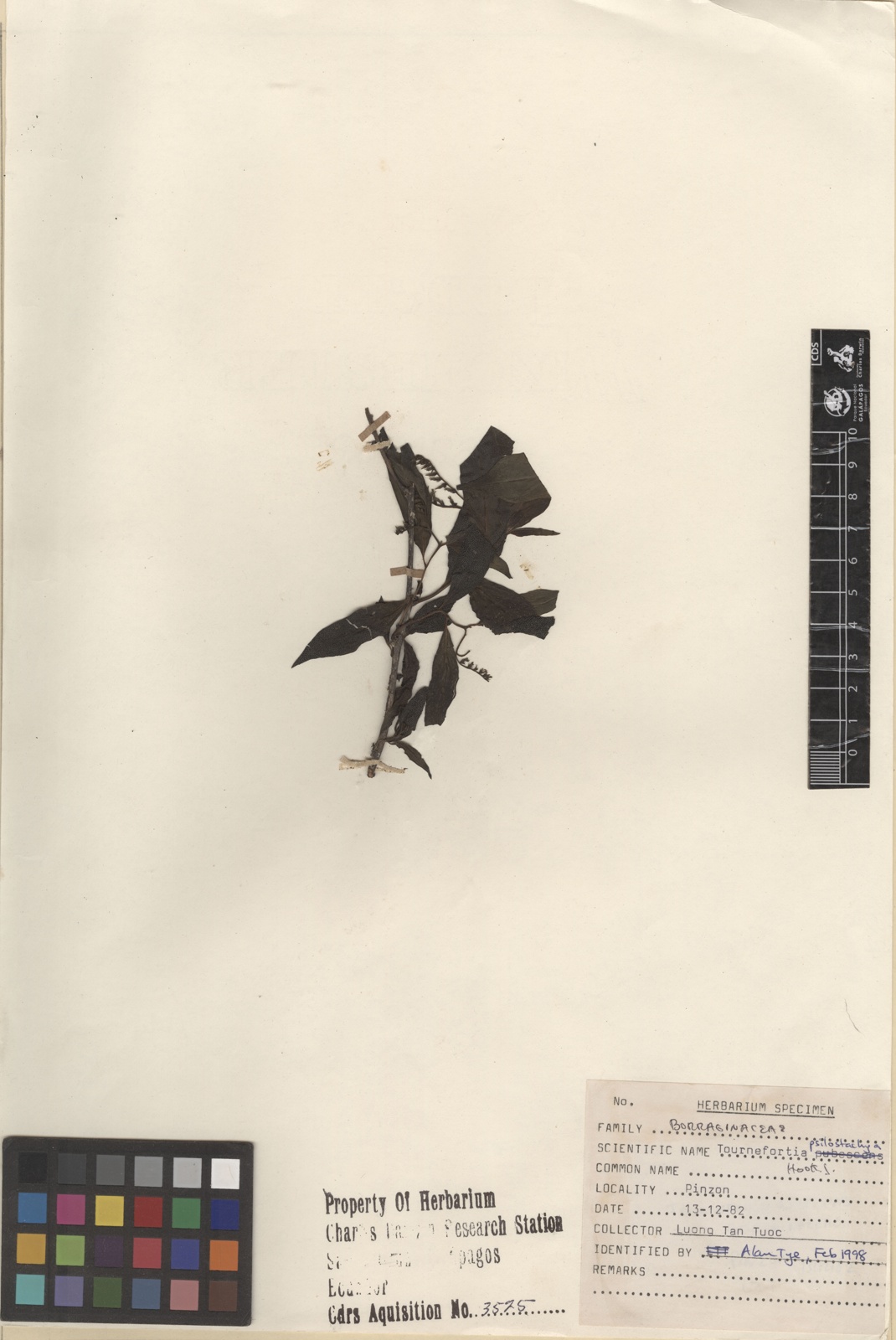
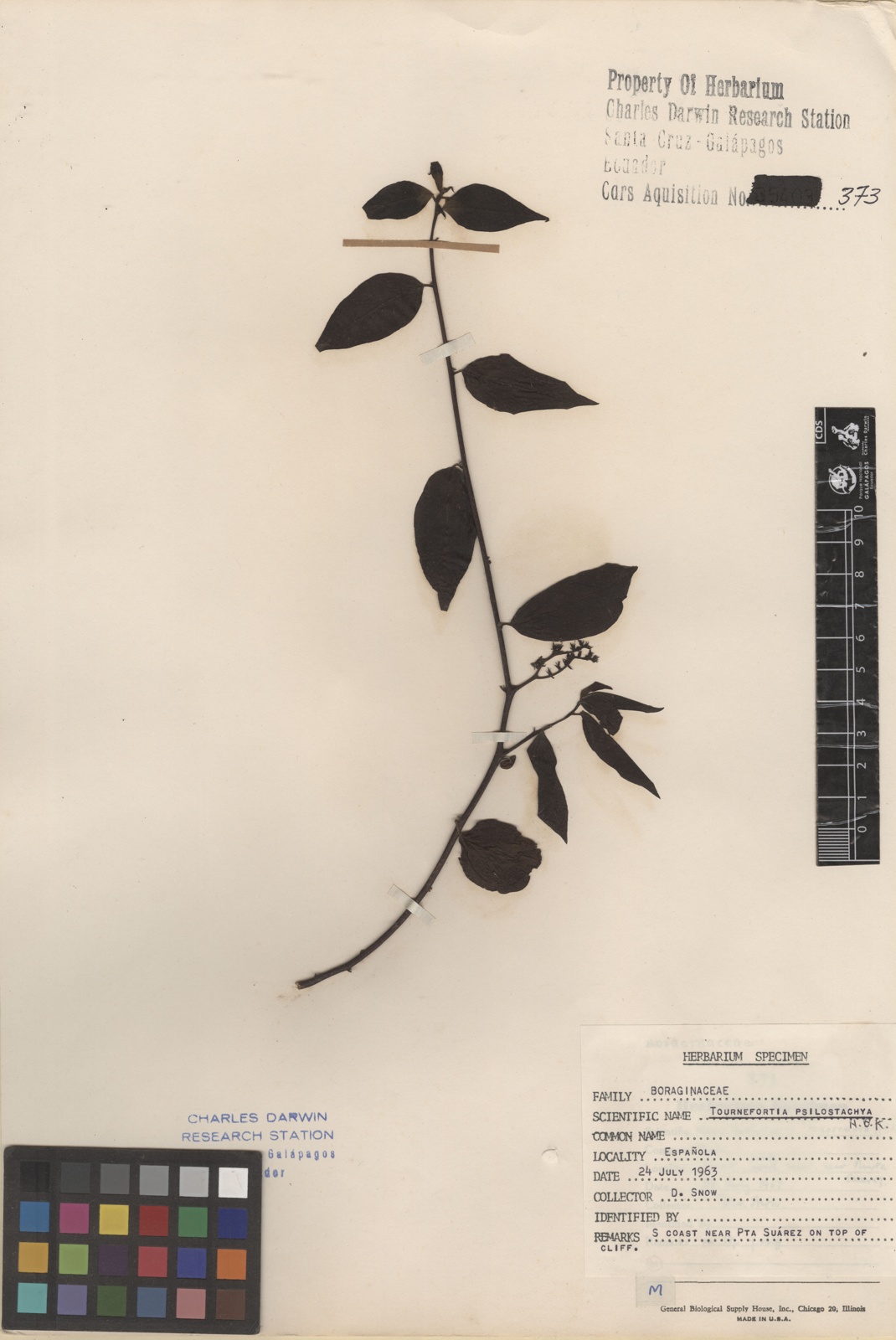
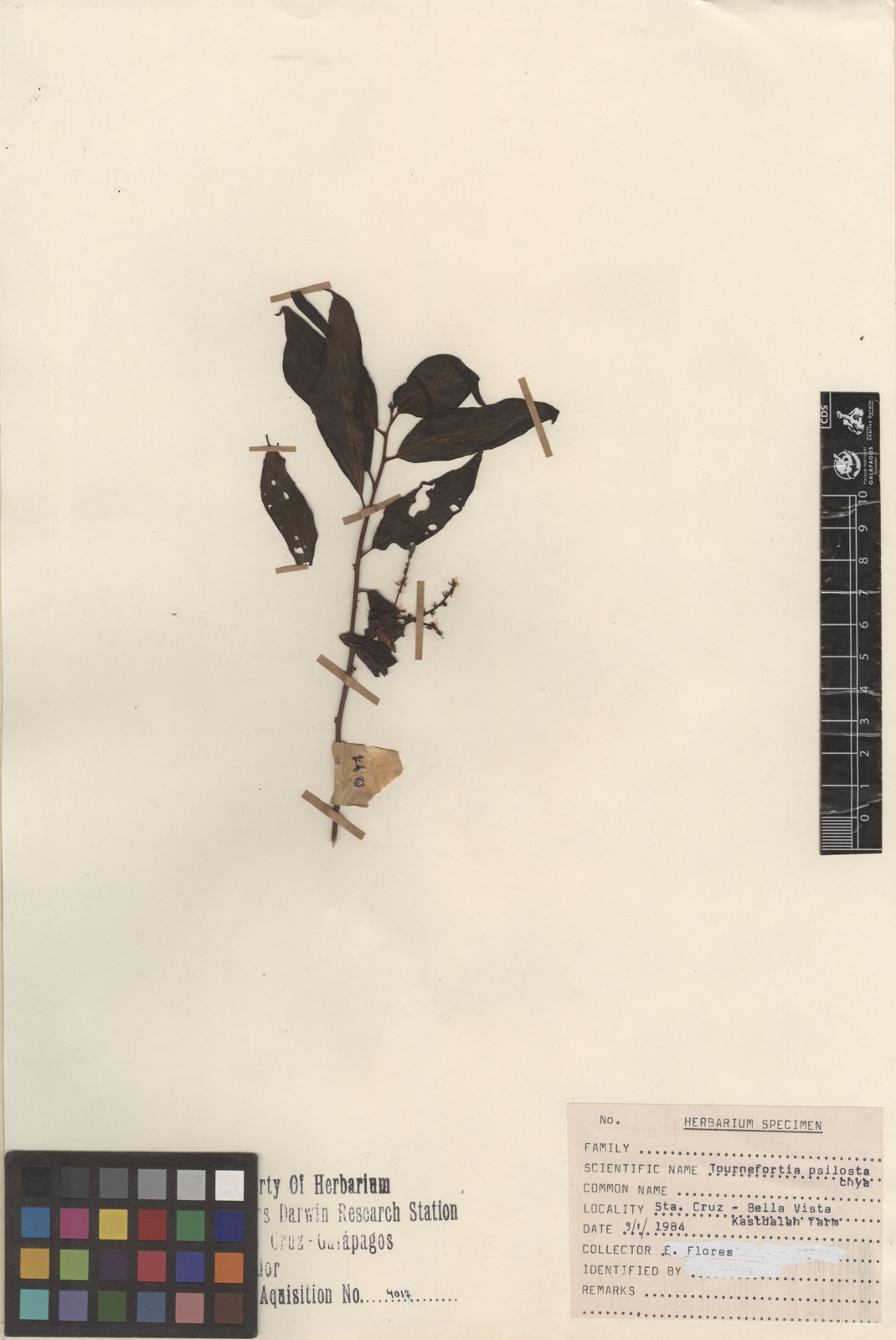

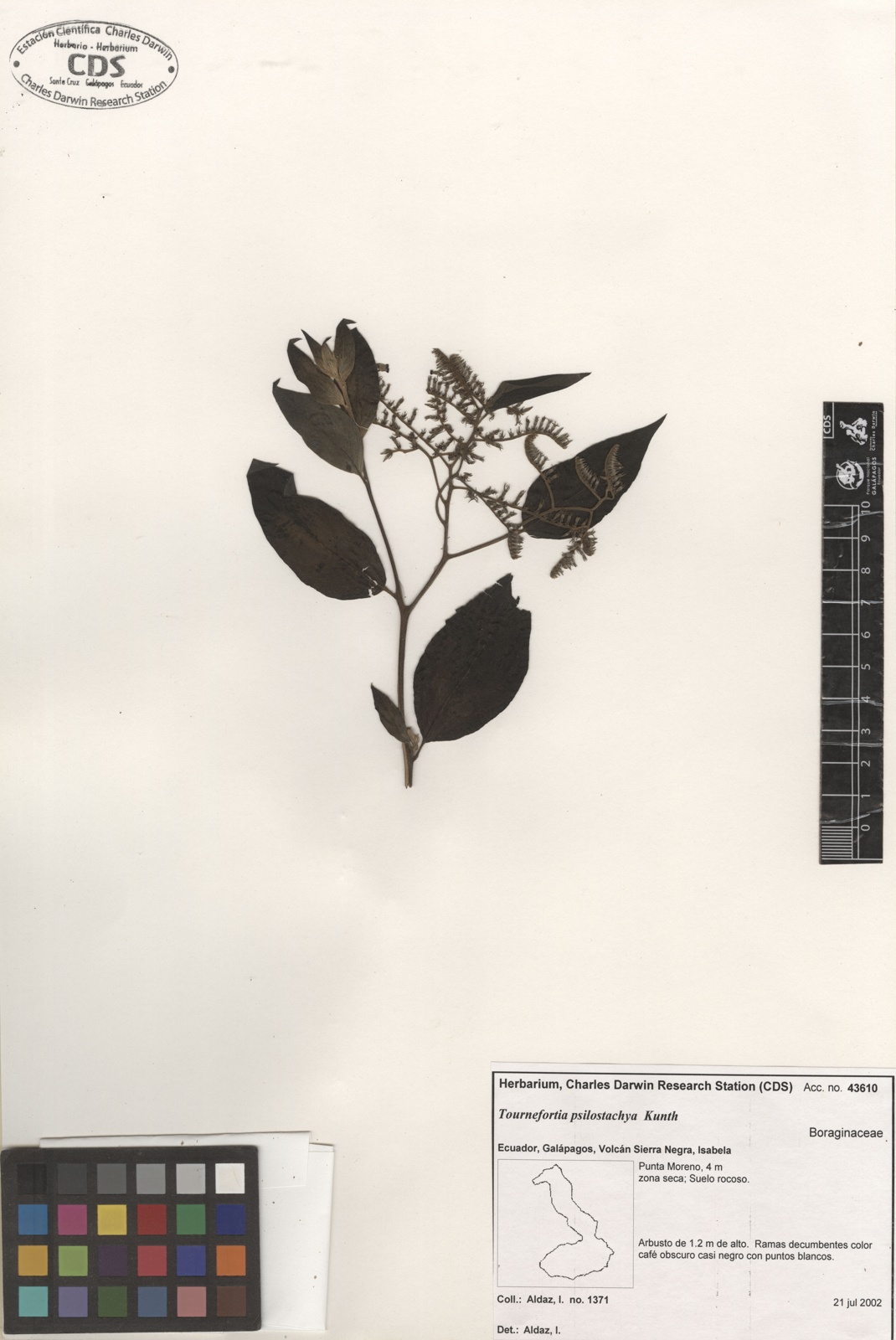
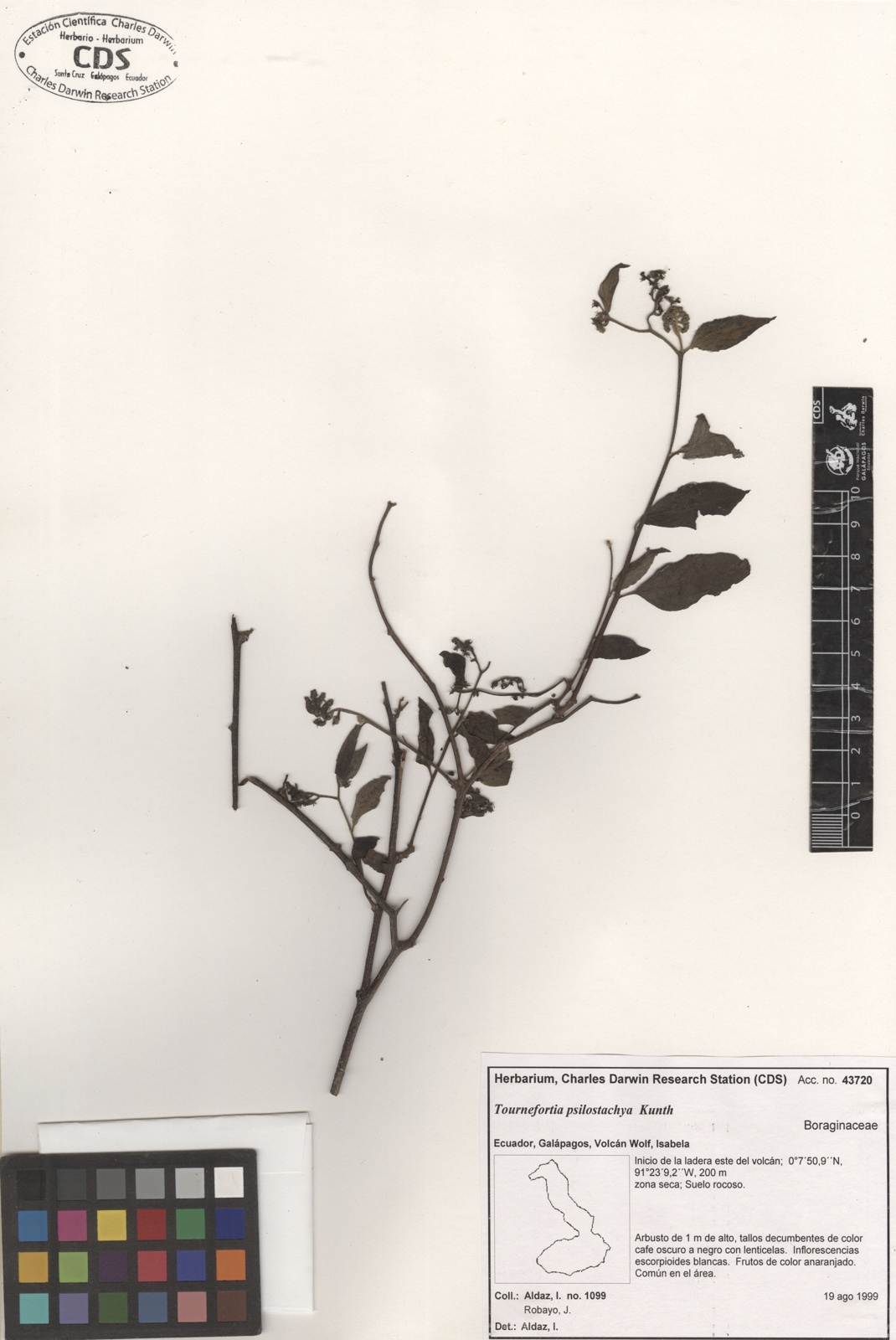
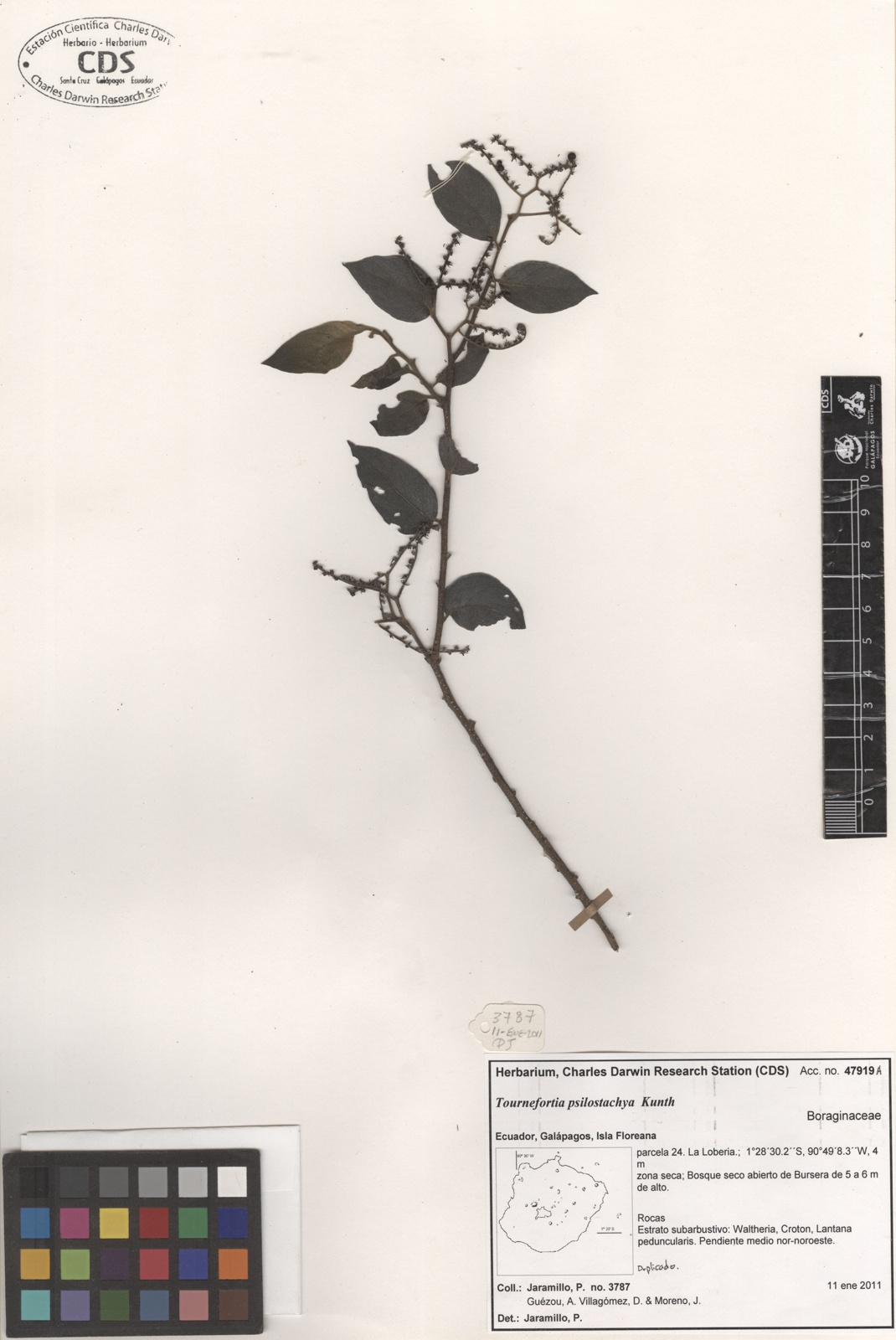
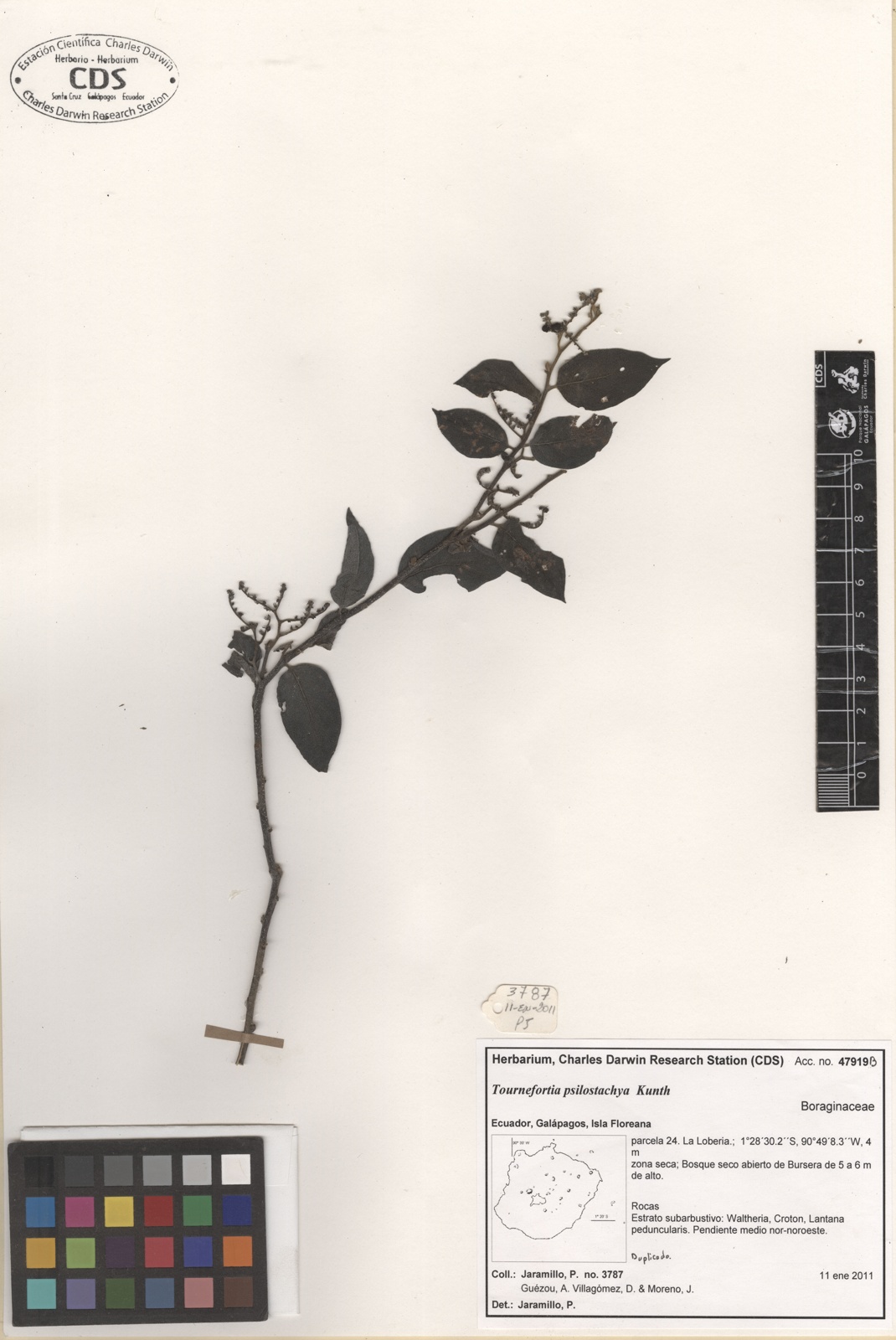





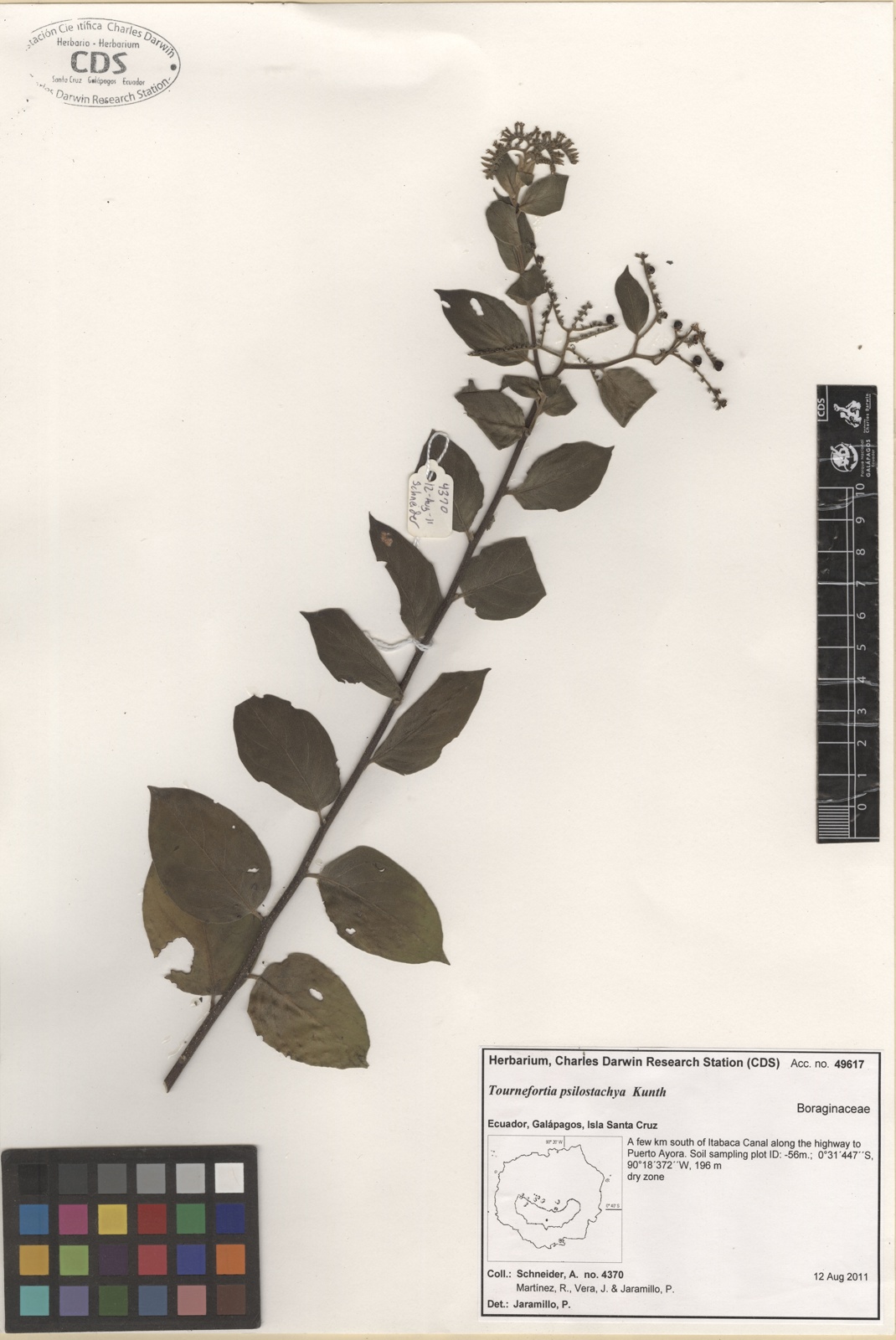
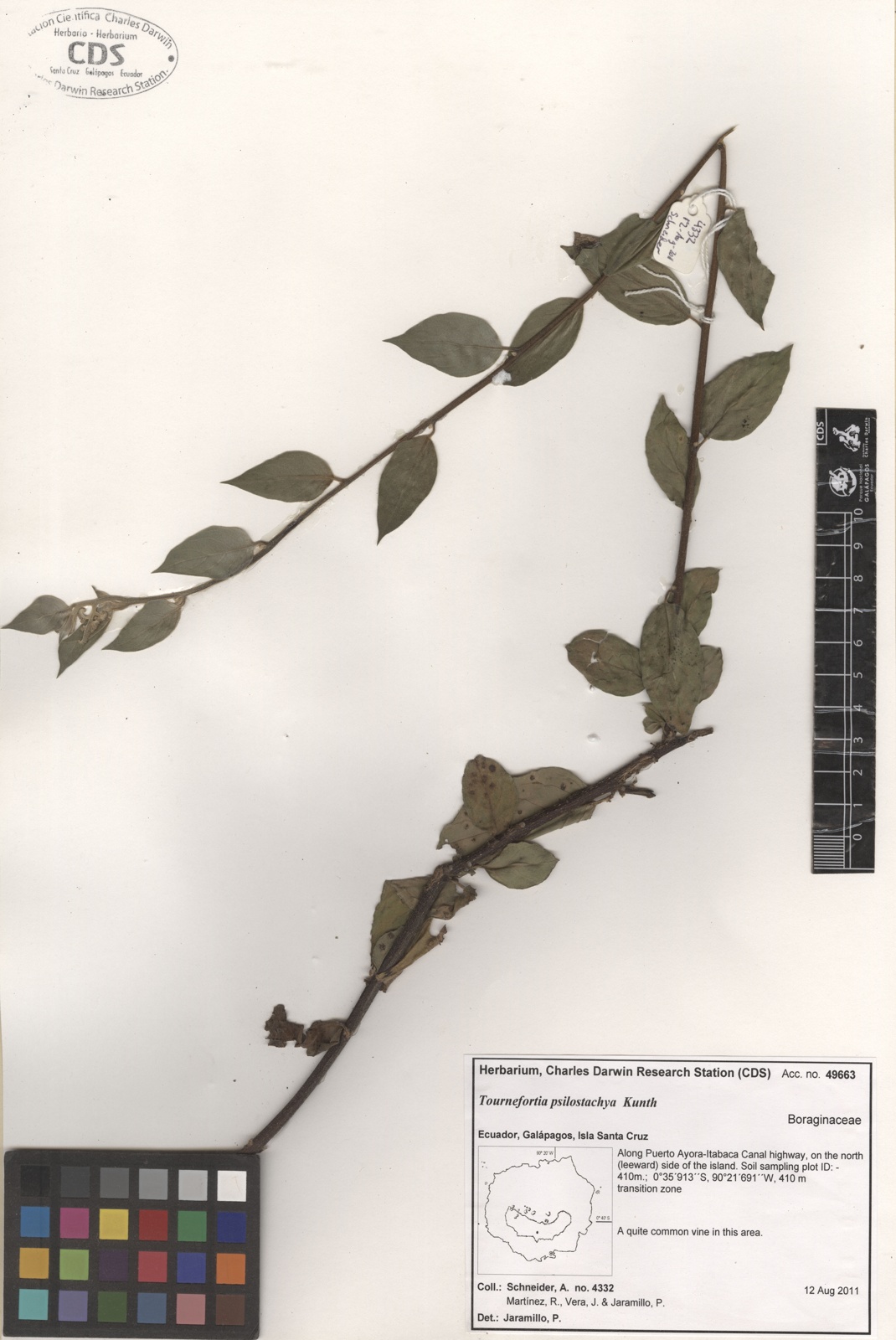

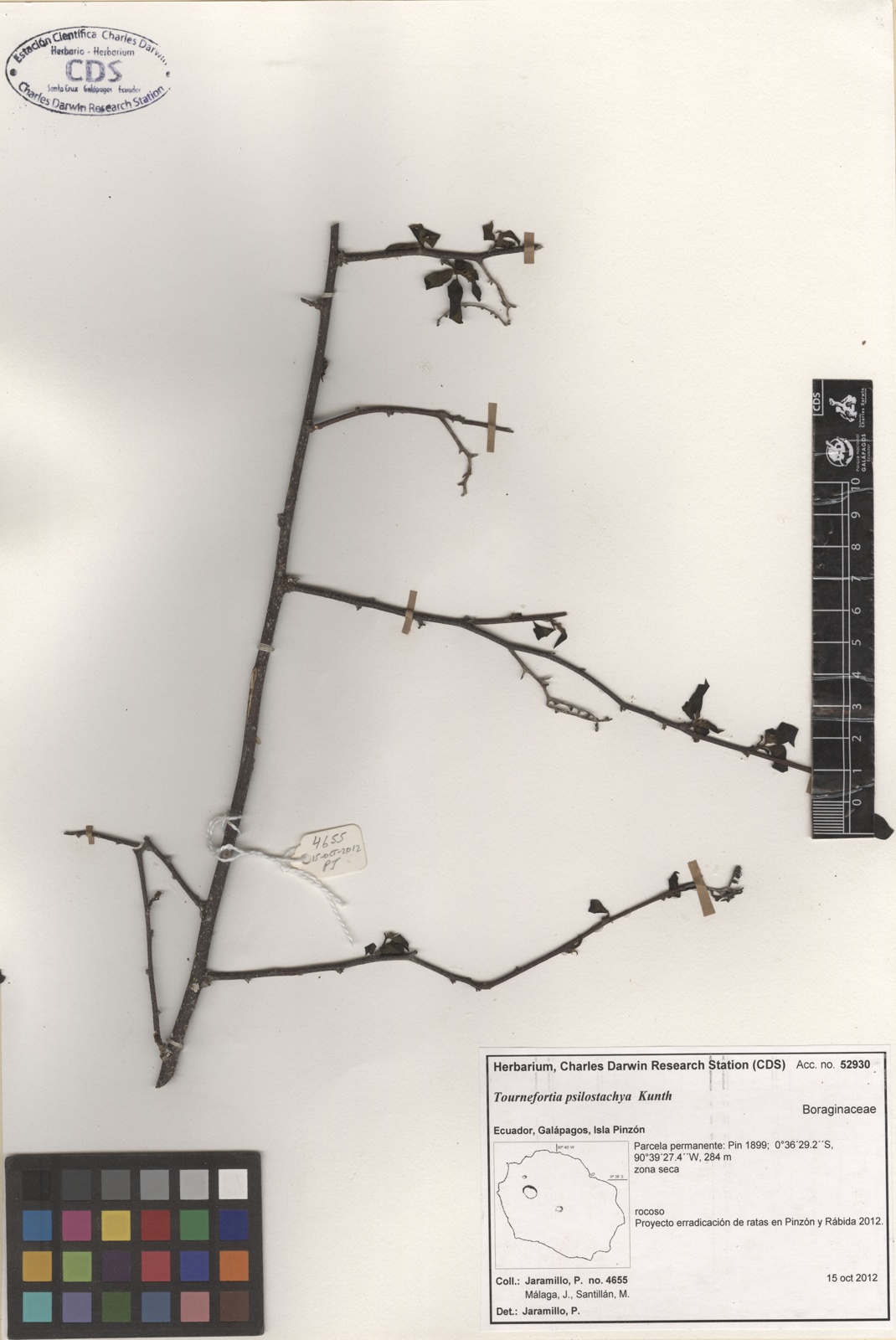
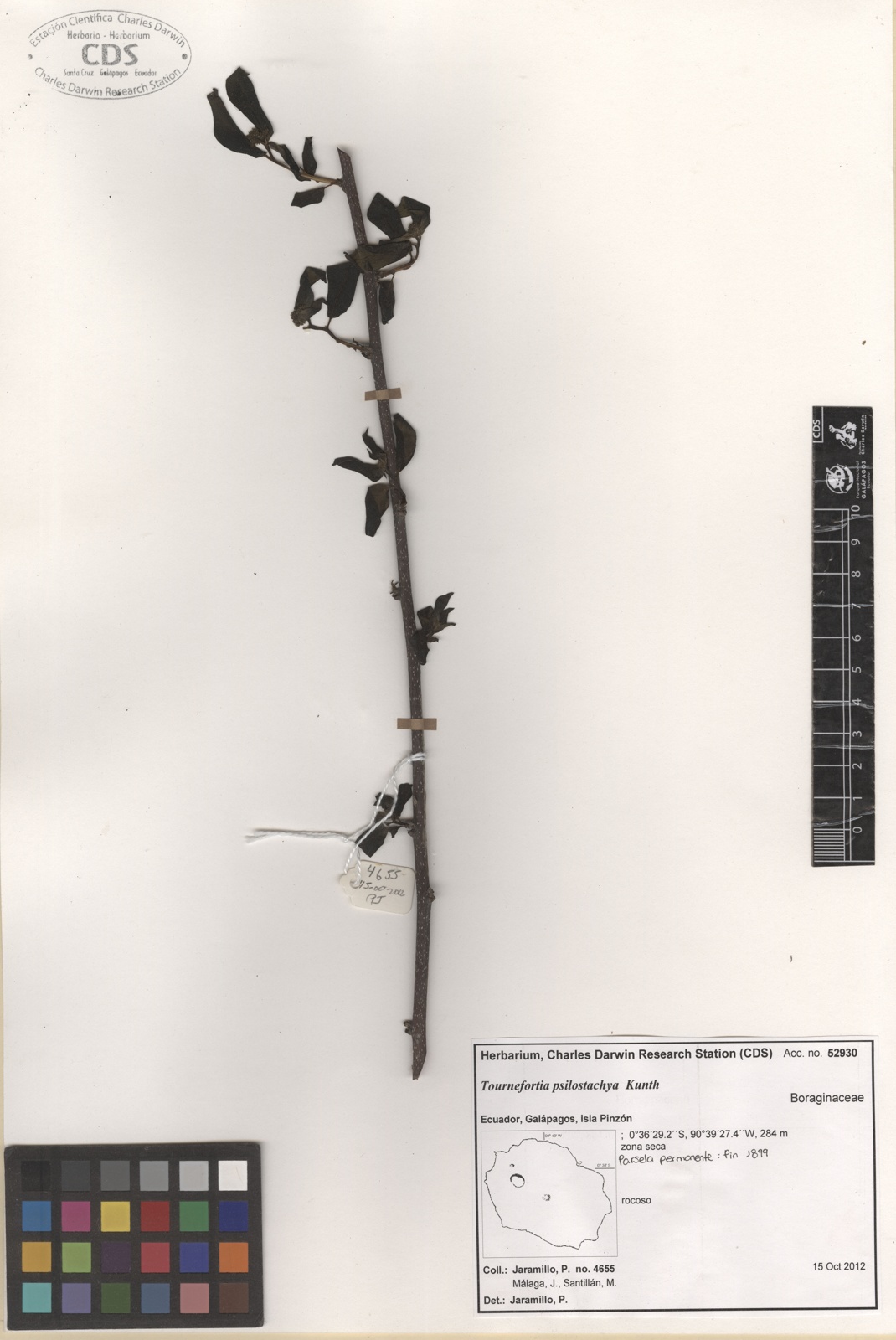
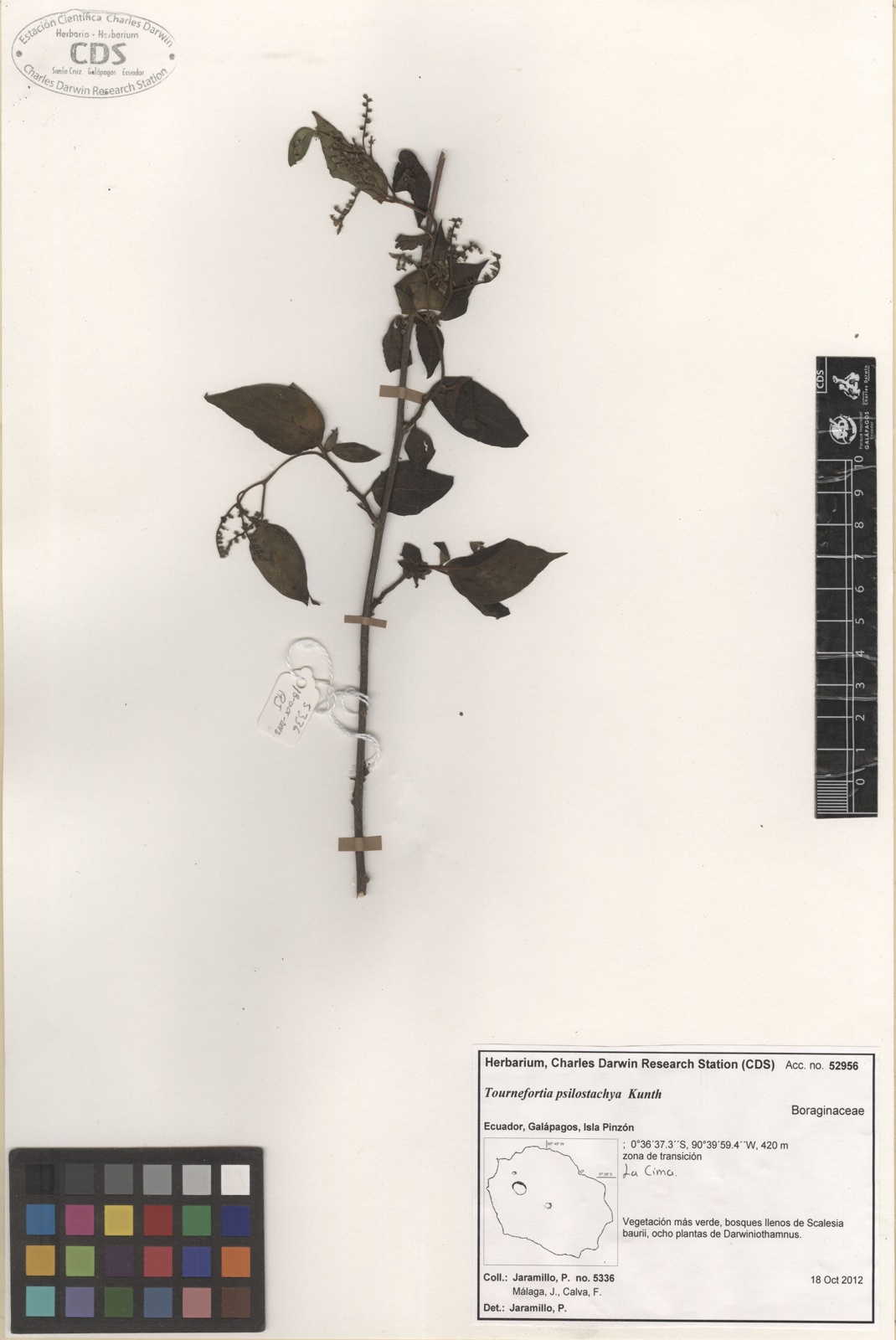
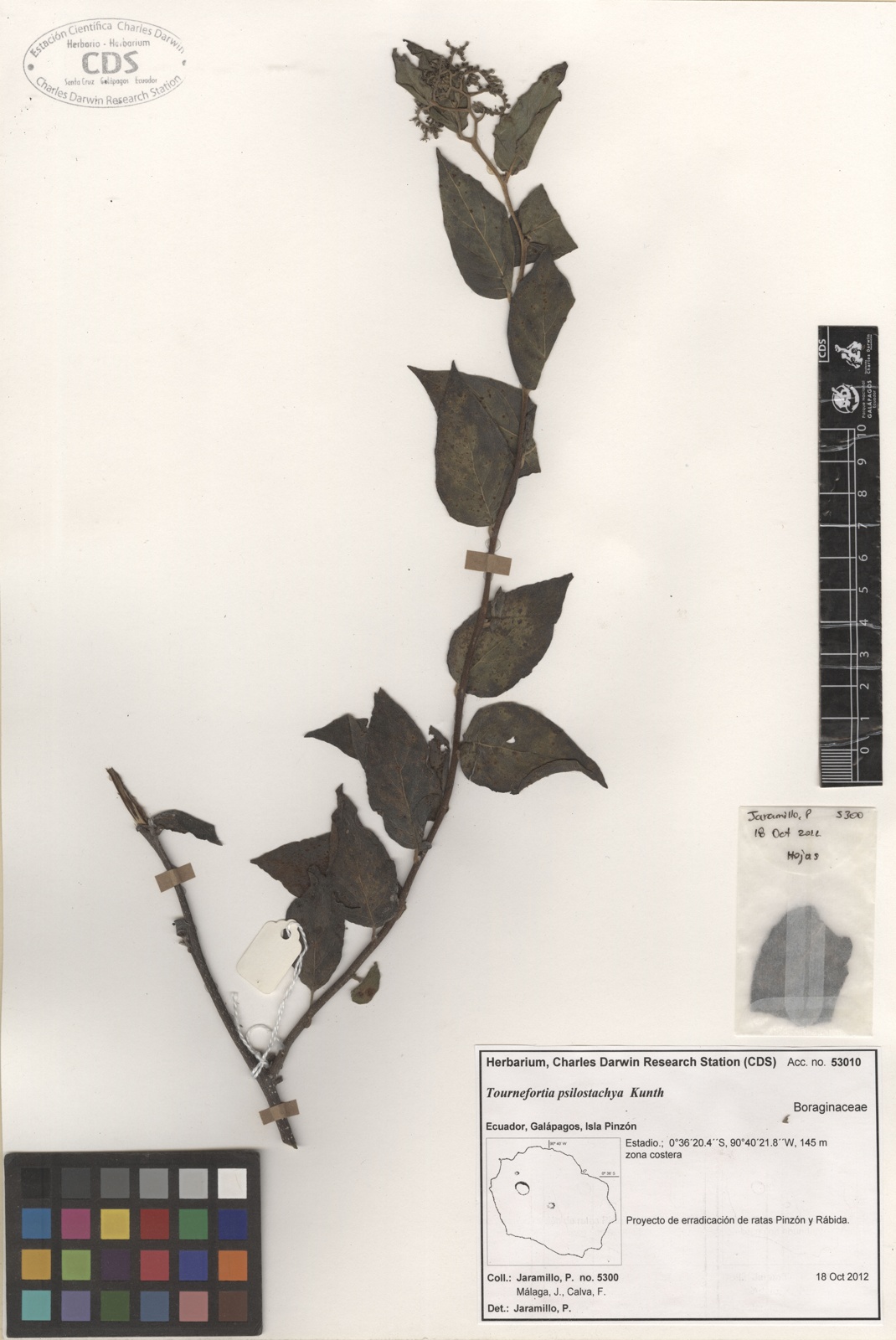

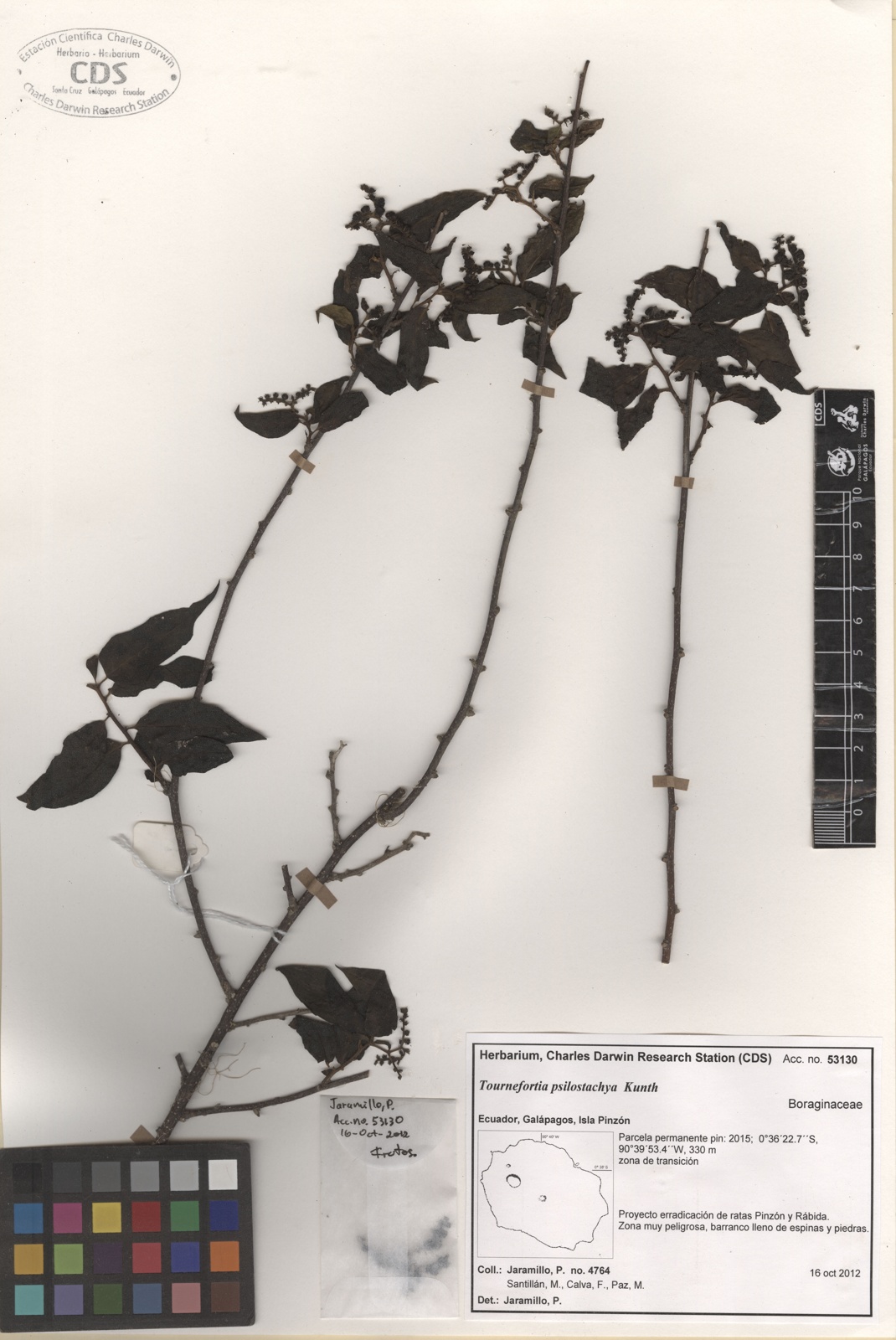
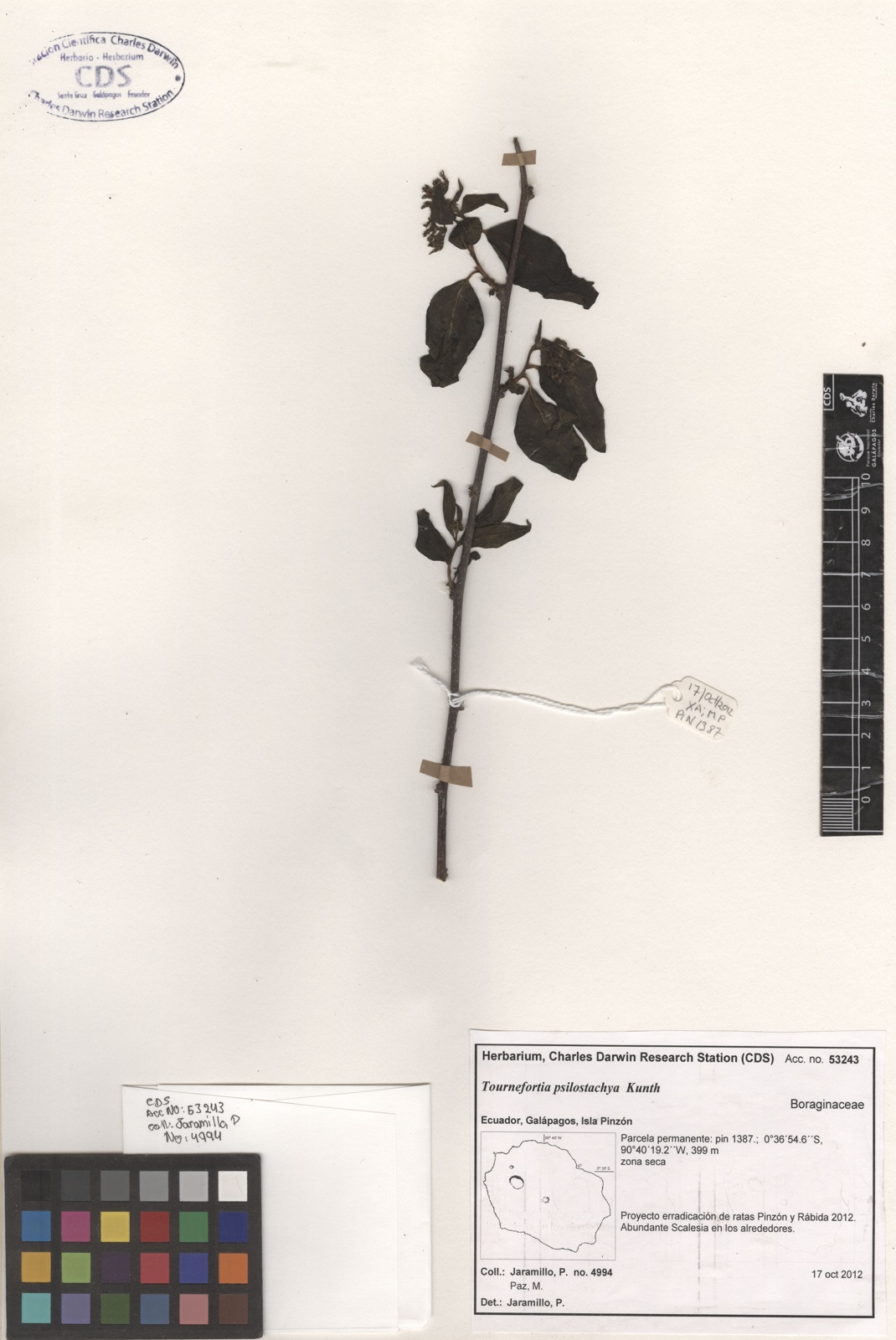
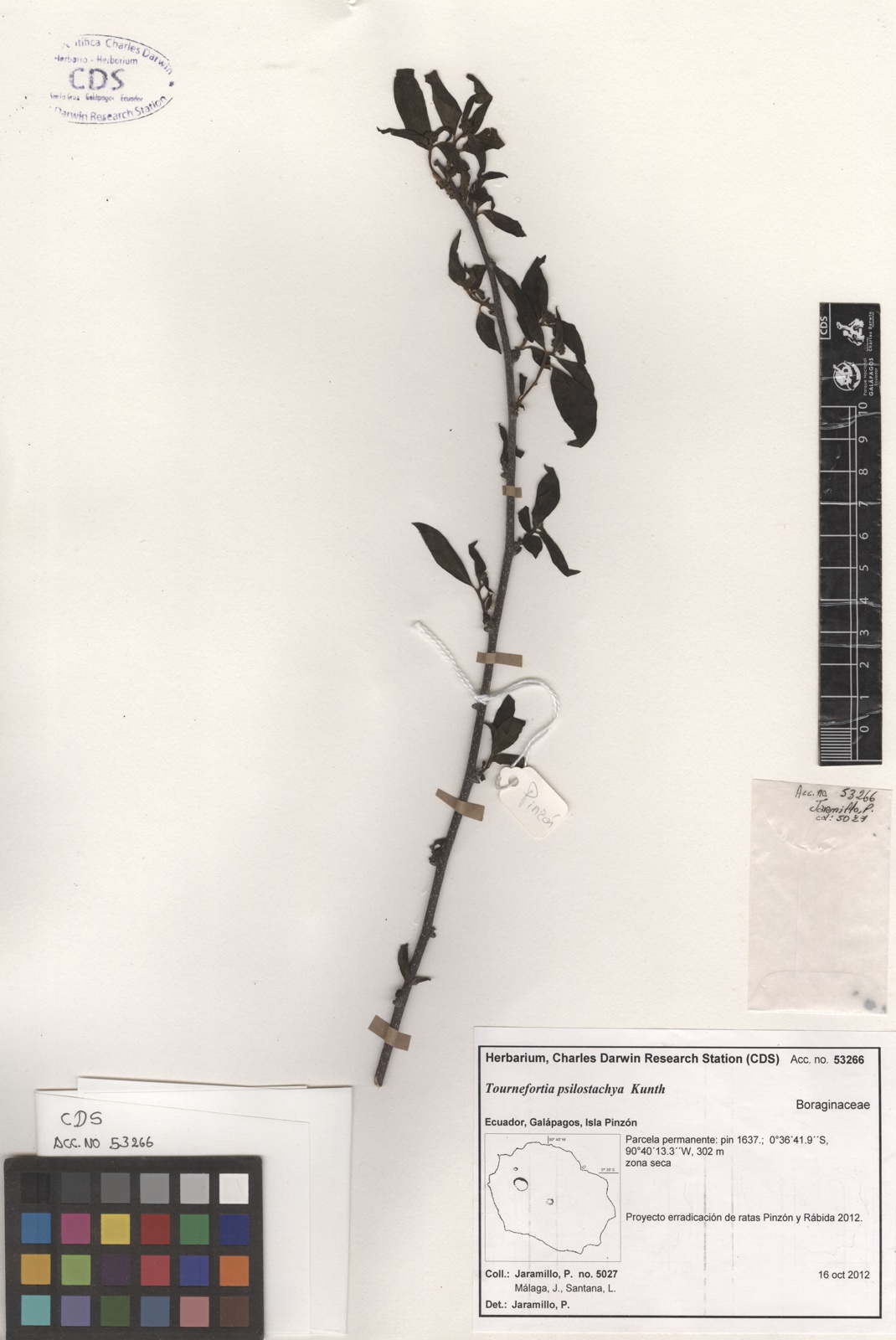
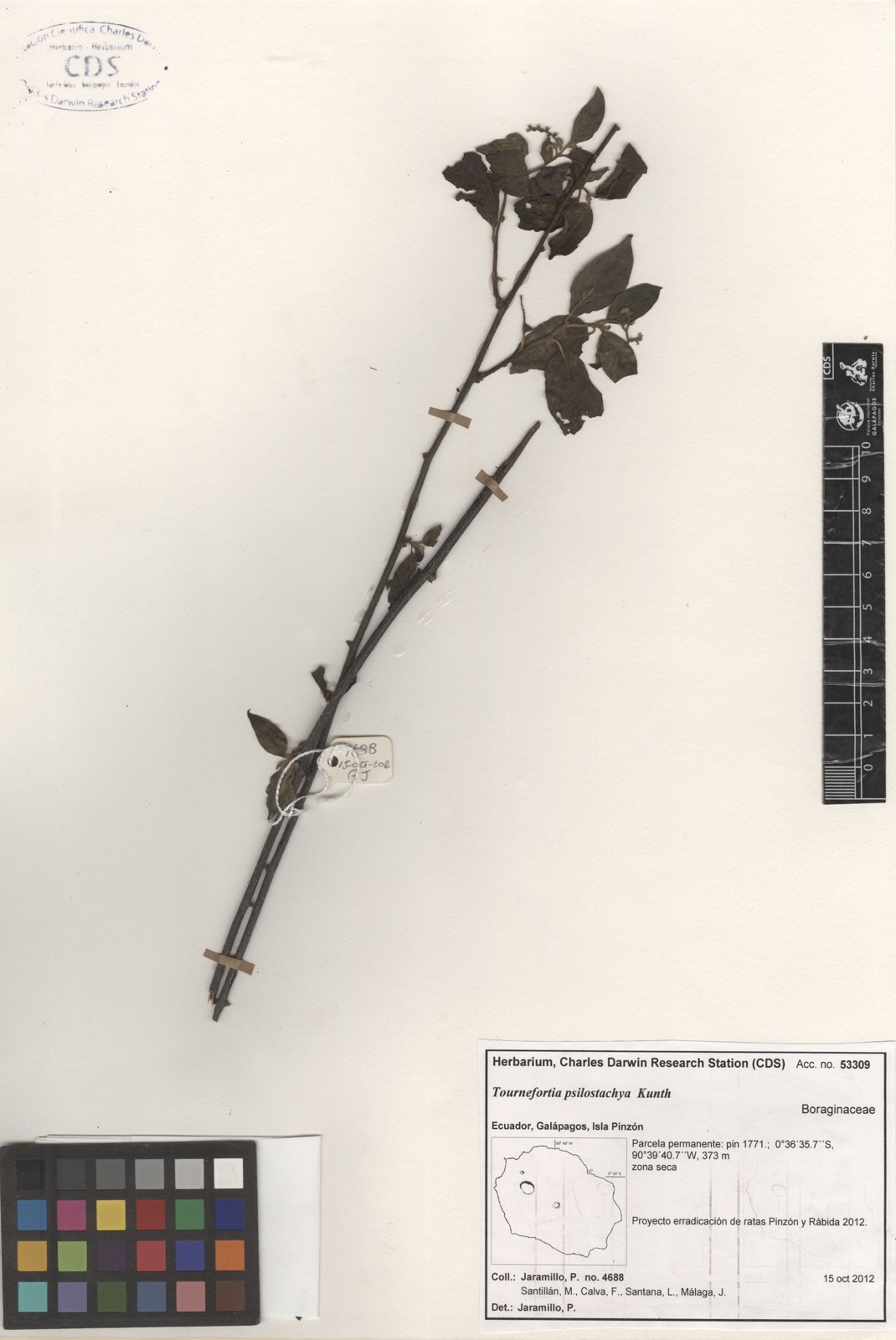
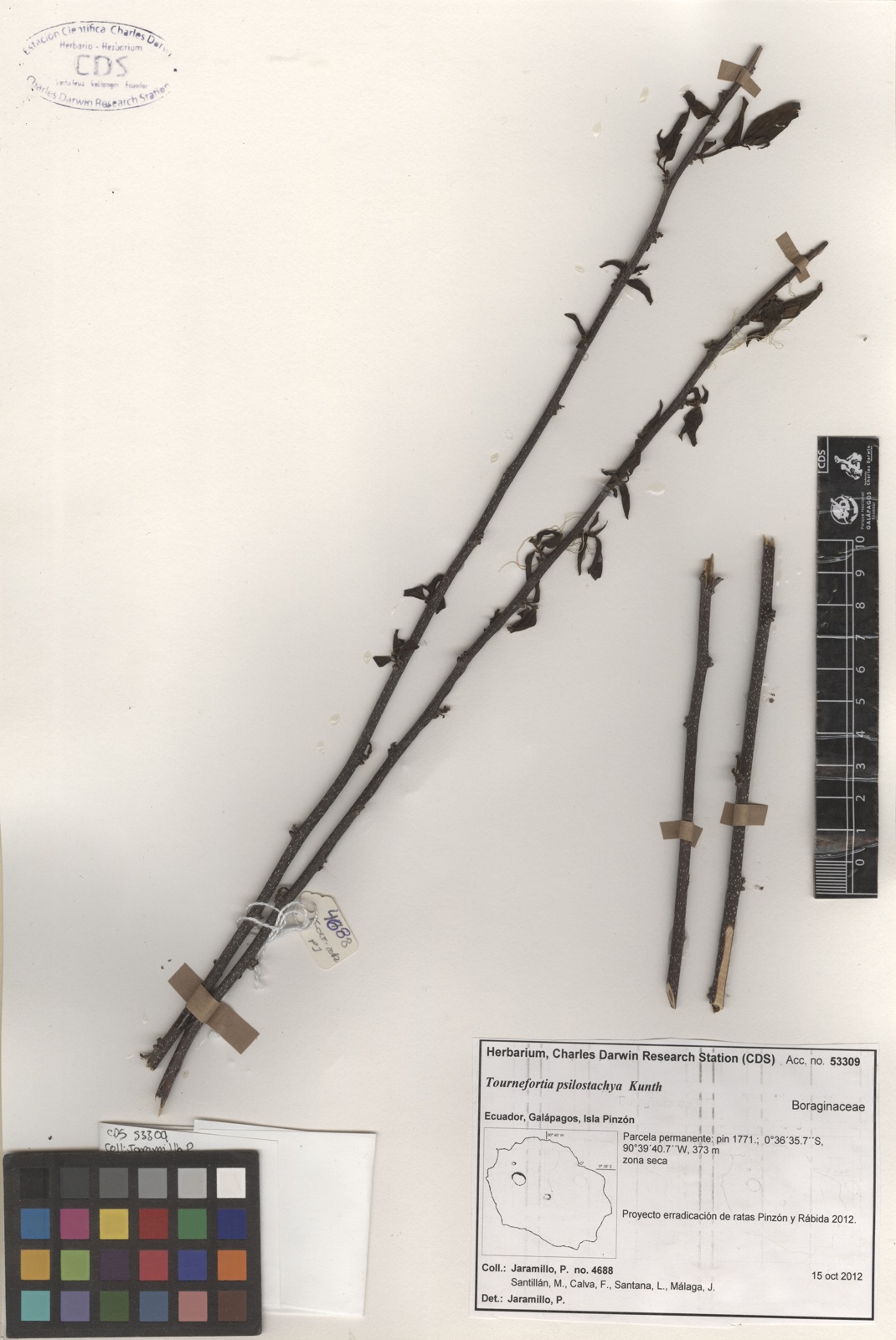
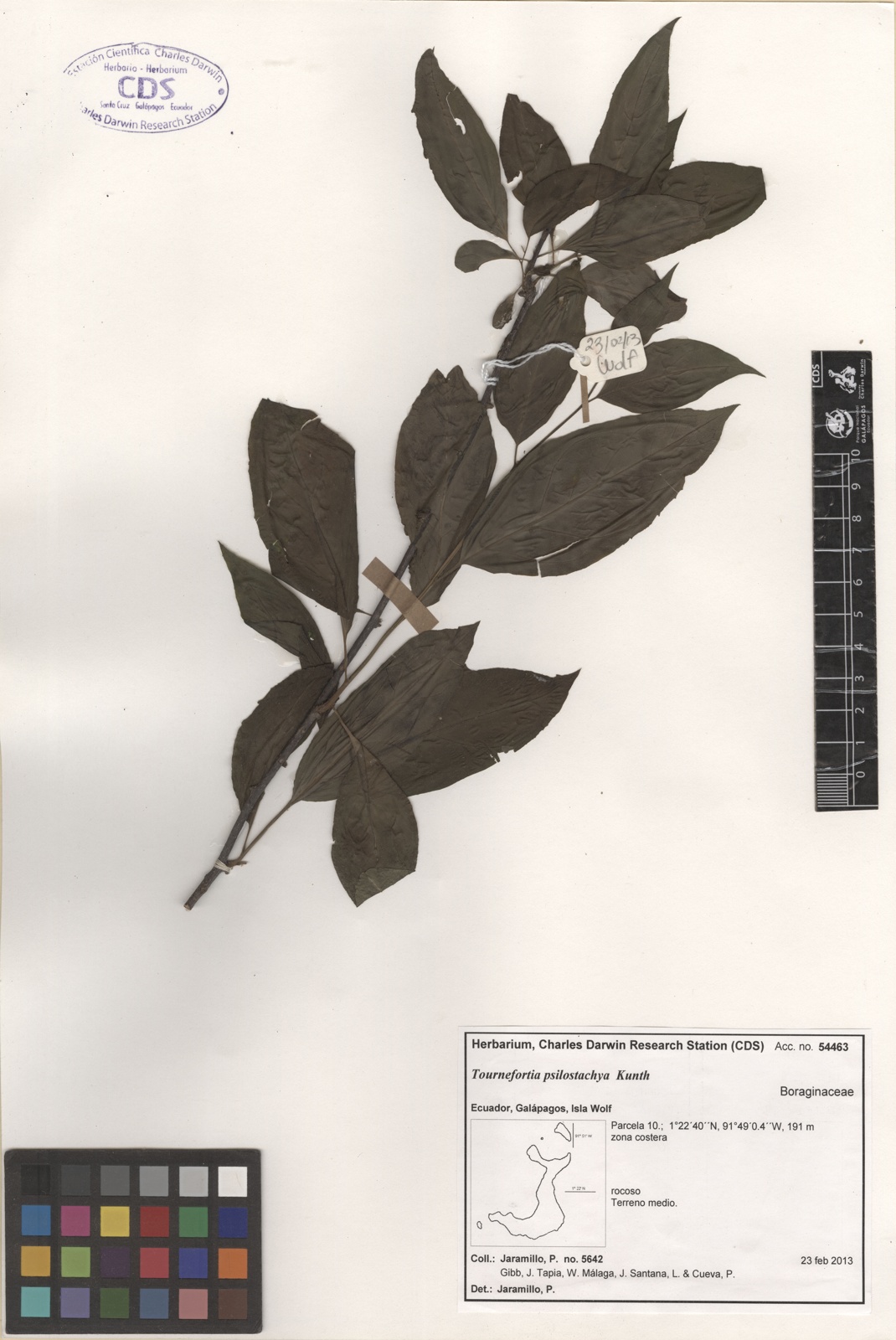

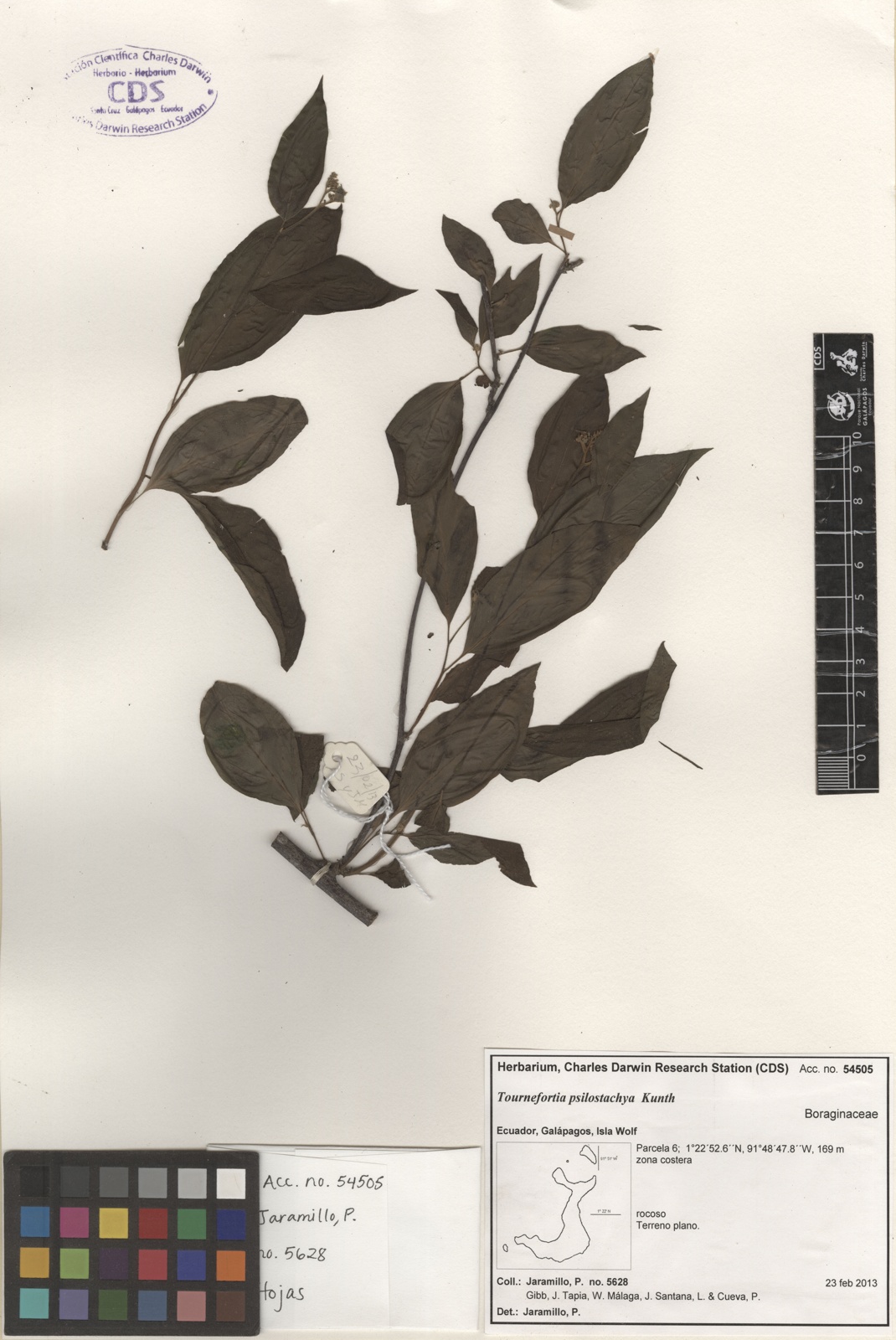
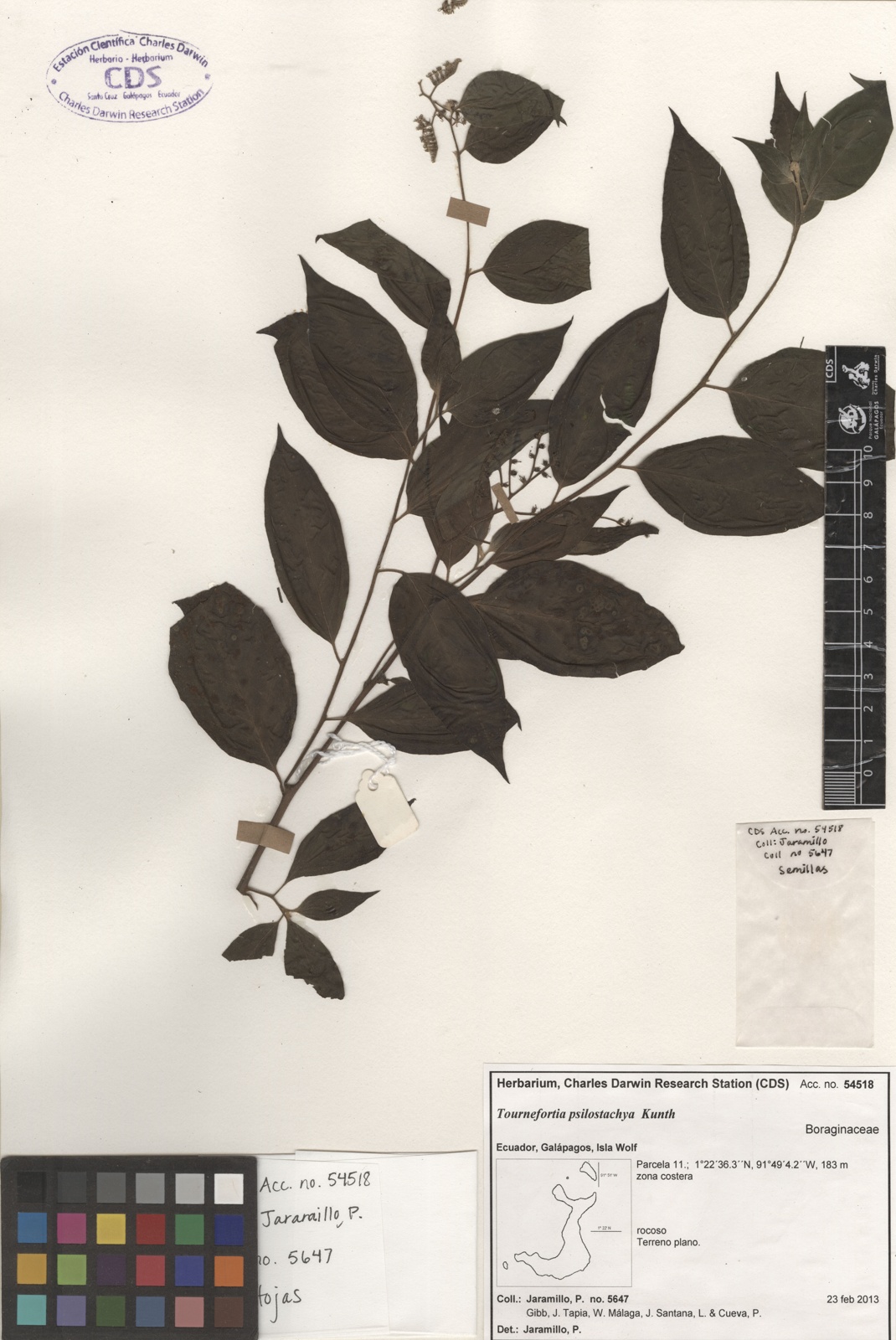
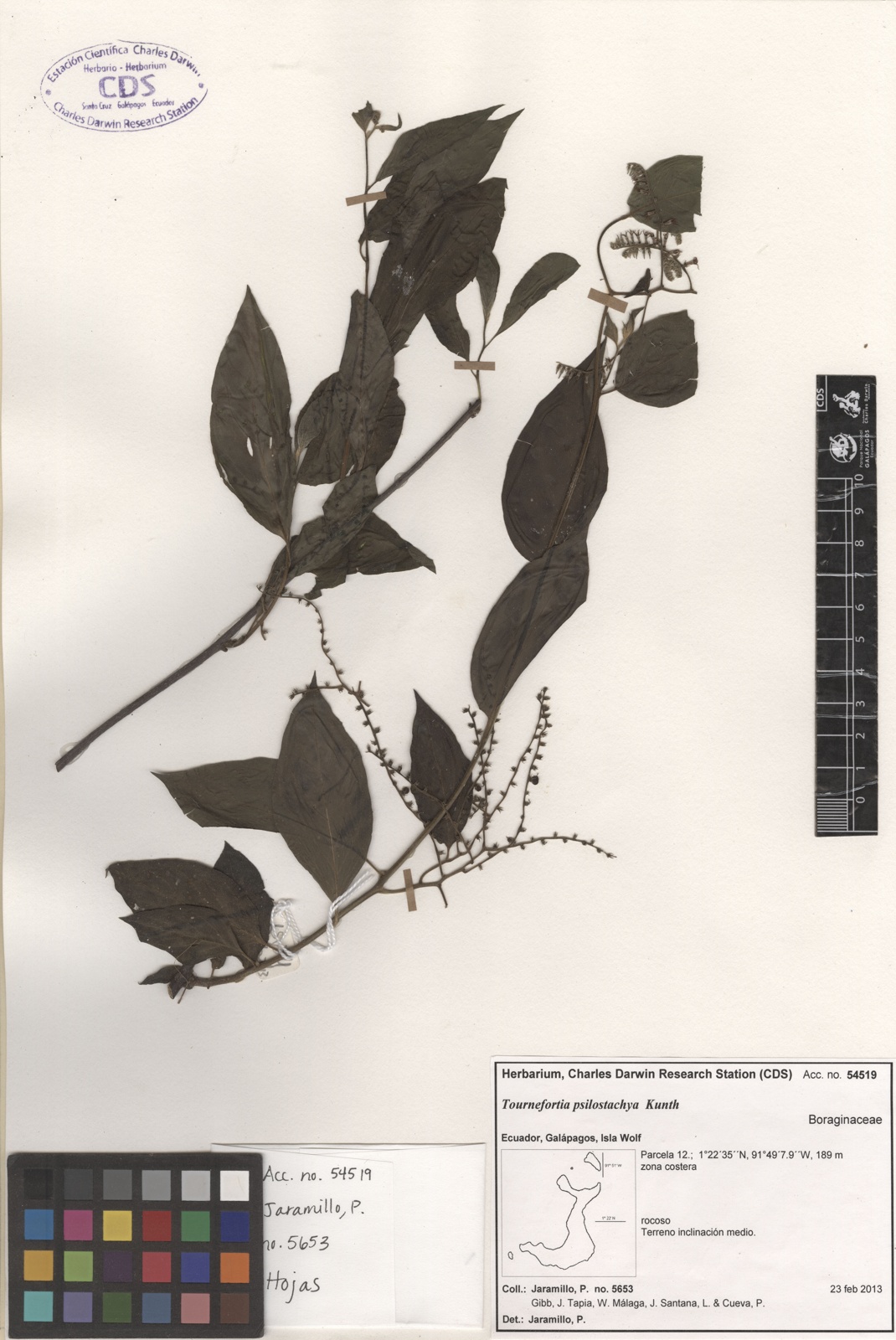
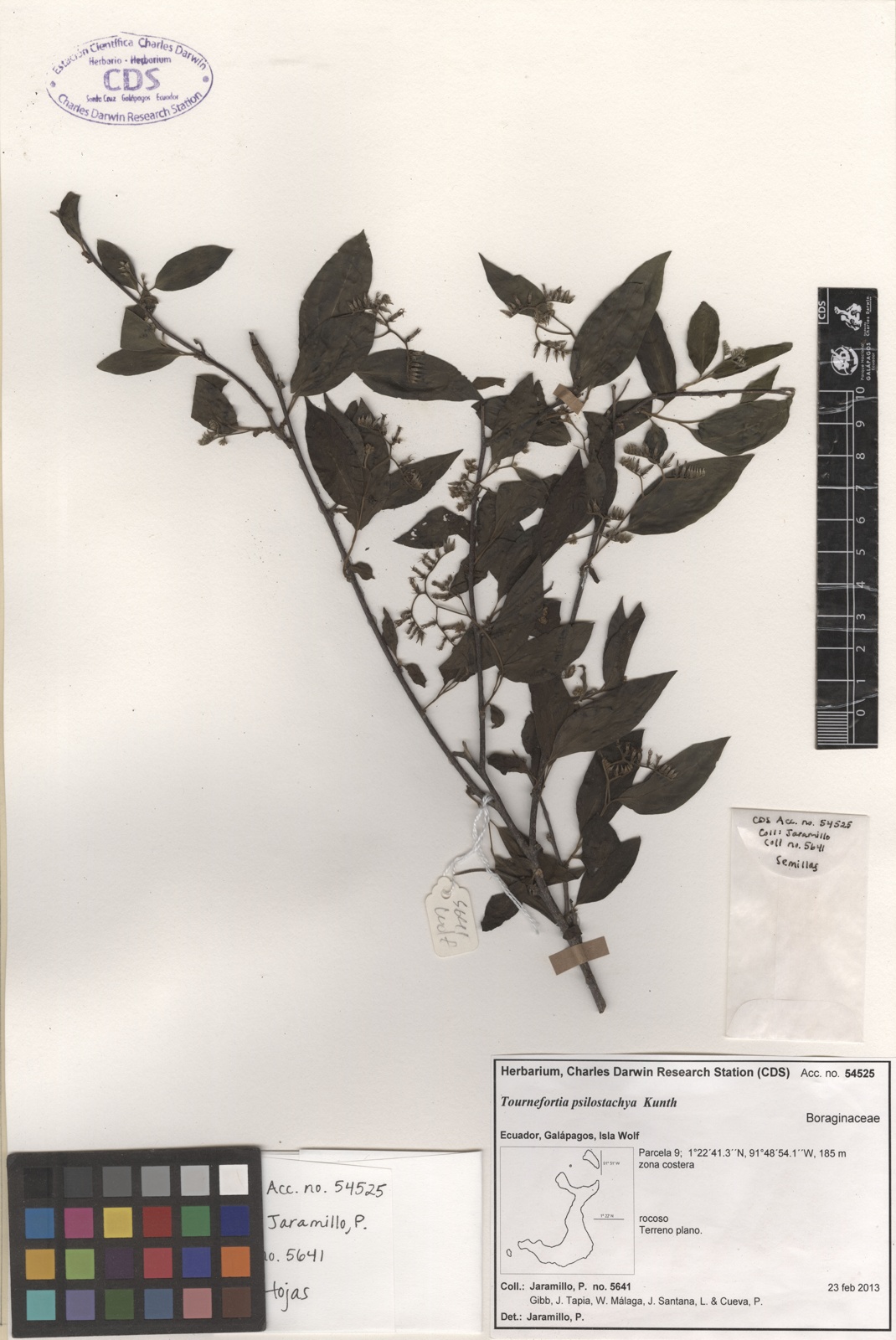
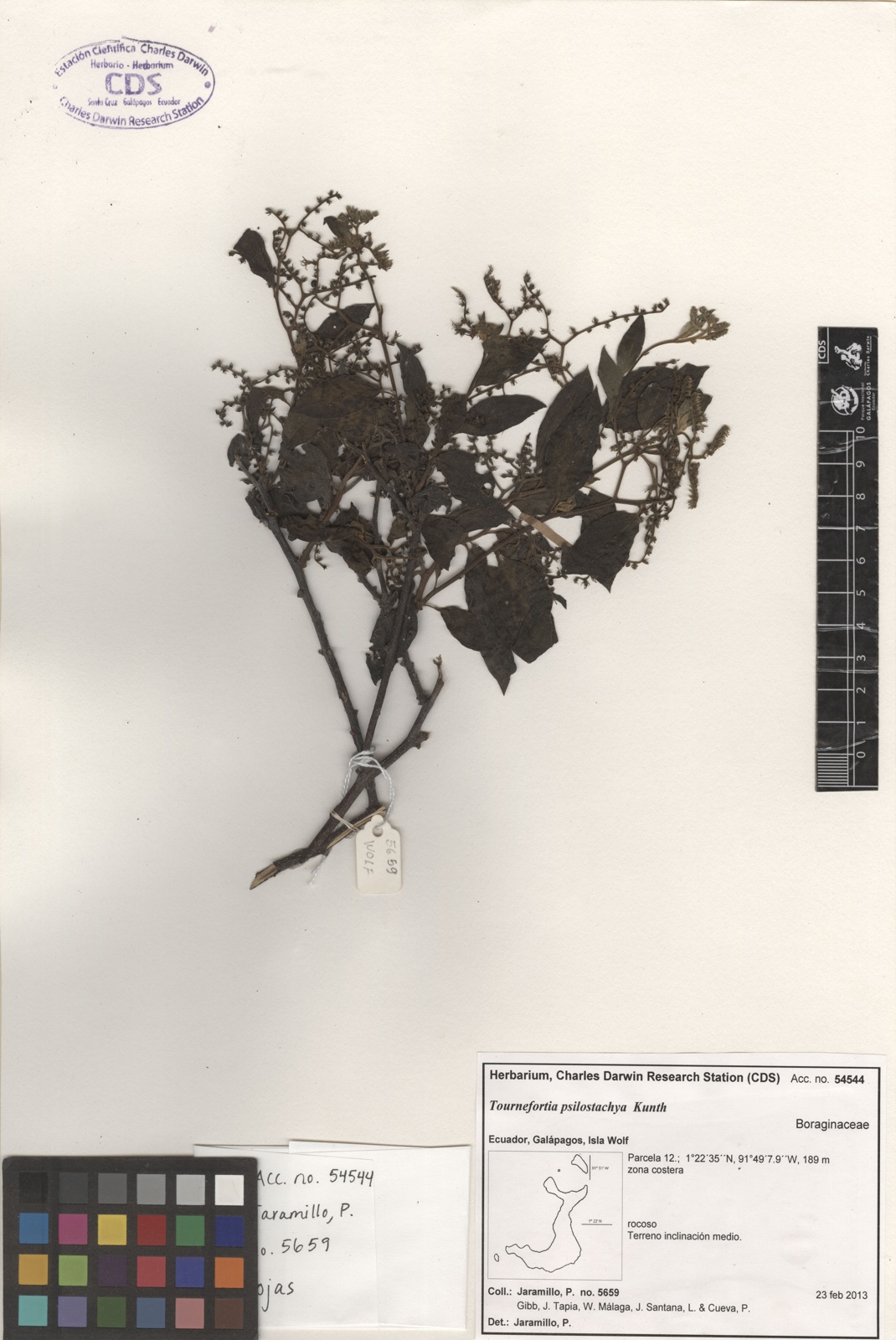





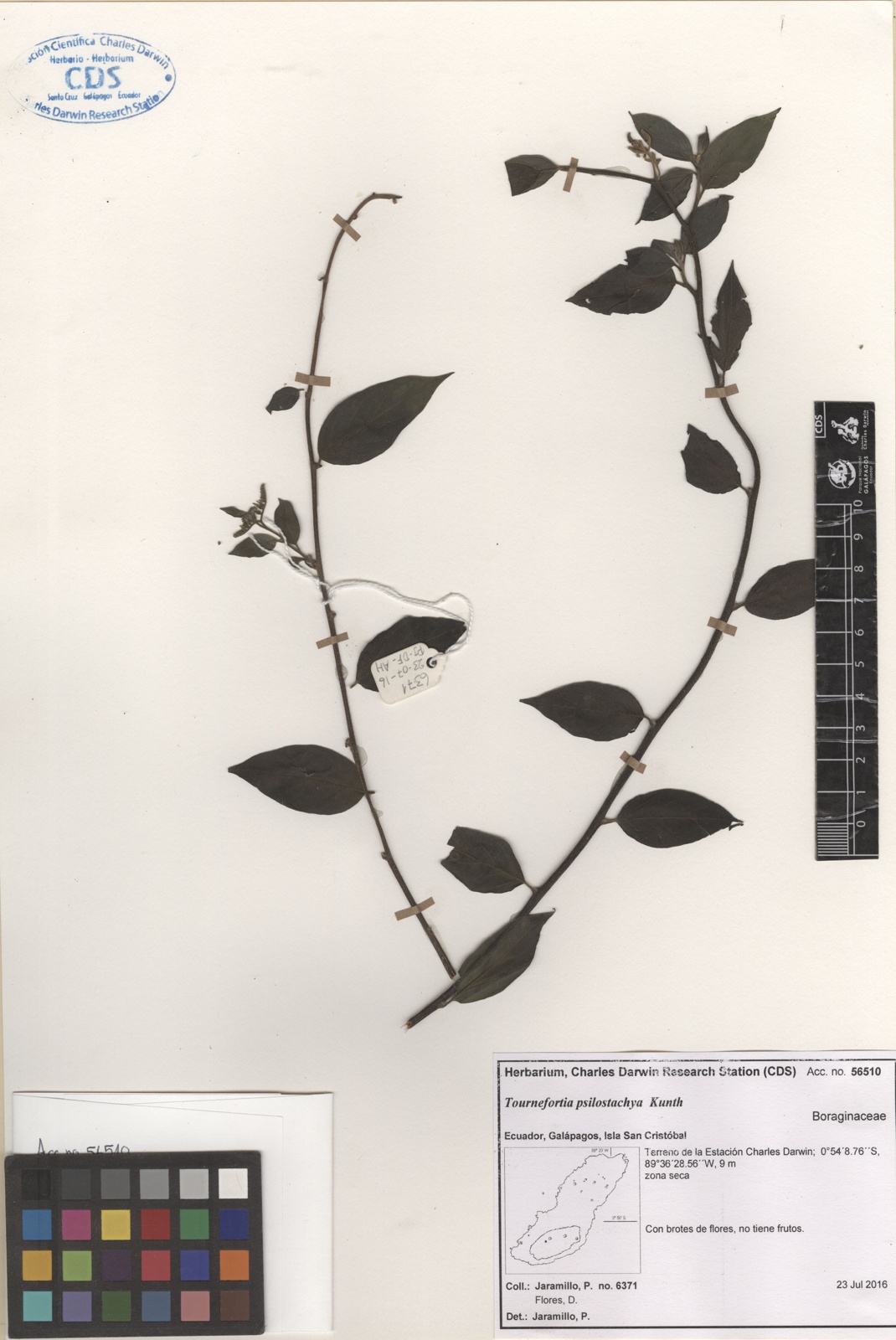
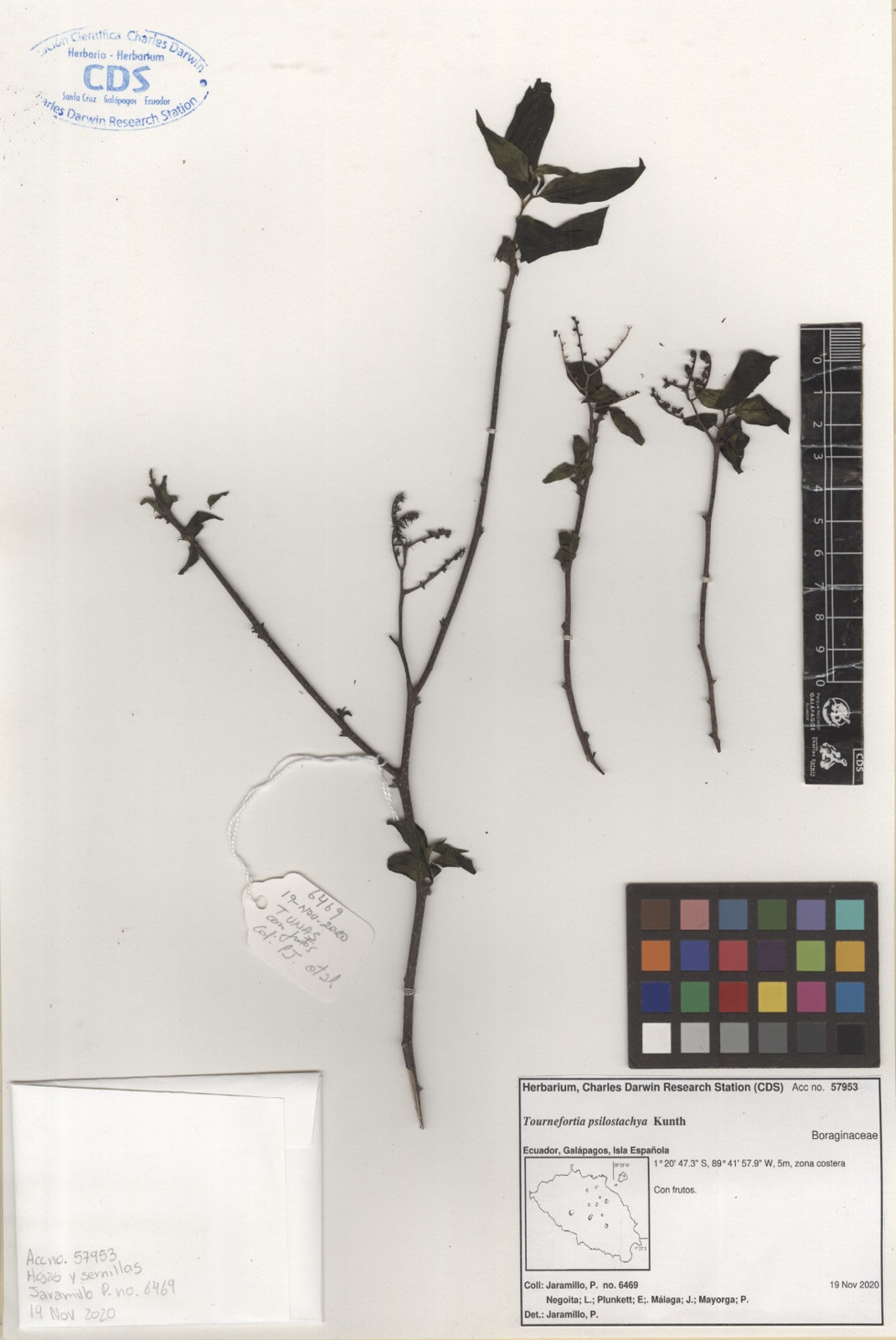
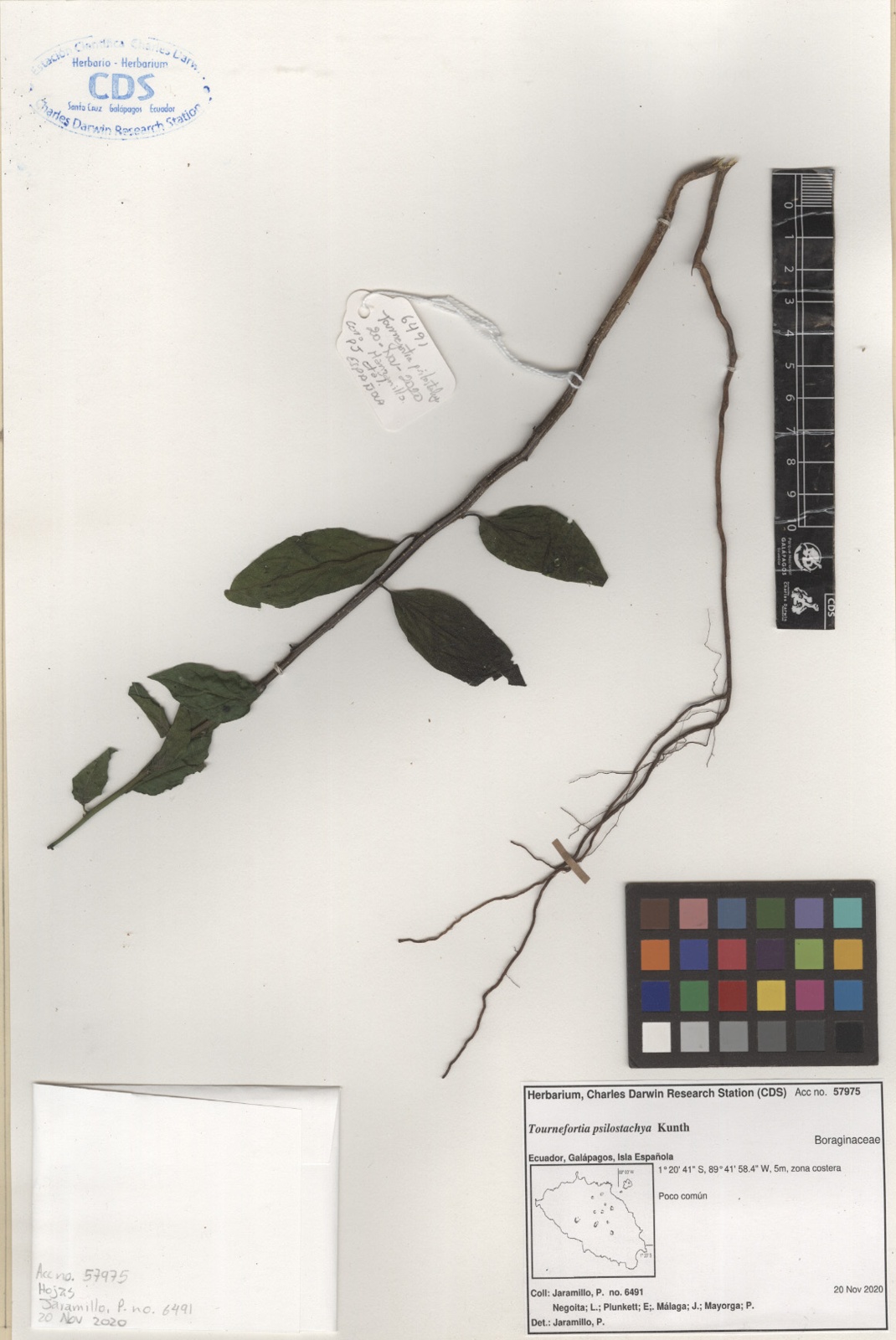
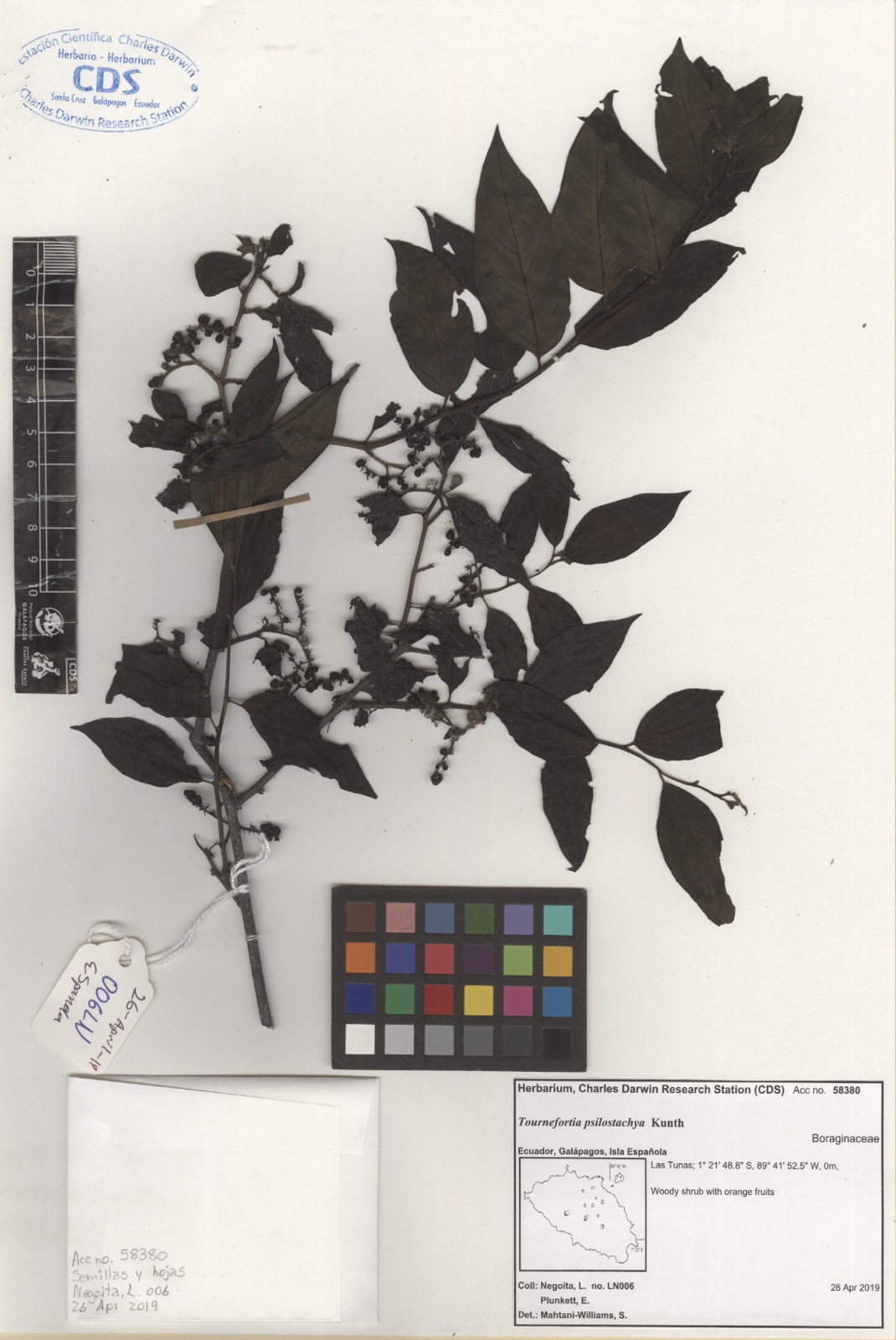
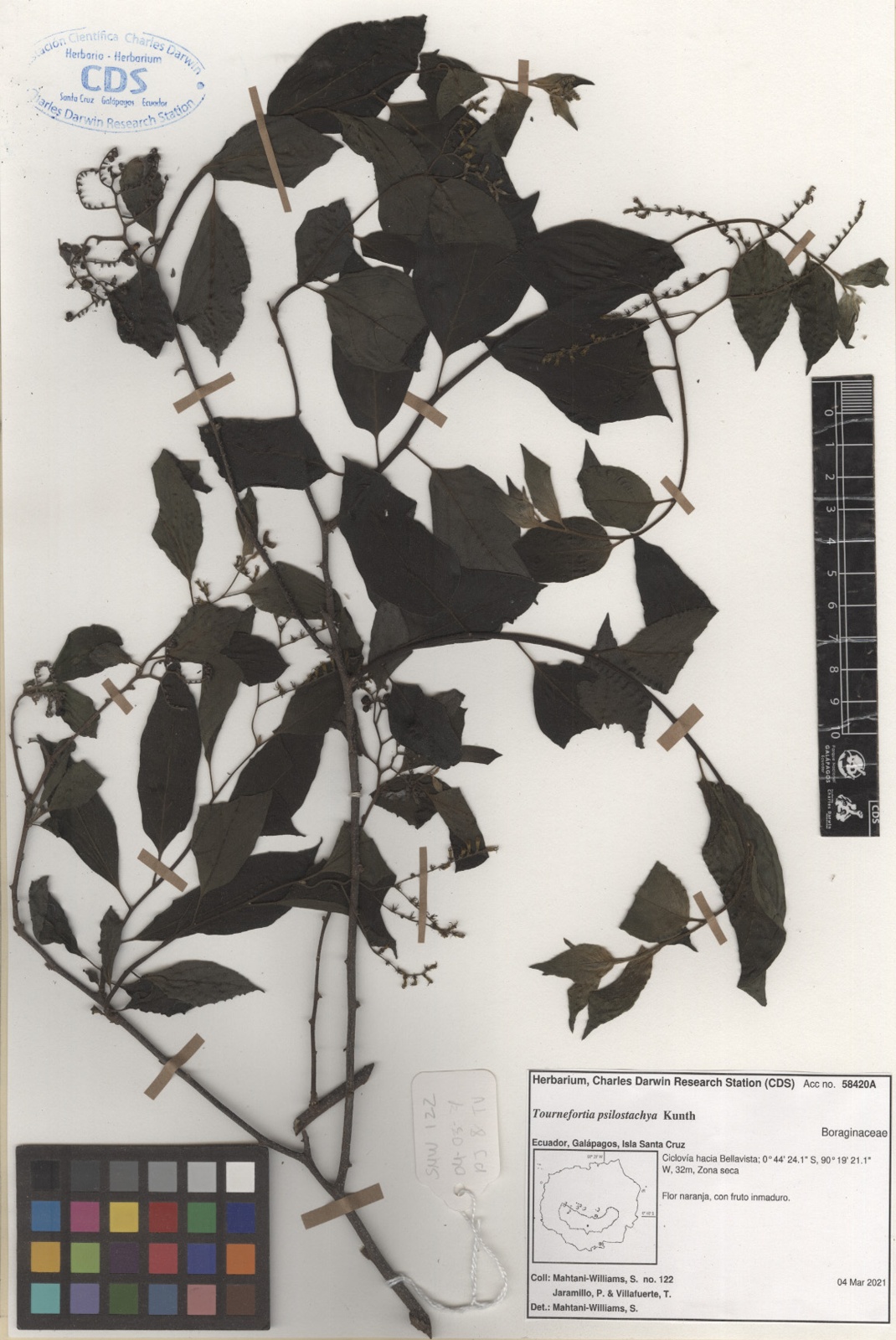

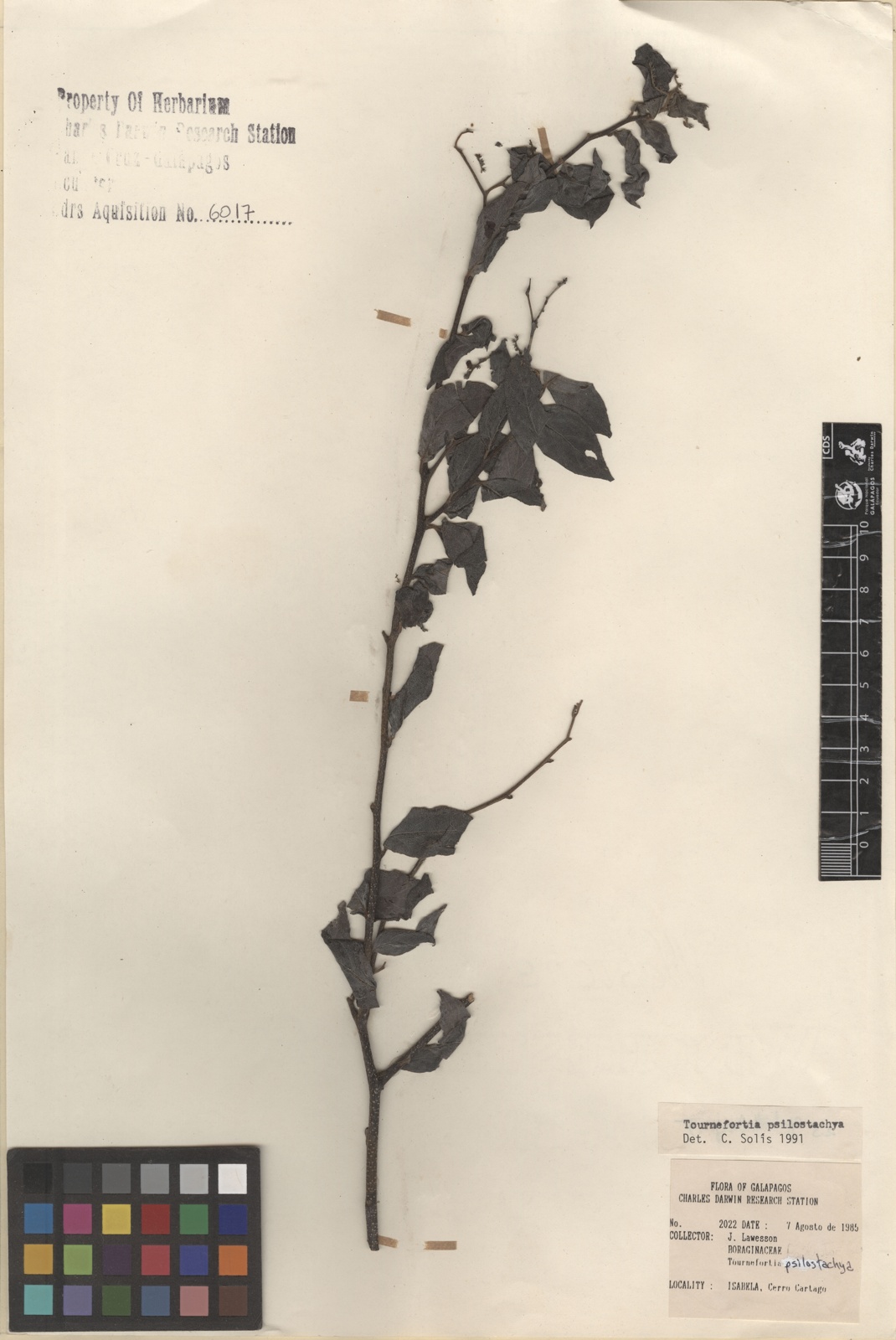
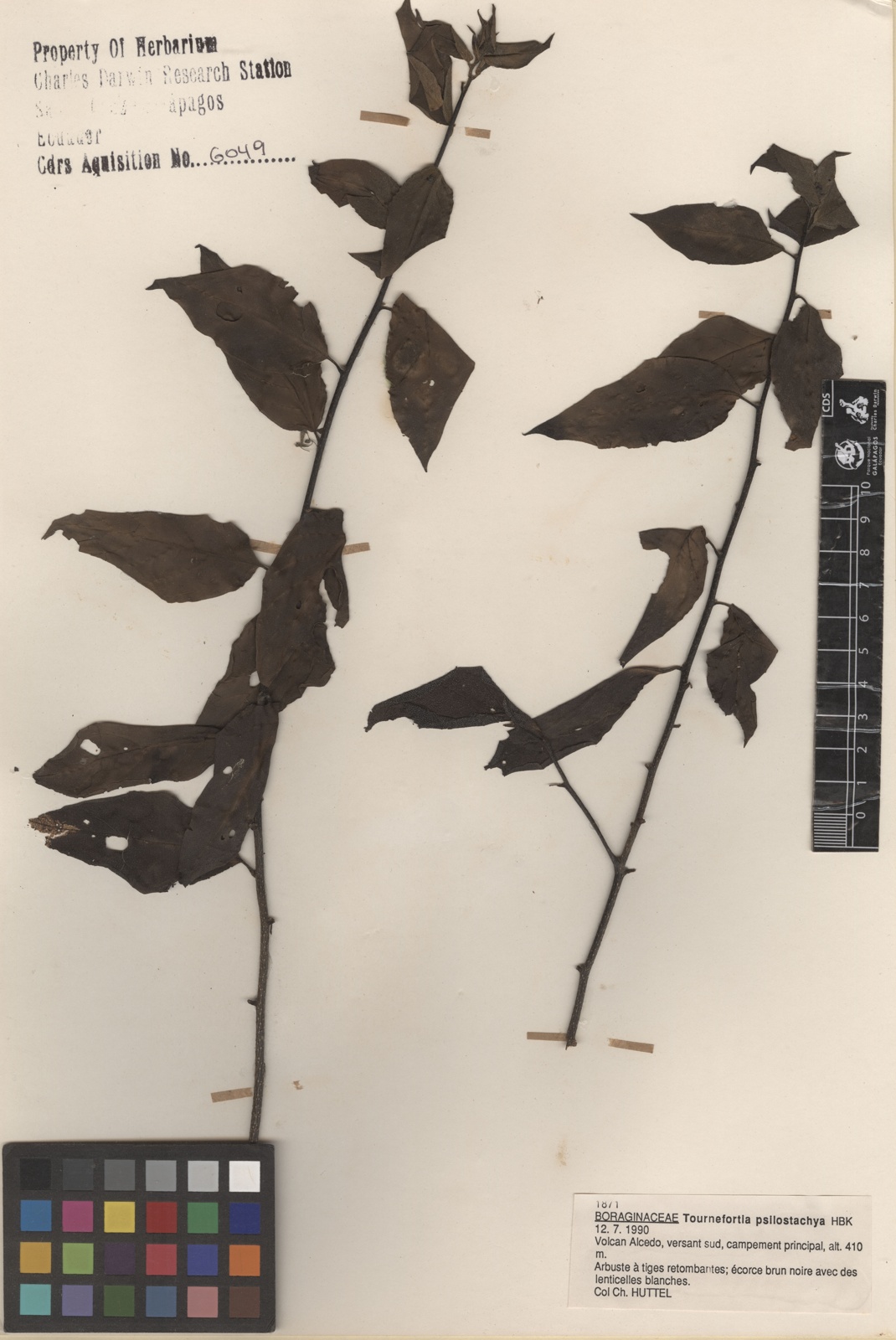
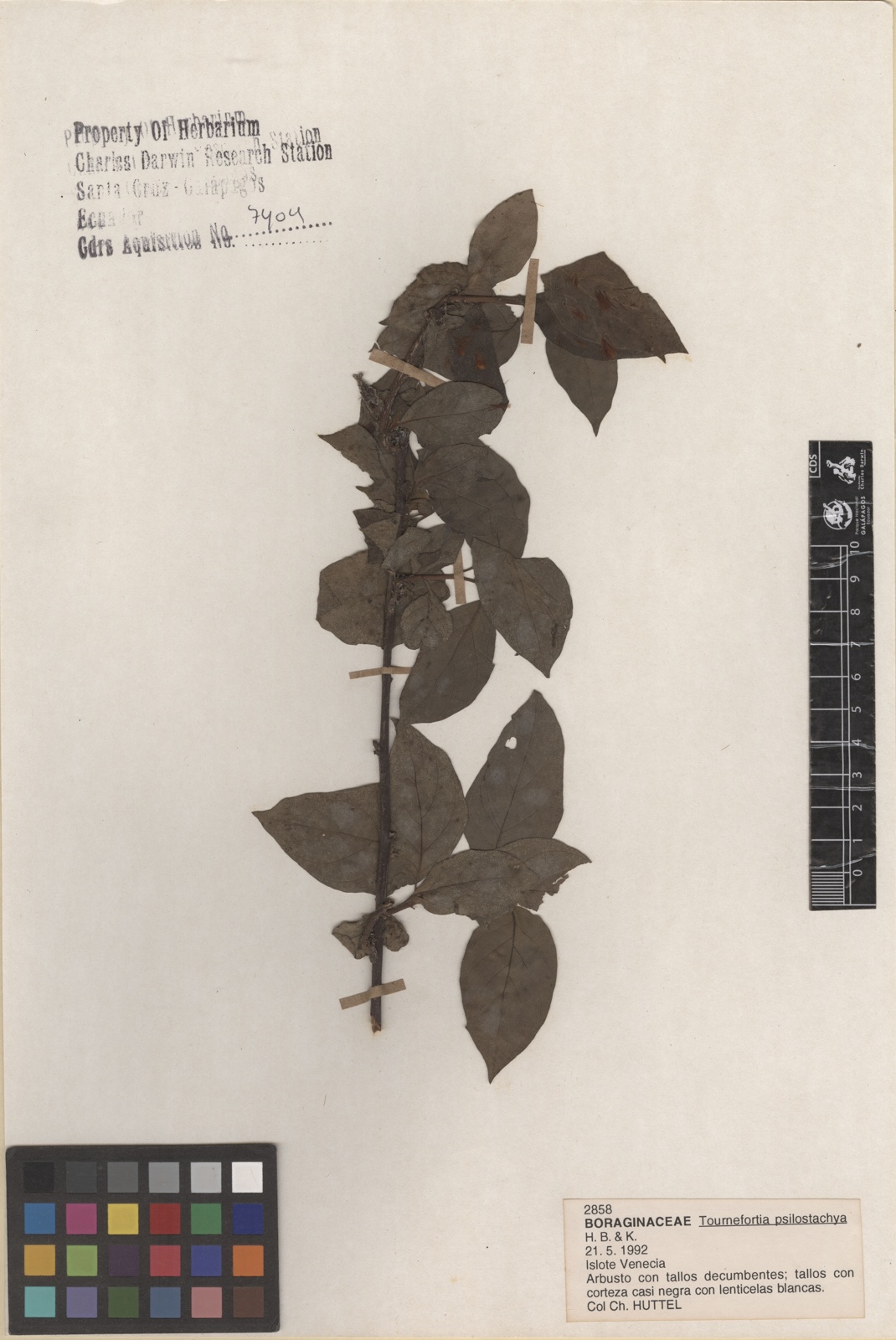

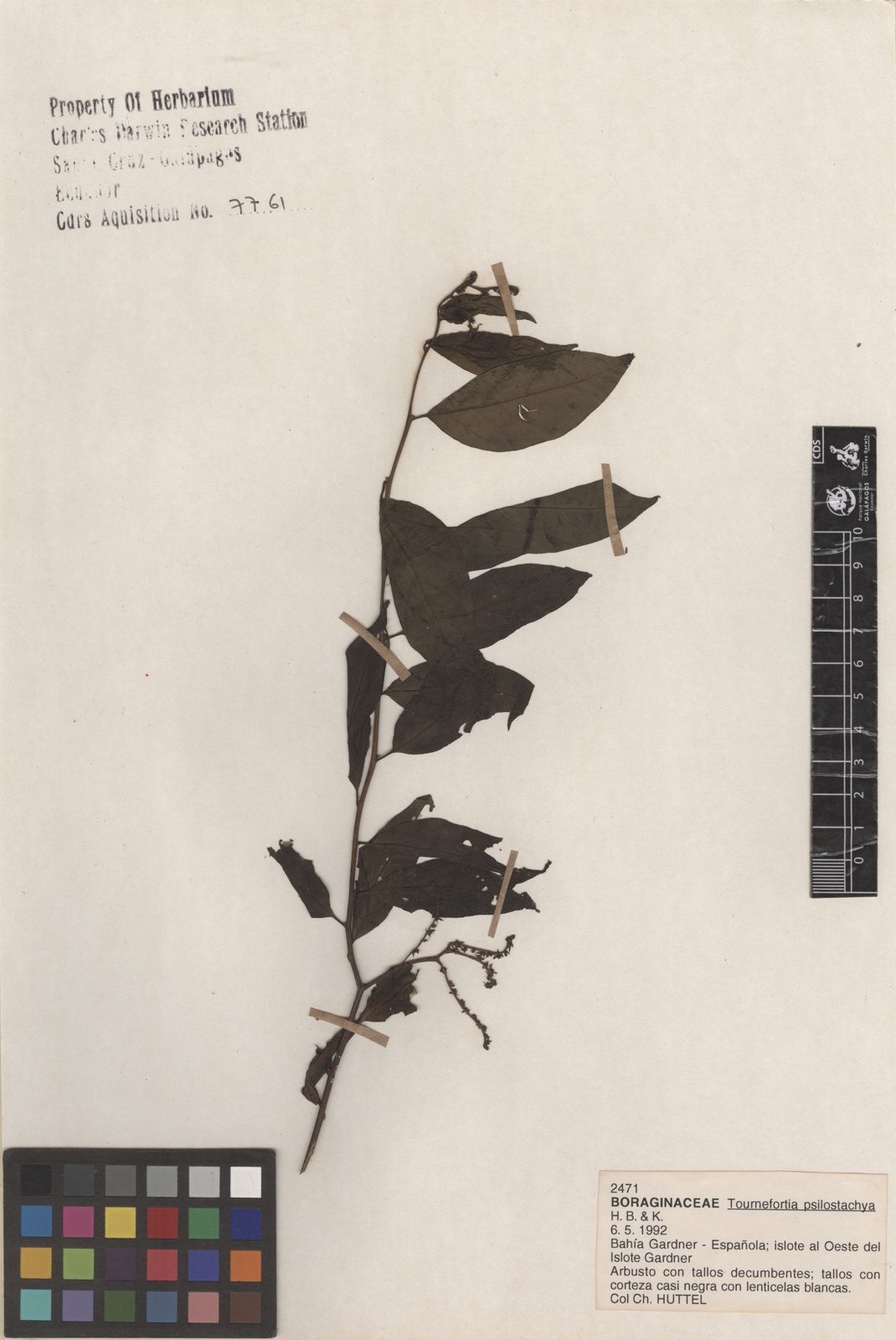
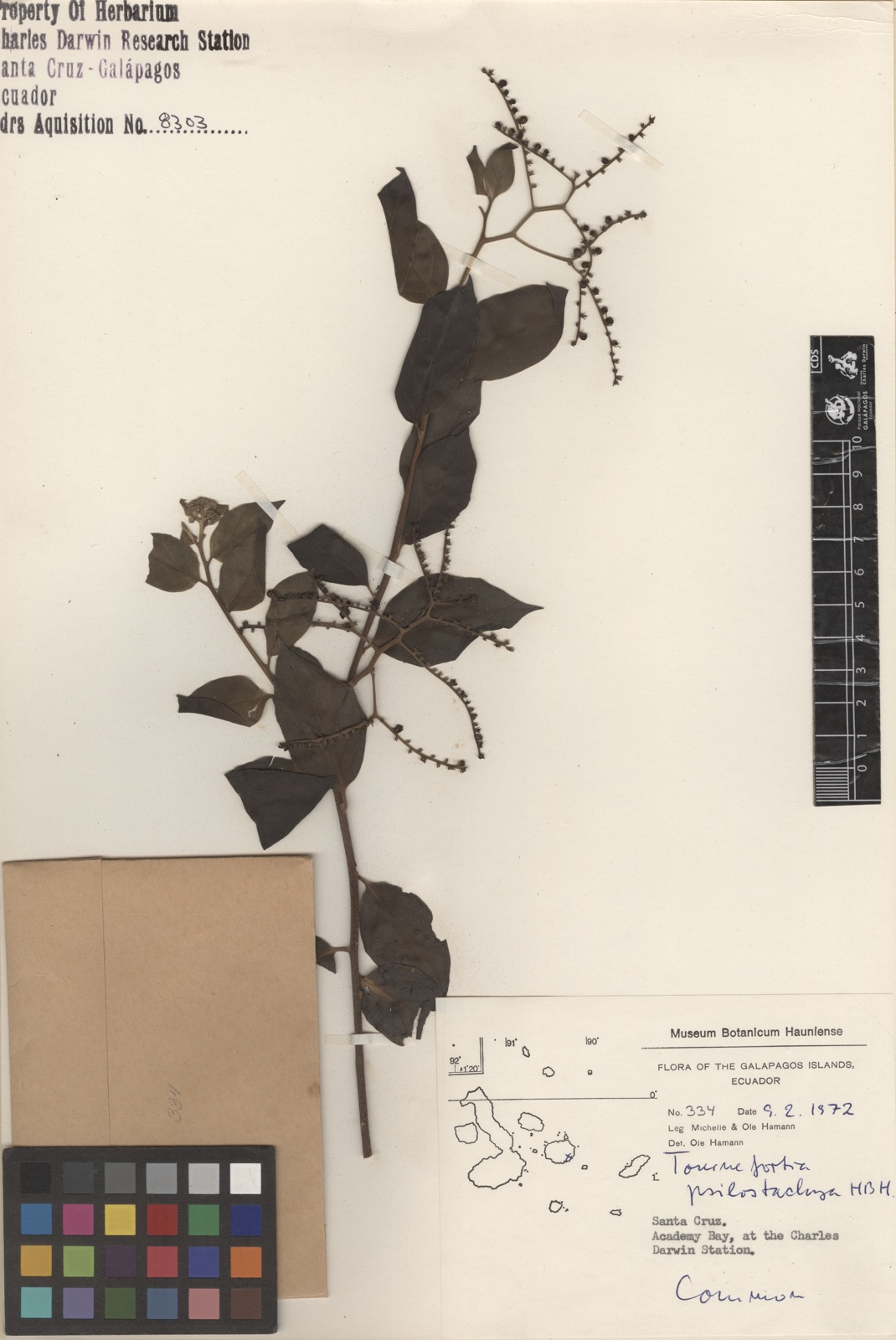
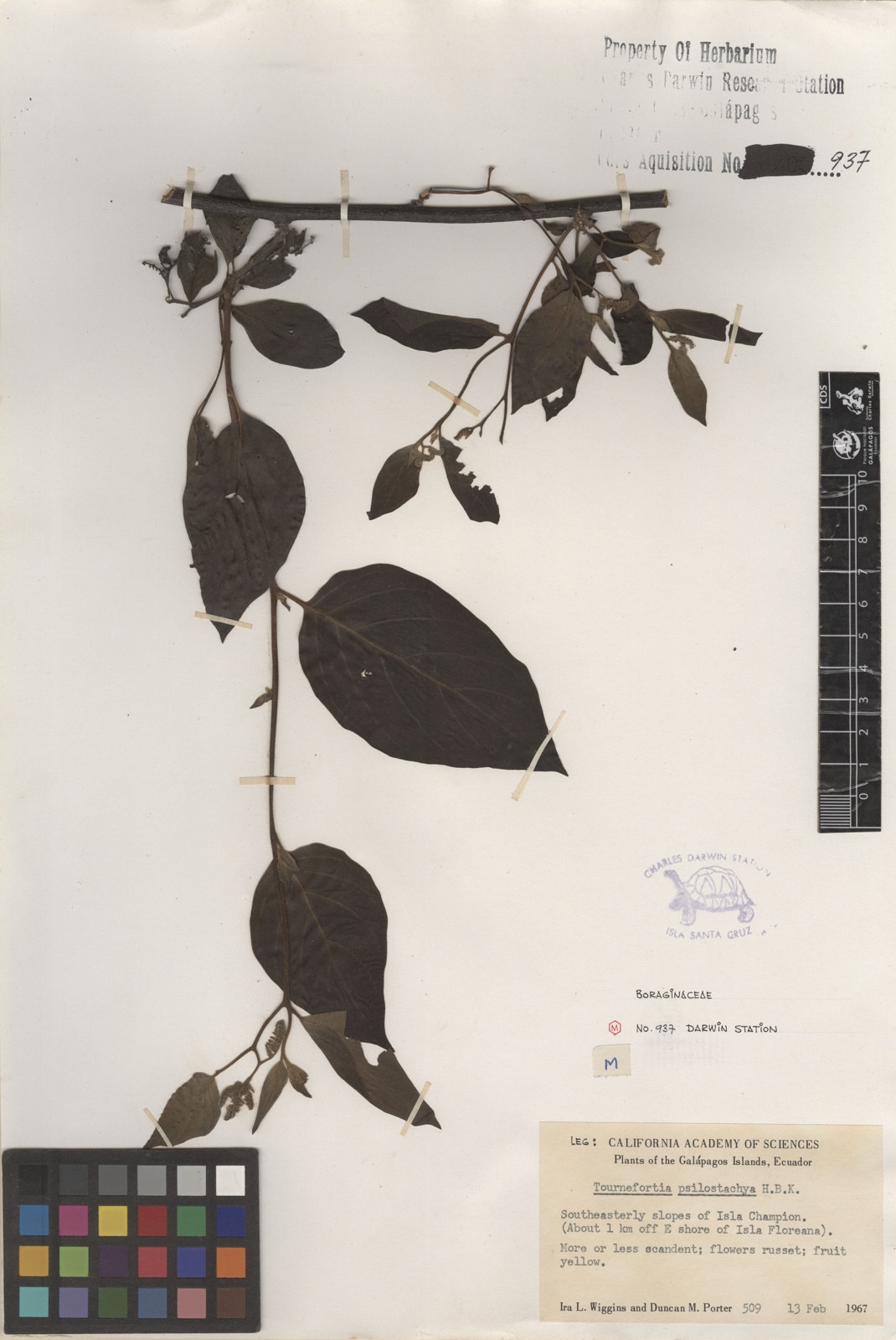
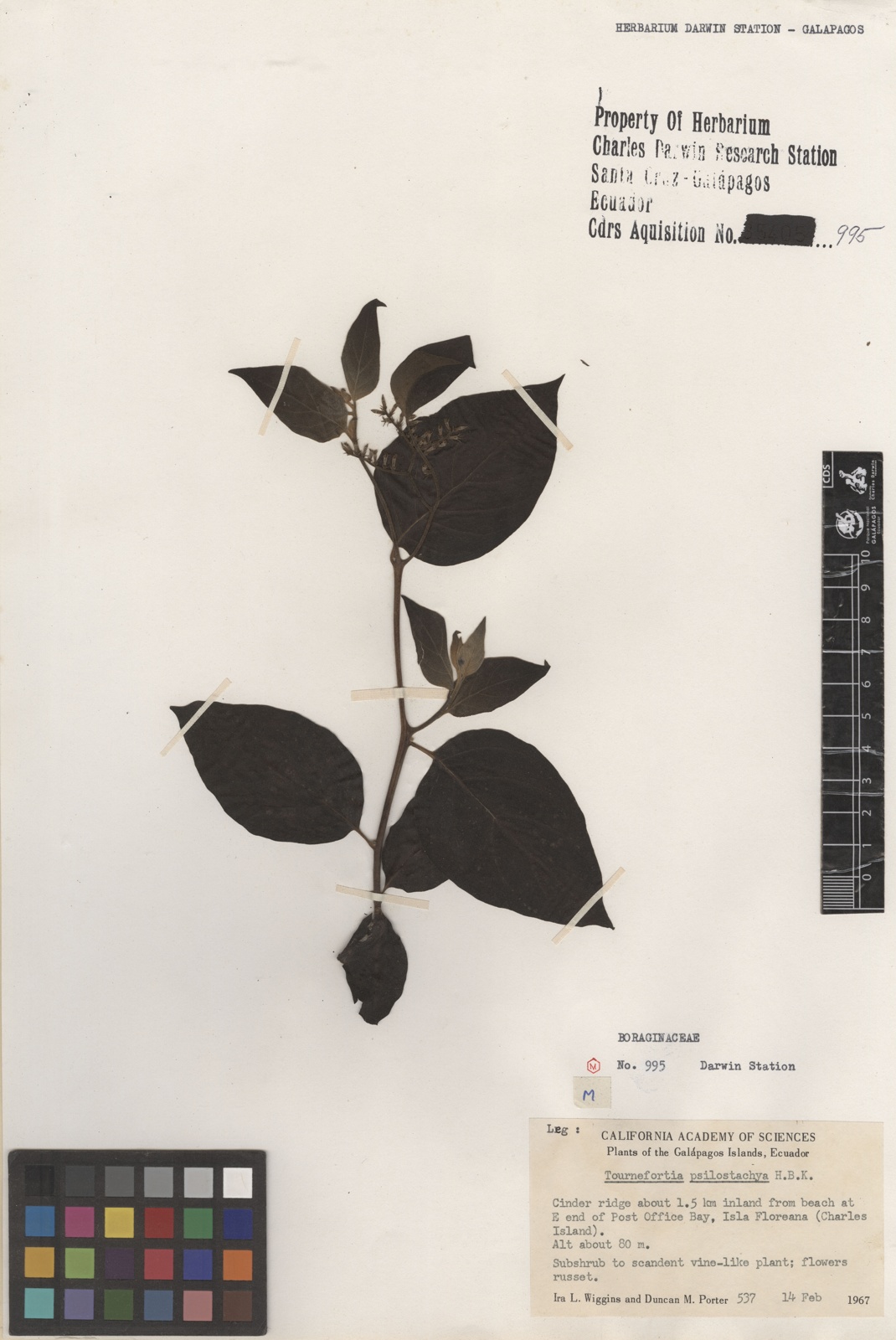
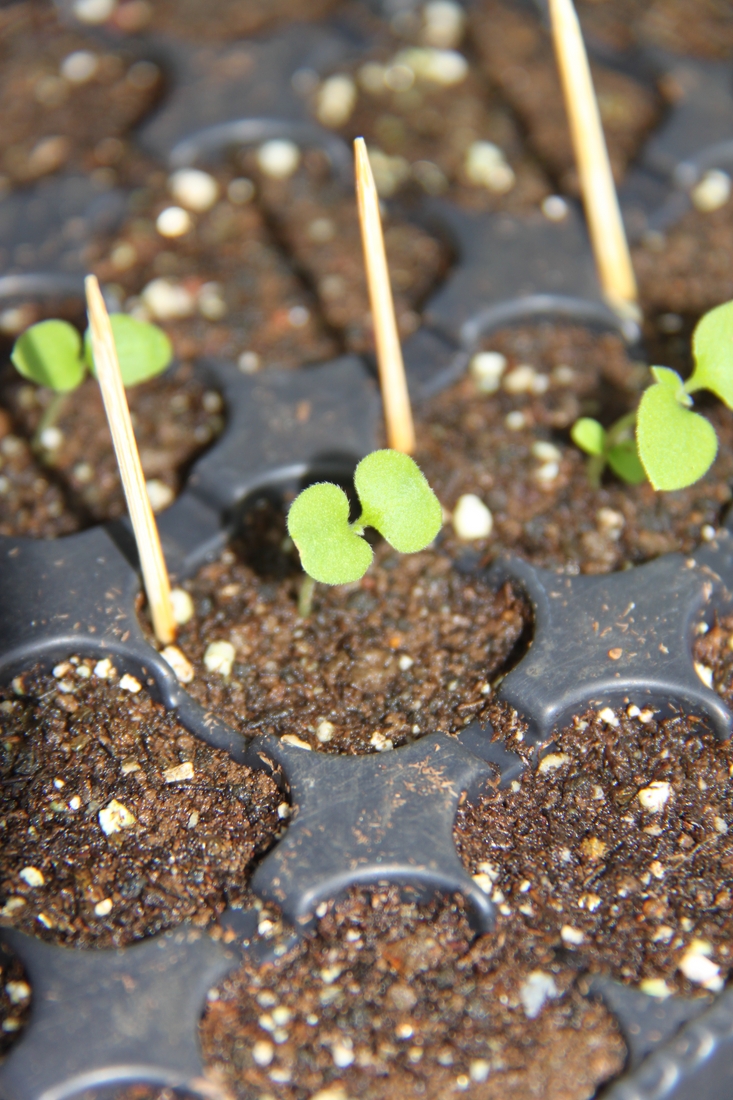

A disorganised shrub. The leaves are green-grey, the flowers look like small starfish. The fruit are an attractive bright orange colour.
Common name is palito negro or “black stick” which refers to the older branches that have a distinctive dark brown to black color. Prefers arid lowlands (McMullen 1999).
Domain
Eukaryota
Kingdom
Plantae
Phylum
Magnoliophyta
Class
Magnoliopsida (= Dicotyledoneae)
Order
Lamiales
Family
Boraginaceae
Genus
Tournefortia
Species
psilostachya
Taxon category: Accepted
Syn.: Tournefortia difformis Andersson, T. strigosa Andersson, fide Royal Botanic Gardens, Kew & Missouri Botanical Garden (2010). In Hooker (1874) as Tournefortia psilostachys.
Taxon origin: Native
Map of specimen collection localities or observation records for this species in our collections database.
Distribution: The native range of this species is Galápagos, mainland Ecuador and Ecuador (POWO, 2023).
- Wiggins, I.L. Porter, D.M. (1971) Flora of the Galapagos Islands Standford University Press, Stanford.
- Lawesson, J.E. (s.a.) Pers. obs. field notes, collections 1985-7.
- Schofield, E.K. (1984) Plants of the Galapagos Islands. Field Guide and Travel Journal. Universe Books, New York, 159 pp.
- Mauchamp, A. (1995) Informe de viaje de campo a Darwin y Wolf. Inventario sistematico de la flora y fauna de las islas. Charles Darwin Research Station, unpublished.
- Jaramillo, P. (1998) Distribución Espacial de la Vegetación Vascular y Dispersión de Especies Introducidas dentro del Parque Nacional Galápagos. Tesis de Doctorado en Biología, Universidad Central del Ecuador. Especialización ECOLOGIA DE POBLACIONES.
- Jørgensen, P.M. León-Yánez, S. (eds.) (1999) Catalogue of the Vascular Plants of Ecuador. Monographs in Systematic Botany from the Missouri Botanical Garden 75. Missouri Botanical Garden Press, St. Louis, 1181 pp.
- McMullen, C.K. (1999) Flowering plants of the Galapagos. Cornell University Press, Ithaca and London, 370 pp.
- Hooker, J.D. (1847) An Enumeration of the Plants of the Galapagos Archipelago; with descriptions of those which are new. Transactions of the Linnean Society of London 20: 163-233.
- Tropicos.org. (2017) Database of Missouri Botanical Garden. Tropicos.org. Missouri Botanical Garden. 06 Oct 2017 <http://www.tropicos.org
- Atkinson, R. Guézou, A. & Jaramillo, P. (2009) Siémbrame en tu jardín - Plantas nativas para jardines en Galápagos. Fundación Charles Darwin, Puerto Ayora, Galápagos, Ecuador, 151 pp.
- Royal Botanic Gardens, Kew Missouri Botanical Garden (eds.) (2013) The Plant List, Version 1.1. Published on the Internet; http://www.theplantlist.org/ (accessed 1st January).
- Andersson, N.J. (1855) Om Galápagos Öarnes Vegetation. Kongliga Svenska Vetenskaps Akademien Handl., Stockholm: 61-256.
- Robinson, B.L. (1902) Flora of the Galapagos Islands. Papers from the Hopkins-Stanford Expedition to the Galapgaos Islands. Proc. Amer. Acad. 38(4): 78-270.
- Stewart, A. (1911) A botanical survey of the Galápagos Islands. Proc. Calif. Acad. Sci. 4th Series, 1: 7-288.
- Christophersen, E. (1932) A Collection of Plants from the Galápagos Islands. Nyt Mag. Naturvidenskaberne 70: 67-95.
- Svenson, H.K. (1935) Plants of the Astor Expedition, 1930 (Galapagos and Cocos Islands). Am. J. Bot. 22: 208-277.
- Itow, S. (1997) List of Plant Specimens collected in the Galápagos Islands, Ecuador. Bulletin of the Faculty of Liberal Arts, Nagasaki University, Natural Science, 38 (1): 53-144.
- Andersson, N.J. (1861-1862) Ueber Die Vegetation der Galapagos-Inseln Linnaea 31: 571-631
- Guerrero, A. Tye, A. (2009) Darwin's Finches as seed predators and dispersers. The Wilson Journal Of Ornithology 121 (4):752-764, 2009
- Heleno, R. Blake, S., Jaramillo, P., Traveset, A., Vargas, P. & Nogales, M. (2011) Frugivory and seed dispersal in the Galápagos: what is the state of the art? Integrative Zoology 6: 110-128.
- McMullen, C.K. (1987) Biologia reproductiva de las Angiospermas de las Islas Galapágos. Pg. 39 - 52. Memorias: Taller sobre investigación Botànica y manejo en galapágos.
- Fosberg, F. R. (1987) Vegetación inalterada en Fernandina, 1964 Memorias. Investigación Botánica y Manejo en Galápagos. Pg. 66-74
- Cayot, L. J. (1987) Ecology of Giant Tortoise (Geochelone elephantopus)in the Galápagos Islands. Submitted in partial fulfillment of the requirements for the degree of Doctor of Philosophy in Biology in the Graduate School of Syracuse University.
- Royal Botanic Gardens, Kew (2022) Plants of the world online POWO (2022): Plants of the world online. Published on the Internet; Https://powo.science.kew.org/

